How to Achieve a Good Life? Essay
Introduction, a good life, moral virtues.
Life is a mode of existence and it reflects the experiences of living that characterize human beings whether they are good or bad. It is confounding to describe what a good life is, since it applies to both material life and moral life. For instance, having immense wealth and ability to enjoy every form of pleasure that ever existed on earth can mean that one is living a good life.
On the other hand, living in accordance with the social, religious, and personal morals and ethics means that one is also living a good life. The latter description of good life applies across the board since everybody has the ability to achieve it for everyone has the capacity to think and act morally. This essay explores what a good life is and describes plan of achieving it in terms of integrity, honesty, responsibility, and state obligation.
Living a good life morally means living in accordance with the ethics and morals of the society. A person living a good life expresses virtues such integrity, honesty, responsibility, and obligation to the rules of the state. Although human beings pursue material and intellectual gains as they struggle towards self-actualization, these gains cannot earn them the virtue of being good, but they will rather pass for hardworking individuals.
The rich people have wealth because of their hardworking character and they can access good things of life that bring happiness and pleasure, and live a good life materially; nevertheless, this does not make them good. A poor person can live a miserable life of poverty but with good moral life, while on the contrary, a rich person can live a good life of pleasure and happiness, but with bad moral life. Therefore, when “good” describes virtues, pleasure and happiness due to money cannot make life good.
Morals and ethics that individuals observe to express virtues in life cause them to lead a good life. Integrity and honesty are two virtues that enhance people’s lives and they are inseparable because one cannot have integrity without being honesty or vice versa. Educationally, integrity is a skill that demands learning and continued practice in order to internalize the virtue.
The development of integrity is a life-long process that needs patience and endurance since it is a skill. If likened to a building, honesty and truth are two central pillars that support integrity as a virtue throughout the life of an individual. To develop this virtue of integrity in life, one must always adhere to its two pillars, because integrity is not a discrete achievement but a continuous achievement that needs constant efforts to maintain it.
Responsibility is a powerful virtue which if exercised well by an individual, it does not only yield great benefits to the individual, but also to other people and the entire society. The golden rule demands that there must be reciprocal responsibility in the society to enable people live harmoniously.
Sense of responsibility in the society lessens the impacts of problems experienced because of collective response that lead to immediate solution. Becoming part of the solution in the society is being responsible and the excuse of blaming others would not arise. Since rights and responsibility relate to one another, it requires one to act within the limits of rights to become responsible. Therefore, the rights that govern social norms and regulations give one the degree of responsibility to struggle and attain good life for the benefit of all.
Citizens have a moral obligation to respect and advocate for the common interests of all people. For justice and peace to flourish in the society, citizens have great moral obligation to ensure they report criminal activities, help the poor, and conserve the environment. By doing this, they foster their states’ bid to build justice and a peace in society where virtues spring up, and thus a good life.
Like responsibility, adherence to the laws of the land will enable one to develop a sense of obligation to the state. It is a great obligation of the citizens to help the state fight vices in the society and the best way to do it is by becoming loyal to the laws and being active in enforcing them. The concerted efforts of the state and its citizens will improve the lives of the people resulting into a good life.
To achieve good life based on observance of moral principles demands strict observance and application of ethics in everything. Complete observance of ethics yields virtues that make life good in any community.
The goodness of a person cannot result from material wealth, but it emerges from the good moral qualities that one has achieved in life. Virtues like integrity, honesty, responsibility, and obligation to the state are attributes of an individual and have no material value attached to them. This means that, a good life does not mean wealthy living.
- Chicago (A-D)
- Chicago (N-B)
IvyPanda. (2023, November 2). How to Achieve a Good Life? https://ivypanda.com/essays/life/
"How to Achieve a Good Life?" IvyPanda , 2 Nov. 2023, ivypanda.com/essays/life/.
IvyPanda . (2023) 'How to Achieve a Good Life'. 2 November.
IvyPanda . 2023. "How to Achieve a Good Life?" November 2, 2023. https://ivypanda.com/essays/life/.
1. IvyPanda . "How to Achieve a Good Life?" November 2, 2023. https://ivypanda.com/essays/life/.
Bibliography
IvyPanda . "How to Achieve a Good Life?" November 2, 2023. https://ivypanda.com/essays/life/.
- Observance, Privacy and Law
- Ethical Issues in Non-Observance of Working Hours
- The Consistency of Beliefs, Honesty With Others, Professional Integrity
- Academic Honesty Importance
- Identity: Definition and Analysis
- Lessons from the dreams of peace
- The Importance of Academic Honesty
- Dubai Enterprises: 9 Pillars of Corporate Governance
- Aristotle’s Account of Pleasure
- The Five Pillars of Islam
- Aristotle’s Ethical Theory
- Pro-Life and Pro-Choice Sides of Abortion
- Which is Basic in Ethics: Happiness or Obligation
- The NAEYC Code of Ethical Conduct
- Moral Dilemma Between the Right Thing to Do and What Is Good Argumentative
Home — Essay Samples — Life — Quality of Life — Living a Good Life

Living a Good Life
- Categories: Quality of Life
About this sample

Words: 579 |
Published: Mar 20, 2024
Words: 579 | Page: 1 | 3 min read
Table of contents
Physical well-being, mental well-being, meaningful relationships, personal growth.

Cite this Essay
Let us write you an essay from scratch
- 450+ experts on 30 subjects ready to help
- Custom essay delivered in as few as 3 hours
Get high-quality help

Verified writer
- Expert in: Life

+ 120 experts online
By clicking “Check Writers’ Offers”, you agree to our terms of service and privacy policy . We’ll occasionally send you promo and account related email
No need to pay just yet!
Related Essays
7 pages / 3125 words
7 pages / 3269 words
2 pages / 694 words
6 pages / 2752 words
Remember! This is just a sample.
You can get your custom paper by one of our expert writers.
121 writers online
Still can’t find what you need?
Browse our vast selection of original essay samples, each expertly formatted and styled
Related Essays on Quality of Life
What truly constitutes a good life? Is it about wealth, success, relationships, or something else entirely? These are questions that have intrigued philosophers, psychologists, and individuals across different cultures for [...]
In today’s fast-paced and demanding world, the importance of self-care and wellness cannot be overstated. As a college student, it is crucial to prioritize your physical, mental, and emotional well-being in order to navigate the [...]
Quality of life is a multifaceted concept that encompasses the well-being, satisfaction, and overall contentment experienced by individuals and communities. It is a subjective measure influenced by a myriad of factors that [...]
In crafting this leadership application essay, I am prompted to reflect on the formative experiences that have shaped my leadership abilities and underscore my aspiration to serve as a peer leader. As the oldest boy among four [...]
Since its first publication in 1667, Milton’s Paradise Lost has continued to exert its influence over literature, having particular resonance with the romantics, Wordsworth citing it as among ‘the grand store-houses of [...]
A commonality among most of the human race is the fear of what aging does to the body. Crafting a character famous for a sharp mind, not for bodily infirmity, Arthur Conan Doyle brought Sherlock Holmes to life and into the homes [...]
Related Topics
By clicking “Send”, you agree to our Terms of service and Privacy statement . We will occasionally send you account related emails.
Where do you want us to send this sample?
By clicking “Continue”, you agree to our terms of service and privacy policy.
Be careful. This essay is not unique
This essay was donated by a student and is likely to have been used and submitted before
Download this Sample
Free samples may contain mistakes and not unique parts
Sorry, we could not paraphrase this essay. Our professional writers can rewrite it and get you a unique paper.
Please check your inbox.
We can write you a custom essay that will follow your exact instructions and meet the deadlines. Let's fix your grades together!
Get Your Personalized Essay in 3 Hours or Less!
We use cookies to personalyze your web-site experience. By continuing we’ll assume you board with our cookie policy .
- Instructions Followed To The Letter
- Deadlines Met At Every Stage
- Unique And Plagiarism Free
What Is The Good Life & How To Attain It

Yet with more than 8 billion people on this planet, there are probably just as many opinions about what the good life entails.
Positive psychology began as an inquiry into the good life to establish a science of human flourishing and improve our understanding of what makes life worth living (Lopez & Snyder, 2011).
We will begin this article by exploring definitions of the good life, before presenting a brief history of philosophical theories of the good life. Then we’ll introduce a few psychological theories of the good life and methods for assessing the quality of life, before discussing how you can apply these theories to live a more fulfilling life.
Before you continue, we thought you might like to download our three Happiness & Subjective Wellbeing Exercises for free . These detailed, science-based exercises will help you or your clients identify sources of authentic happiness and strategies to boost wellbeing.
This Article Contains:
What is the good life, what is the good life in philosophy, theories about the good life, assessing your quality of life, how to live the good life, positivepsychology.com resources, a take-home message.
The word ‘good’ has a very different meaning for very many people; however, there are some aspects of ‘the good life’ that most people can probably agree on such as:
- Material comfort
- Engagement in meaningful activities/work,
- Loving relationships (with partners, family, and friends)
- Belonging to a community.
Together, a sense of fulfillment in these and other life domains will lead most people to flourish and feel that life is worth living (Vanderweele, 2017).
However, the question ‘what is the good life?’ has been asked in many fields throughout history, beginning with philosophy. Let’s look at where it all began.

According to Socrates
Interestingly enough, the ancient Greek philosopher Socrates never wrote anything down. His student Plato reported his speeches in published dialogues that demonstrate the Socratic method. Key to Socrates’ definition of the good life was that “the unexamined life is not worth living” (Ap 38a cited in West, 1979, p. 25).
Socrates argued that a person who lives a routine, mundane life of going to work and enjoying their leisure without reflecting on their values or life purpose had a life that wasn’t worth living.
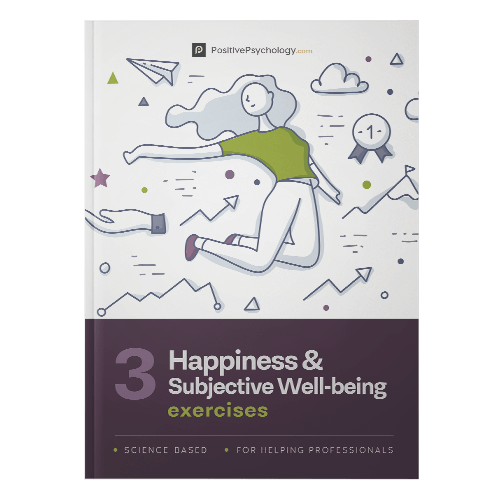
Download 3 Free Happiness Exercises (PDF)
These detailed, science-based exercises will equip you or your clients with tools to discover authentic happiness and cultivate subjective well-being.
Download 3 Free Happiness Tools Pack (PDF)
By filling out your name and email address below.
- Email Address *
- Your Expertise * Your expertise Therapy Coaching Education Counseling Business Healthcare Other
- Phone This field is for validation purposes and should be left unchanged.
According to Plato
Plato’s view of the good life was presented in The Republic (Plato, 380-375 BCE/2007) and supported the views of his teacher, Socrates. The Republic examines virtue and the role of philosophy, community, and the state in creating the conditions needed to live well.
In this dialogue, Socrates is asked why a person ought to be virtuous to live a good life, rather than merely appear to be virtuous by cultivating a good reputation. Socrates answers that the good life doesn’t refer to a person’s reputation but to the state of a person’s soul.
The role of philosophy is essential because philosophers are educated in using reason to subdue their animal passions. This creates noble individuals who contribute to a well-ordered and humane society. A person who is unable to regulate their behavior will be unstable and create suffering for themselves and others, leading to a disordered society.
Therefore, educated reason is crucial for cultivating virtuous conduct to minimize human suffering, both individually and socially. For Socrates and Plato, rational reflection on the consequences of our actions is key to establishing virtuous conduct and living the good life, both inwardly and outwardly.
For a fuller account check out the Wireless Philosophy video by Dr. Chris Surprenant below.
According to Aristotle
For Plato’s student Aristotle, the acquisition of both intellectual and character virtues created the highest good, which he identified with the Greek word eudaimonia , often translated as happiness (Aristotle, 350 BCE/2004).
Aristotle believed a person achieves eudaimonia when they possess all the virtues; however, acquiring them requires more than studying or training. External conditions are needed that are beyond the control of individuals, especially a form of state governance that permits people to live well.
It was Aristotle’s option that state legislators (part of Greek governance) should create laws that aim to improve individual character, which develops along a spectrum from vicious to virtuous. To cultivate virtue, reason is required to discern the difference between good and bad behavior.
For more on Aristotle’s version of the good life, click out the Wireless Philosophy video by Dr. Chris Surprenant below.
According to Kant
Immanuel Kant was a Prussian-born German philosopher active during the Enlightenment period of the late 18th century (Scruton, 2001). He is best known for his seminal contributions to ethics, moral philosophy, and metaphysics.
For Kant, a capacity for virtue is unique to human beings, because the ability to resist bodily desires requires the exercise of reason. Kant claims that human reason makes us worthy of happiness by helping us become virtuous (Kant, 1785/2012).
Kant’s argument describes the relationship between morality, reason, and freedom. One necessary condition of moral action is free choice.
An individual’s action is freely chosen if their reasoning determines the right course of action. Conduct is not freely chosen if it is driven by bodily desires like hunger, lust, or fear, or behavioral coercion that applies rewards and punishments to steer human actions.
For Kant, individuals should act only if they can justify their action as universally applicable, which he termed the categorical imperative (Kant, 1785/2012). He argued that all our behavioral choices can be tested against the categorical imperative to see if they are consistent with the demands of morality. If they fail, they should be discarded.
A virtuous person must exercise reason to identify which principles are consistent with the categorical imperative and act accordingly. However, Kant claimed that reason can only develop through education in a civilized society that has secured the external conditions required for an individual to become virtuous.
For example, an individual who lives in fear of punishment or death lacks the freedom required to live virtuously, therefore authoritarian societies can never produce virtuous individuals. Poverty also erodes an individual’s freedom as they will be preoccupied with securing the means of survival.
For a deeper examination of these ideas view the Wireless Philosophy video by Dr. Chris Surprenant below.
According to Dr. Seligman
Dr. Martin Seligman is widely regarded as one of the founding fathers of positive psychology. For Seligman, the good life entails using our character strengths to engage in activities we find intrinsically fulfilling, during work and play and in our relationships.
For Seligman, ‘the good life’ has three strands,
- Positive emotions
- Eudaimonia and flow
Dr. Seligman’s work with Christopher Peterson (Peterson & Seligman, 2004) helped to develop the VIA system of signature strengths . When we invest our strengths in the activities of daily living, we can develop the virtues required to live ‘the good life’; a life characterized by positive emotional states, flow, and meaning.
Here is a video to learn more from Dr. Seligman about how cultivating your unique strengths is essential for living the good life.
Theories about what constitutes the good life and how to live it abound. This section will look at some of the most recent psychological theories about what contributes to the good life.
Set-Point Theory
Set-point theory argues that while people have fluctuating responses to significant life events like getting married, buying a new home, losing a loved one, or developing a chronic illness, we generally return to our inner ‘set point’ of subjective wellbeing (SWB) after a few years (Diener et al., 1999). This is largely inherited and tied in with personality type.
In terms of the Big Five personality traits , those predisposed to neuroticism will tend more toward pessimism and negative perceptions of events, while those who are more extroverted and open to experience will tend more toward optimism.
According to set-point theory, the efforts we make to achieve our life goals will have little lasting effect on our overall SWB given we each have our own ‘happiness set point’ (Lyubomirsky, 2007).
Furthermore, set point theory suggests that there’s little we can do for people who have been through a difficult time like losing their spouse or losing their job because they will eventually adapt and return to their previous set point.
This implies that helping professionals who believe they can improve people’s SWB in the longer term may be misguided. Or does it?
Other research provides evidence that achieving life goals can have a direct effect on a person’s overall contentment (Sheldon & Lyubomirsky, 2021). Specifically, pursuing non-competitive goals such as making a family, building friendships, helping others in our community, and engaging in social justice activities improve our sense of wellbeing.
On the other hand, pursuing competitive life goals like building a career and monetary wealth exclusively undermines SWB.
For set-point theory, the good life depends more on innate personality traits than education. For a surprising account of this, using a practical example, view the video below.
Life-Satisfaction Theory
Typically, life satisfaction refers to a global evaluation of what makes life worth living rather than focusing on success in one area of life like a career or intimate relationship, or the fleeting sense of pleasure we often call happiness (Suikkanen, 2011).
However, there tend to be two dominant theories of what causes life satisfaction: bottom-up theories and top-down theories.
Bottom-up theories propose that life satisfaction is a consequence of a rounded overall sense of success in highly valued life domains . Valued life domains differ from person to person. For a professional athlete, sporting achievement may be highly valued, while for a committed parent having a good partnership and stable family life will be super important (Suikkanen, 2011).
Of course, these are not mutually exclusive. For most people, multiple life domains matter equally. However, if we are satisfied with the areas that we value, a global sense of life satisfaction results (Suikkanen, 2011).
Top-down theories propose that our happiness set-point has a greater influence on life satisfaction than goal achievement. In other words, personality traits like optimism have a positive impact on a person’s satisfaction with life regardless of external circumstances, whereas neuroticism undermines contentment.
The debate continues, and life satisfaction is likely influenced by a combination of nature and nurture as with other areas of psychology (Suikkanen, 2011). You can read an extended discussion of the evidence in our related article on life satisfaction .
So, while life satisfaction is associated with living a good life, it’s not necessarily related to education, the exercise of reason, or the cultivation of virtues as proposed by the philosophers mentioned above. For example, a successful financial criminal may be highly satisfied with life but would be deemed a corrupt human being by such lofty philosophical standards.
Hedonic treadmill
Meanwhile, the concept of the hedonic treadmill proposes that no matter what happens, good or bad, a person will eventually return to their baseline emotional state. For example, if someone gets married, moves to a new home, is promoted, loses a job, or is seriously injured in an accident, eventually, they will default to their innate set point (Sheldon & Lyubomirsky, 2012).
This has also been termed hedonic adaptation theory (Diener et al., 2006). It means that no matter how hard we chase happiness or try to avoid suffering, ultimately, our innate tendencies toward pessimism or optimism return us to our baseline level, either dysphoria or contentment (Lyubomirsky et al., 2005).
If you tend to see the glass as half empty rather than half full, don’t be discouraged, because recent research by Sheldon and Lyubomirsky (2021) acknowledges that while we each have a happiness set point, we can also cultivate greater happiness. We’ve offered some tips in the ‘how to’ section below.

Nevertheless, assessing the quality of life has led to an abundance of international research using quality of life indicators (QoLs) in a variety of scales and questionnaires (Zheng et al., 2021).
Gill and Feinstein identified at least 150 QoL assessment instruments back in the mid-1990s (Gill & Feinstein, 1994). Since then, scales have been refined to measure the quality of life in relation to specific health conditions, life events, and demographic factors like age, ethnicity, and socioeconomic status (Zheng et al., 2021).
Our article Quality of Life Questionnaires and Assessments explains this in more detail and guides you on how to choose the best instrument for your clients.
Meanwhile, the Organisation for Economic Co-operation and Development ( OECD ) has developed the Better Life Index to measure how people from different demographics define a high quality of life. You can find out more in the brief video below.
How can each of us live the good life today given our array of differences? Below are five steps you can take to clarify what the good life means to you, and how you can apply your strengths to set goals that will lead to greater fulfillment.
1. Clarify your values
Clarifying what is important to you helps invest your life with meaning. Download our values clarification worksheet to get started.
2. Identify valued life domains
Investing in activities in valued life domains is intrinsically rewarding. Download our valued life domains worksheet to find out more.
3. Invest in your strengths
You can find out your character strengths by taking the free survey here . Playing to your strengths helps you overcome challenges and achieve your goals leading to greater life satisfaction. Read our article about how to apply strengths-based approaches to living well.
4. Set valued goals
Finally, we all benefit when we set goals and make practical plans to achieve them. Try our setting valued goals worksheet for guidance.
5. Ensure high-quality relationships
Healthy relationships with partners, family, friends, and colleagues are essential for living the good life and achieving your goals. To assess the quality of your relationships, take a look at our article on healthy relationships with free worksheets.
You can also look at our healthy boundaries article with more free resources. Healthy boundaries support you in living the good life in all life domains, while poor boundaries will leave you feeling unfulfilled.
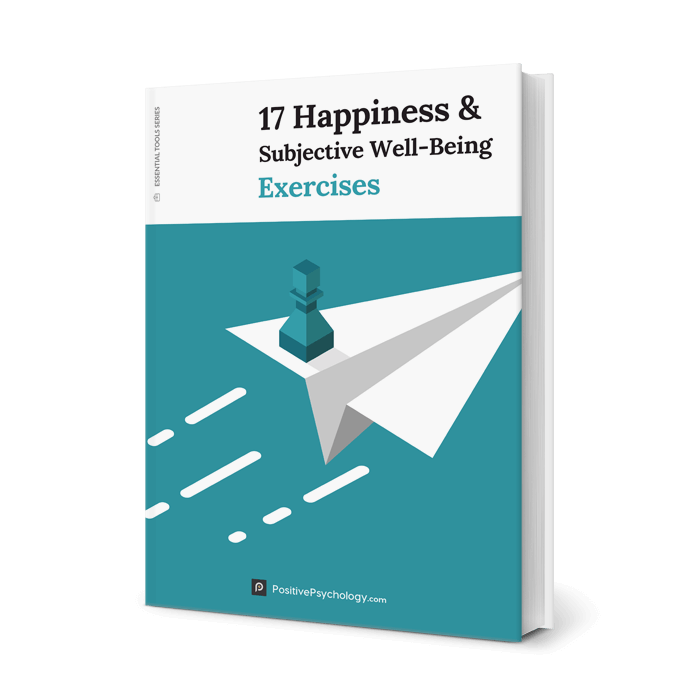
17 Exercises To Increase Happiness and Wellbeing
Add these 17 Happiness & Subjective Well-Being Exercises [PDF] to your toolkit and help others experience greater purpose, meaning, and positive emotions.
Created by Experts. 100% Science-based.
We have an excellent selection of resources you might find useful for living the good life.
First, take a look at our Meaning & Valued Living Masterclass for positive psychology practitioners. This online masterclass follows a practical process of identifying values, investing in strengths and then applying them to living a more fulfilled life.
In addition, we have two related articles for you to enjoy while exploring the role of meaning in the good life:
- Realizing Your Meaning: 5 Ways to Live a Meaningful Life
- 15 Ways to Find Your Purpose of Life & Realize Your Meaning
Next, we have an article explaining the role of human flourishing in living the good life.
- What Is Flourishing in Positive Psychology? (+8 Tips & PDF)
Finally, we have an article on how to apply values-driven goal-setting to living the good life.
- How to Set and Achieve Life Goals The Right Way
We also have worksheets you may find useful aids to living the good life:
Our How Joined Up is Your Life? worksheet can help your client identify their interests and passions, assess how authentically they are living their life, and identify any values that remain unfulfilled.
This Writing Your Own Mission Statement worksheet can help clients capture what they stand for, their aims, and objectives. Having a personal mission statement can be useful to return to periodically to assess our alignment with our values and goals.
Finally, this How to Get What You Deserve in Life worksheet can help clients identify what they want as well as justify why they deserve a good life.
If you’re looking for more science-based ways to help others develop strategies to boost their wellbeing, this collection contains 17 validated happiness and wellbeing exercises . Use them to help others pursue authentic happiness and work toward a life filled with purpose and meaning.
We all want to live the good life, whatever that means to us individually. The concept has preoccupied human beings for millennia.
If you currently struggle, which we all do at different times, we hope you’ll consider trying some of the science-based strategies suggested above to steer your way through.
All the evidence we have shared above shows that you can improve your life satisfaction and subjective wellbeing by living in line with your values. But you have to be clear about what’s important to you.
Values-based living invests your life with more meaning and purpose and is key to living the good life.
We hope you enjoyed reading this article. Don’t forget to download our three Happiness Exercises for free .
- Aristotle. (2004). Nicomachean ethics (Tredennick, H & Thomson, J.A.K., Trans.). Penguin. Original work published 350 BCE.
- Diener, E., Lucas, R. E., & Scollon, C. N. (2006). Beyond the hedonic treadmill: Revising the adaptation theory of well-being. American Psychologist , 61(4), 305–314.
- Diener, E., Suh, E. M., Lucas, R. E., & Smith, H. L. (1999). Subjective well-being: Three decades of progress. Psychological Bulletin , 125(2), 276–302.
- Gill, T. M., & Feinstein, A. R. (1994). A critical appraisal of the quality of quality-of-life measurements . Jama, 272(8), 619-626.
- Kant, I. (2012). Groundwork of the metaphysics of morals . Cambridge University Press. Original work published 1785.
- Lopez, S. L. & Snyder, C. R. (2011). The Oxford handbook of positive psychology . Oxford University Press.
- Lyubomirsky, S., Sheldon, K. M., & Schkade, D. (2005). Pursuing happiness: The architecture of sustainable change. Review of General Psychology , 9, 111–131.
- Lyubomirsky, S. (2007). The how of happiness: A scientific approach to getting the life you want . Penguin.
- Plato. (2007). The Republic (D. Lee, Trans.; 2nd ed.). Penguin. Original work published 380-375 BCE.
- Peterson, C., & Seligman, M. E. (2004). Character strengths and virtues: A handbook and classification (Vol. 1). Oxford University Press.
- Scruton, R. (2001). Kant: A very short introduction . Oxford.
- Sheldon, K. M., & Lyubomirsky, S. (2012). The challenge of staying happier: Testing the hedonic adaptation prevention model. Personality and Social Psychology Bulletin , 38(5), 670–680.
- Sheldon, K. M., & Lyubomirsky, S. (2021). Revisiting the sustainable happiness model and pie chart: Can happiness be successfully pursued? The Journal of Positive Psychology , 16(2), 145–154.
- Suikkanen, J. (2011). An improved whole life satisfaction theory of happiness. International Journal of Wellbeing , 1(1), 149-166
- Vanderweele, T. J. (2017). On the promotion of human flourishing. Proceedings of the National Academy of Sciences of the United States of America , 114(31), 8148–8156.
- West, T. G. (1979). Plato’s “Apology of Socrates”: an interpretation, with a new translation . Cornell University Press.
- Zheng, S., He, A., Yu, Y., Jiang, L., Liang, J. & Wang, P. (2021). Research trends and hotspots of health-related quality of life: a bibliometric analysis from 2000 to 2019. Health and Quality of Life Outcomes 19 , 130.

Share this article:
Article feedback
What our readers think.
For me a happy life is having the necessary things to have a good life in the physical aspect, economic aspect ,social aspect, achievement and also family, love and health . The luxuries are also good but they are extra things in life. The most important thing in life is love and peace.
This article made my day. Thank you for putting it together.
I lost approximately 14,000 dollars because of a bank fraud. This money is a product of my hardwork as a nurse and I have been saving it so I have a money when I travel back to be with partner. And the bank refused to refund my money. This incidence has made me feel devastated about life. It affected me emotionally and mentally. But I tried to contain this emotion for a few months and avoided to work and avoided my friends. But I am lucky that my parents, my sisters and especially my partner have been very supportive and understanding to me. They showed me the love and care I needed especially those tough times. Only a few days ago that I realised I should start to help myself and this is why I started to listen to a different talks and read articles that will help me to stay positive in life. Having this article read, it reminded me that I should be grateful that I am surrounded with great people. So thank you for sharing this article and making it accessible to everyone.
Let us know your thoughts Cancel reply
Your email address will not be published.
Save my name, email, and website in this browser for the next time I comment.
Related articles

Embracing JOMO: Finding Joy in Missing Out
We’ve probably all heard of FOMO, or ‘the fear of missing out’. FOMO is the currency of social media platforms, eager to encourage us to [...]

The True Meaning of Hedonism: A Philosophical Perspective
“If it feels good, do it, you only live once”. Hedonists are always up for a good time and believe the pursuit of pleasure and [...]

Happiness Economics: Can Money Buy Happiness?
Do you ever daydream about winning the lottery? After all, it only costs a small amount, a slight risk, with the possibility of a substantial [...]
Read other articles by their category
- Body & Brain (50)
- Coaching & Application (57)
- Compassion (26)
- Counseling (51)
- Emotional Intelligence (24)
- Gratitude (18)
- Grief & Bereavement (21)
- Happiness & SWB (40)
- Meaning & Values (26)
- Meditation (20)
- Mindfulness (45)
- Motivation & Goals (45)
- Optimism & Mindset (34)
- Positive CBT (29)
- Positive Communication (20)
- Positive Education (47)
- Positive Emotions (32)
- Positive Leadership (18)
- Positive Parenting (4)
- Positive Psychology (33)
- Positive Workplace (37)
- Productivity (17)
- Relationships (46)
- Resilience & Coping (37)
- Self Awareness (21)
- Self Esteem (38)
- Strengths & Virtues (32)
- Stress & Burnout Prevention (34)
- Theory & Books (46)
- Therapy Exercises (37)
- Types of Therapy (64)

- Name This field is for validation purposes and should be left unchanged.
3 Happiness Exercises Pack [PDF]
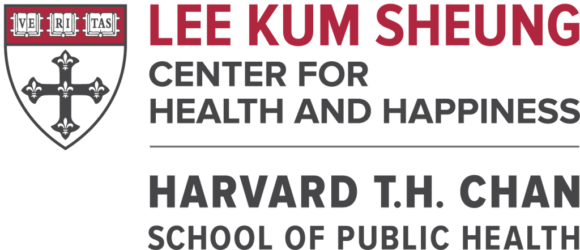
The Good Life: A Discussion with Dr. Robert Waldinger
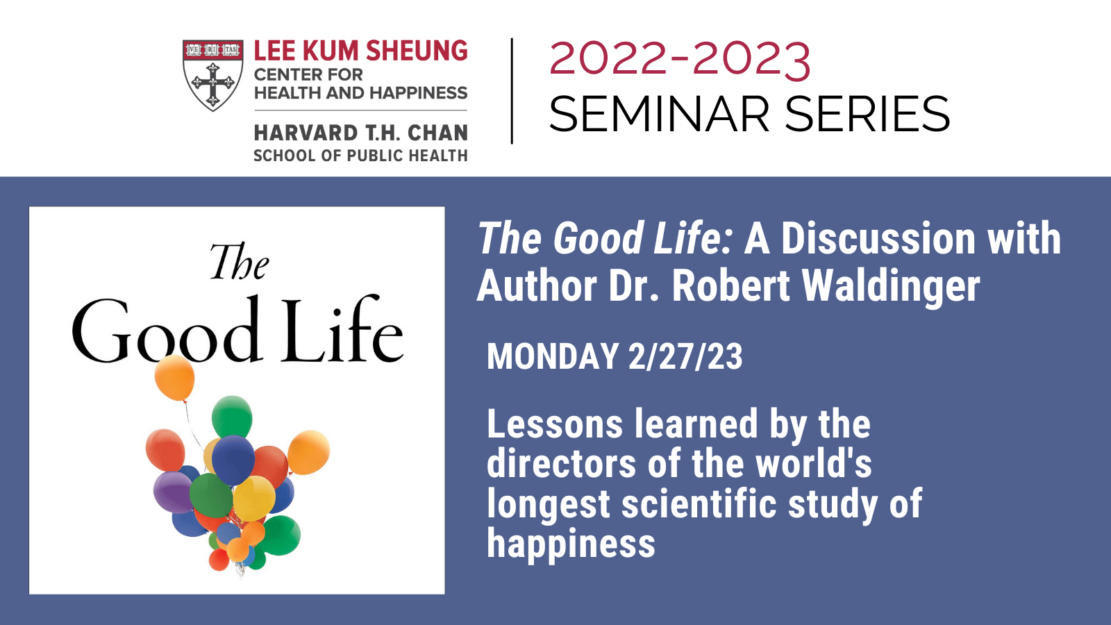
Dr. Waldinger began by exploring what people think makes a good life. Many across the world, especially millennials, believe that the answer can be found with fame and fortune. In a recent survey of millennials, when asked what they wanted in their adult life, over 80% said they wanted to get rich, 50% said they wanted to get famous, and 50% said they wanted high career achievements.
However, studies show that as many western countries, including the US, have become wealthier, general happiness levels have decreased . $75,000 a year average household income is the level at which happiness seems to peak— the level at which the basic economic needs of food, housing, healthcare, child support, etc. can be met. When people’s annual income became higher than that sum, their happiness levels didn’t go up much. The difference between $75,000 and $75 million was hardly significant.
Dr. Waldinger believes that the reason many hold this false belief in the power of money to improve happiness is because the good life is defined for us, not by us . This is a result of the digital revolution, social media, unrealistic standards, and omnipresent advertising. Ads tell us that consumption ought to make us happy, that we ought to look and act a certain way. We judge our everyday lives against the curated lives of others, and young people, who are more deeply entrenched in digital media than any generation before them, are particularly vulnerable to this constant self-comparison. “As a mentor of mine once said,” stated Dr. Waldinger, “‘ we are always comparing our insides to other people’s outsides. ’”
The Harvard Study of Adult Development
So what do we really need for a good life? As Director of the Harvard Study of Adult Development, Dr. Waldinger was ideally placed to search for an answer. This 85-year study started in 1938 as two studies. One followed a group of 19-year-old Harvard students, while the other followed a younger group of juvenile delinquents. Both groups were exclusively white, male, and based out of Boston. The two studies were combined to make up a group of 725 men. As time passed, their wives were brought into the study, and then their children. The group even included John F Kennedy. Participants’ physical, mental, and emotional health were studied. They were photographed, audiotaped, and videotaped. Their blood was drawn, their brains were scanned, and their DNA was studied.
The study found that the people who stayed healthiest and lived longest were the people who had the strongest connections to others . The warmth of these connections had a direct positive impact on their health and well-being. Good relationships meant participants were less likely to develop heart disease, diabetes, or arthritis. Broader social networks and more social activity resulted in later onset and slower rates of cognitive decline. The study even found that married people lived longer—an average of 5-12 years longer for women, and 7-17 years longer for men .
Interestingly, the study also found that participants became happier as they aged . From middle age onward, participants paid more attention to positive information than negative information, remembered the past more positively, became more selective about how they spent their time, and increasingly savored the present moment. Dr. Waldinger’s explanation for this trend was that “When we sense that time is limited, emotional well-being becomes a priority.” There is a downside to this, however—older brains are more responsive to positive information, and tend to disregard negative information, making them more susceptible to scams.
When the first round of participants were in their 80s, the interviewers asked them what they wished they had done differently, and what they were most proud of. The men replied that they wished they hadn’t spent as much time at work, but with the people they cared about. The women replied that they wished they hadn’t worried about what people thought of them. For both genders, their proudest achievements all had to do with relationships. Participants were proud of being a good parent, partner, friend, or mentor.
These findings affected Dr. Waldinger personally. He realized that he had to listen to his own research, and so instead of working 24/7, he began to intentionally reach out to his friends, telling him that he was thinking of them, inviting them to go out for a walk or get dinner. While he was proud of his work, he realized that his greatest source of satisfaction wasn’t the academic awards he had received, but instead maintaining vibrant connections with others.
Expounding on this, Dr. Waldinger added that when it came to work and relationships, he understood that it couldn’t be either or. He explained that people need enough money to be financially secure, to support themselves and their families. But the people who sacrifice everything for work end up feeling like they’ve given up too much in their lives. It may be tempting to focus on money or achievements because they’re measurable, and we tend to prioritize what we can measure. Relationships change all the time, and cannot be measured in the same way; but this does not make them any less important.
In terms of spending money to achieve happiness, Dr. Waldinger recommended paying for experiences, rather than material things. “ The best things in life aren’t things ,” he explained. “Material things lend themselves to comparisons. But experiences either strengthen pre-existing relationships with people, or help us meet new people.”
The Loneliness Pandemic
Developing and strengthening relationships with others is a skill that has decreased in the general US population since the 1950s, with the introduction of the television. Over the last 25 years, people have become half as likely to join clubs and civic organizations, while family dinners and vacations are down by a third. In 1983, 12% of Americans lacked a confidant, someone they could speak to about personal matters, while in 2003, 25% lacked a confidant. In a global poll of 15 million workers, only a third said they had a best friend at work, and of those, only 1 in 12 said they were engaged in their job. Half of CEOs report feeling lonely. Dr. Waldinger and many others believe that this loneliness pandemic was accelerated by the digital revolution. “We’re all on our phones, on our screens, so much of the time that we neglect each other, and we neglect the world around us.”
Studies have found that loneliness is as powerful a predictor of poor health as smoking half a pack of cigarettes a day, having high blood pressure, or being obese. Loneliness results in earlier cognitive and physical decline, stress-induced hypertension, impaired sleep, heightened cardiovascular reactivity, decreased immune function, and chronic inflammation.
How We Can Fix It
Dr. Waldinger began with a quote from one of his Zen teachers, John Tarrant, stating “ Attention is the most basic form of love. ” He went on to explain that “our undivided attention is the most valuable thing we have to give each other. It is also the most difficult thing, these days, to give each other, because screens are so programmed to take us away from each other. The path of least resistance seems to be driving us towards increasing social isolation, so we need to be intentional in structuring our lives both at home and at work to counter this trend. ”
Of course, there are other factors to consider, such as where an individual is on the scale of introversion to extroversion. Introverts may only need a few relationships, and become stressed out by too many, while extroverts need a wider circle. “Our culture tends to glorify extroverts, which is silly,” said Dr. Waldinger. “Other cultures glorify a more contemplative approach to life.” The answer to finding a good life isn’t one size fits all.
Then there is an individual’s baseline level mood to consider. People can have the exact same circumstances, and some can happier and others sadder. Dr. Waldinger explained that about 50% of happiness comes from genetically based, temperamental factors, about 10% comes from life circumstances, and about 40% can be changed.
As the webinar came to an end, Dr. Viswanath read a final comment from an attendee. “It seems that we are discovering things that women have always understood, valuing relationships and loving our people.” Dr. Waldinger responded that there had been people who responded to his TED talks with “duh”. He explained that women are typically socialized to care more about relationships. “I am not revealing something to this world that’s a shocker,” he concluded. “We just now have good scientific data to back up what our grandmothers always knew and were telling us all along.”
If you missed the seminar, you can watch a recording here .
Written by Ayla Fudala, Communications Coordinator
You must be logged in to post a comment.

10 Skills You Need to Live a Happy Life
The complete guide to living a happy life in 2019, according to science..
Posted January 1, 2019 | Reviewed by Jessica Schrader

For more than a decade, I've been exploring the best ways that people can live happily. And over the last year, I even wrote a book on happiness : Outsmart Your Smartphone: Conscious Tech Habits for Finding Happiness, Balance, and Connection IRL . Even though there are tons of things you can do to live a happier life, I've narrowed our focus down to the 10 skills you can build that I believe are the most important to be happy . By building these skills, you can start to live a happy life.
Before learning how to build these skills to live a happy life, you may want to take this happiness quiz , which tells you your scores, so that you know which skills are more likely to help you live a happier life.
1. Live a happy life by creating a plan for your happiness.
You wouldn't bake a cake without a recipe. You wouldn't go to a place you've never been without a map. And you shouldn't try to build happiness without a plan either. Creating a good happiness plan is what takes you from where you are now to the happy life you envision.
To create a happiness plan, follow these steps:
- Clarify why you want a happy life.
- Clarify when you'll build the skills that lead to a happy life.
- Decide which happiness skills to build.
- Decide in what order you will build the skills that lead to a happy life.
- Commit to your goal to create a happier life.
- Learn how you will build your happiness skills.
2. Develop yourself to live a happy life.
Remember when something you wanted to do seemed impossible? Maybe it was that first time you rode a bike, or drove a car, or asked someone out on a date. Then you did it and realized you had it in you all along. Creating a happy life is the same way—the first step is believing in yourself and your ability to live happily. Then you'll see that you had it in you all along. This is why engaging in personal development is key to living a happy life.
Here's how to build your personal development skills:
- Develop a growth mindset that focuses on your belief in your ability to create a happy life.
- Identify your values.
- Define a happy life in your own words.
- Record your progress towards personal development.
- Get some help developing yourself to build a happy life.
3. Think positive to create a happy life.
We all know someone who will find the one bad thing in every situation. Maybe this person is us. If we learn to think happy thoughts instead, we can make even the most obnoxious situations more enjoyable, creating a happier life from the one we have now. Every moment of every day is a little better, because we can find the silver linings. This is why positive thinking is key to a happier life.
Here are just some of the ways to think positive:
- Help your brain get used to thinking positive.
- Start your day by imagining the way it looks in your happy life.
- Savor positive moments.
- Capitalize on positive moments.
- Pay attention to the positive things.
- Create a collection of positive images or positive quotes.
- Think positive, but think negative when you need to.
- Practice gratitude .
- Stop minimizing your successes.
4. Boost your self-confidence to create a happy life.
If we don't have self-confidence, it’s easy to think that there’s something fundamentally wrong with us—that there's nothing we can do to change ourselves and create the happy life we desire. But self-confidence is actually a skill. When we learn how to think, feel, and act in ways that make us a person we really love, we can be more self-confident and, as a result, live happily more easily.
Here are a few ways to build self-confidence to create a happier life:
- Practice self-compassion .
- Imagine your best self.
- Know your strengths and weaknesses .
- Celebrate your successes.
5. Create work-life balance for a happy life.
Are you exhausted, demotivated, and in desperate need of a break? By learning how to create better work-life balance, you can make better use of the limited time you do have in your life. As a result, you end up enjoying all parts of your life a bit more.

Here are a few ways to improve work-life balance:
- Find out if you're at risk for burnout .
- Establish better boundaries .
- Do more things that energize you and help you live happily .
- Engage in restorative experiences.
6. Build resilience for a happier life.
Sometimes life knocks you down—there is no getting around that. What really matters for creating a happy life is how easy it is for you to get back up. Developing emotional resiliency keeps those challenges and hardships from overwhelming you. You recover more quickly from difficulties, and as a result, you'll live happily more days each month and year.
Here are just some of the ways to build resiliency:
- Practice mindful acceptance.
Observe your situation to increase your awareness.
Find the positives in negative situations.
Create a collection of images or quotes that inspire you to live happily.
Understand the benefits of negative emotions.
Beef up your coping skills.
Stop your negative thought cycles.
7. Be more mindful to create a happy life.
Now that we live in a high-tech world, we go through much of our lives on autopilot. As a result, we miss out on the best parts of being alive—positive experiences, connections with others, and even having fun. So maybe we already have a happy life ... and we just don't see it. When you become more mindful and self-aware, you stop feeling so numb and are able to better enjoy everything your life has to offer.
Here are just some of the ways to build mindfulness to live happily more easily:
- Be more present in the moment .
Take breaks from technology .
Pay more attention to find meaning in your life .
- Spend more time uninterrupted .
8. Find your life purpose for a happy life.
We all want our lives to feel like they matter. It can be tricky, though, to figure out what matters to us . Each person's life purpose is different, and learning to notice when you've found your purpose is a skill. By building this skill, your life becomes more meaningful and more satisfying, so you can live happily more easily.
Here are just some of the ways to find your purpose:
Identify your values .
Make positive impacts in the lives of others .
Find out what drives you.
9. Practice kindness to live a happier life.
We're often so focused on boosting our own happiness that we ignore how we affect others. This is a huge mistake, because kindness is, counterintuitively, one of the best ways to create a happy life. Acts of kindness fuel a longer-lasting, more enduring type of happiness. So when you build this skill, you live more of your days happily.
Here are just some of the ways to be more kind:
- Practice gratitude.
10. Build healthy relationships for a happy life.
So often we think that a happy life is something we must build on our own. But long-term happiness actually comes from the relationships that we build with others. In fact, healthy relationships are the most important factor in both our health and our happiness. This is why learning how to develop better relationships helps you live happily for life.
Here are just some of the ways to improve relationships:
- Stay off your phone when you're with others .
- Be careful about how you use social media .
Of course, building all of these skills takes time. If you need help, get support to walk you through the steps and guide you on your journey to living a happier life.
LinkedIn Image Credit: Monkey Business Images/Shutterstock.

Tchiki Davis, Ph.D. , is a consultant, writer, and expert on well-being technology.
- Find a Therapist
- Find a Treatment Center
- Find a Psychiatrist
- Find a Support Group
- Find Online Therapy
- United States
- Brooklyn, NY
- Chicago, IL
- Houston, TX
- Los Angeles, CA
- New York, NY
- Portland, OR
- San Diego, CA
- San Francisco, CA
- Seattle, WA
- Washington, DC
- Asperger's
- Bipolar Disorder
- Chronic Pain
- Eating Disorders
- Passive Aggression
- Personality
- Goal Setting
- Positive Psychology
- Stopping Smoking
- Low Sexual Desire
- Relationships
- Child Development
- Therapy Center NEW
- Diagnosis Dictionary
- Types of Therapy

Understanding what emotional intelligence looks like and the steps needed to improve it could light a path to a more emotionally adept world.
- Emotional Intelligence
- Gaslighting
- Affective Forecasting
- Neuroscience
Get the latest content and program updates from Life Time.
Unsubscribe
The Better Good Life: An Essay on Personal Sustainability

Imagine a cherry tree in full bloom, its roots sunk into rich earth and its branches covered with thousands of blossoms, all emitting a lovely fragrance and containing thousands of seeds capable of producing many more cherry trees. The petals begin to fall, covering the ground in a blanket of white flowers and scattering the seeds everywhere.
Some of the seeds will take root, but the vast majority will simply break down along with the spent petals, becoming part of the soil that nourishes the tree — along with thousands of other plants and animals.
Looking at this scene, do we shake our heads at the senseless waste, mess and inefficiency? Does it look like the tree is working too hard, showing signs of strain or collapse? Of course not. But why not?
Well, for one thing, because the whole process is beautiful, abundant and pleasure producing: We enjoy seeing and smelling the trees in bloom, we’re pleased by the idea of the trees multiplying (and producing delicious cherries ), and everyone for miles around seems to benefit in the process.
The entire lifecycle of the cherry tree is rewarding, and the only “waste” involved is an abundant sort of nutrient cycling that only leads to more good things.
The entire lifecycle of the cherry tree is rewarding, and the only “waste” involved is an abundant sort of nutrient cycling that only leads to more good things. Best of all, this show of productivity and generosity seems to come quite naturally to the tree. It shows no signs of discontent or resentment — in fact, it looks like it could keep this up indefinitely with nothing but good, sustainable outcomes.
The cherry-tree scenario is one model that renowned designer and sustainable-development expert William McDonough uses to illustrate how healthy, sustainable systems are supposed to work. “Every last particle contributes in some way to the health of a thriving ecosystem,” he writes in his essay (coauthored with Michael Braungart), “The Extravagant Gesture: Nature, Design and the Transformation of Human Industry” (available at).
Rampant production in this scenario poses no problem, McDonough explains, because the tree returns all of the resources it extracts (without deterioration or diminution), and it produces no dangerous stockpiles of garbage or residual toxins in the process. In fact, rampant production by the cherry tree only enriches everything around it.
In this system and most systems designed by nature, McDonough notes, “Waste that stays waste does not exist. Instead, waste nourishes; waste equals food.”
If only we humans could be lucky and wise enough to live this way — using our resources and energy to such good effect; making useful, beautiful, extravagant contributions; and producing nothing but nourishing “byproducts” in the process.
If only we humans could be lucky and wise enough to live this way — using our resources and energy to such good effect; making useful, beautiful, extravagant contributions ; and producing nothing but nourishing “byproducts” in the process. If only our version of rampant production and consumption produced so much pleasure and value and so little exhaustion, anxiety, depletion and waste.
Well, perhaps we can learn. More to the point, if we hope to create a decent future for ourselves and succeeding generations, we must. After all, a future produced by trends of the present — in which children are increasingly treated for stress, obesity, high blood pressure and heart disease, and in which our chronic health problems threaten to bankrupt our economy — is not much of a future.
We need to create something better. And for that to happen, we must begin to reconsider which parts of our lives contribute to the cherry tree’s brand of healthy vibrance and abundance, and which don’t.
The happy news is, the search for a more sustainable way of life can go hand in hand with the pursuit of a healthier, more rewarding life. And isn’t that the kind of life most of us are after?
In Search of Sustainability and Satisfaction
McDonough’s cherry-tree model represents several key principles of sustainability — including lifecycle awareness, no-waste nutrient cycling and a commitment to “it’s-all-connected” systems thinking (see “ See the Connection “). And it turns out that many of these principles can be usefully applied not just to natural resources and ecosystems, but to all systems — from frameworks for economic and industrial production to blueprints for individual and collective well-being.
For example, when we look at our lives through the lens of sustainability, we can begin to see how unwise short-term tradeoffs (fast food, skipped workouts, skimpy sleep, strictly-for-the-money jobs) produce waste (squandered energy and vitality, unfulfilled personal potential, excessive material consumption) and toxic byproducts (illness, excess weight , depression, frustration, debt).
We can also see how healthy choices and investments in our personal well-being can produce profoundly positive results that extend to our broader circles of influence and communities at large.
Conversely, we can also see how healthy choices and investments in our personal well-being can produce profoundly positive results that extend to our broader circles of influence and communities at large. When we’re feeling our best and overflowing with energy and optimism, we tend to be of greater service and support to others. We’re clearer of mind, meaning we can identify opportunities to reengineer the things that aren’t working in our lives. We can also more fully appreciate and emphasize the things that are (as opposed to feeling stuck in a rut , down in the dumps, unappreciated or entitled to something we’re not getting).
When you look at it this way, it’s not hard to see why sustainability plays such an important role in creating the conditions of a true “ good life ”: By definition, sustainability principles discourage people from consuming or destroying resources at a greater pace than they can replenish them. They also encourage people to notice when buildups and depletions begin occurring and to correct them as quickly as possible.
As a result, sustainability-oriented approaches tend to produce not just robust, resilient individuals , but resilient and regenerative societies — the kind that manage to produce long-term benefits for a great many without undermining the resources on which those benefits depend. (For a thought-provoking exploration of how and why this has been true historically, read Jared Diamond’s excellent book Collapse: How Societies Choose to Fail or Succeed .)
The Good Life Gone Bad
So, what exactly is a “good life”? Clearly, not everyone shares the same definition, but most of us would prefer a life filled with experiences we find pleasing and worthwhile and that contribute to an overall sense of well-being.
We’d prefer a life that feels good in the moment, but that also lays the ground for a promising future — a life, like the cherry tree’s, that contributes something of value and that benefits and enriches the lives of others, or at least doesn’t cause them anxiety and harm.
Unfortunately, historically, our pursuit of the good life has focused on increasing our material wealth and upgrading our socioeconomic status in the short term (learn more at “ What Is Affluenza? “). And, in the big picture, that approach has not turned out quite the way we might have hoped.
For too many, the current version of “the good life” involves working too-long hours and driving too-long commutes. It has us worrying and running ourselves ragged.
For too many, the current version of “the good life” involves working too-long hours and driving too-long commutes. It has us worrying and running ourselves ragged, overeating to soothe ourselves, watching TV to distract ourselves, binge-shopping to sate our desire for more, and popping prescription pills to keep troubling symptoms at bay. This version of “the good life” has given us only moments a day with the people we love, and virtually no time or inclination to participate as citizens or community members.
It has also given us anxiety attacks; obesity; depression ; traffic jams; urban sprawl; crushing daycare bills; a broken healthcare system; record rates of addiction, divorce and incarceration; an imploding economy; and a planet in peril.
From an economic standpoint, we’re more productive than we’ve ever been. We’ve focused on getting more done in less time. We’ve surrounded ourselves with technologies designed to make our lives easier, more comfortable and more amusing.
Yet, instead of making us happy and healthy, all of this has left a great many of us feeling depleted, lonely, strapped, stressed and resentful. We don’t have enough time for ourselves, our loved ones, our creative aspirations or our communities. And in the wake of the bad-mortgage-meets-Wall-Street-greed crisis, much of the so-called value we’ve been busy creating has seemingly vanished before our eyes, leaving future generations of citizens to pay almost inconceivably huge bills.
The conveniences we’ve embraced to save ourselves time have reduced us to an unimaginative, sedentary existence that undermines our physical fitness and mental health and reduces our ability to give our best gifts.
Meanwhile, the quick-energy fuels we use to keep ourselves going ultimately leave us feeling sluggish, inflamed and fatigued. The conveniences we’ve embraced to save ourselves time have reduced us to an unimaginative, sedentary existence that undermines our physical fitness and mental health and reduces our ability to give our best gifts. (Not sure what your best gift is? See “ Play to Your Strengths ” for more.)
Our bodies and minds are showing the telltale symptoms of unsustainable systems at work — systems that put short-term rewards ahead of long-term value. We’re beginning to suspect that the costs we’re incurring could turn out to be unacceptably high if we ever stop to properly account for them, which some of us are beginning to do.
Accounting for What Matters
Defining the good life in terms of productivity, material rewards and personal accomplishment is a little like viewing the gross domestic product (GDP) as an accurate measurement of social and economic progress.
In fact, the GDP is nothing more than a gross tally of products and services bought and sold, with no distinctions between transactions that enhance well-being and transactions that diminish it, and no accounting for most of the “externalities” (like losses in vitality, beauty and satisfaction) that actually have the greatest impact on our personal health and welfare.
We’d balk if any business attempted to present a picture of financial health by simply tallying up all of its business activity — lumping income and expense, assets and liabilities, and debits and credits together in one impressive, apparently positive bottom-line number (which is, incidentally, much the way our GDP is calculated).
Yet, in many ways, we do the same kind of flawed calculus in our own lives — regarding as measures of success the gross sum of the to-dos we check off, the salaries we earn, the admiration we attract and the rungs we climb on the corporate ladder.
But not all of these activities actually net us the happiness and satisfaction we seek, and in the process of pursuing them, we can incur appalling costs to our health and happiness. We also make vast sacrifices in terms of our personal relationships and our contributions to the communities, societies and environments on which we depend.
This is the essence of unsustainability , the equivalent of a cherry tree sucking up nutrients and resources and growing nothing but bare branches, or worse — ugly, toxic, foul-smelling blooms. So what are our options?
Asking the Right Questions
In the past several years, many alternative, GDP-like indexes have emerged and attempted to more accurately account for how well (or, more often, how poorly) our economic growth is translating to quality-of-life improvements.
Measurement tools like the Genuine Progress Indicator (GPI), developed by Redefining Progress, a nonpartisan public-policy and economic think tank, factor in well-being and quality-of-life concerns by considering both positive and negative impacts of various products and services. They also measure more impacts overall (including impacts on elements of “being” and “doing” vs. just “having”). And they evaluate whether various financial expenditures represent a net gain or net loss — not just in economic terms, but also in human, social and ecological ones (see “Sustainable Happiness,” below).
Perhaps it’s time to consider our personal health and well-being in the same sort of broader context — distinguishing productive activities from destructive ones, and figuring the true costs and unintended consequences of our choices into the assessment of how well our lives are working.
To that end, we might begin asking questions like these:
- Where, in our rush to accomplish or enjoy “more” in the short run, are we inadvertently creating the equivalent of garbage dumps and toxic spills (stress overloads, health crises, battered relationships, debt) that will need to be cleaned up later at great (think Superfund) effort and expense?
- Where, in our impatience to garner maximum gains in personal productivity, wealth or achievement in minimum time, are we setting the stage for bailout scenarios down the road? (Consider the sacrifices endured by our families, friends and colleagues when we fall victim to a bad mood, much less a serious illness or disabling health condition.)
- Where, in an attempt to avoid uncertainty, experimentation or change , are we burning through our limited and unrenewable resource of time (staying at jobs that leave us depleted, for example), rather than striving to harness our bottomless stores of purpose-driven enthusiasm (by, say, pursuing careers or civic duties of real meaning)?
- Where are we making short-sighted choices or non-choices (about our health, for example) that sacrifice the resources we need (energy, vitality, clear focus) to make progress and contributions in other areas of our lives?
In addition to these assessments, we can also begin imagining what a better alternative would look like:
- What might be possible if we embraced a different version of the good life — the kind of good life in which the vast majority of our choices both feel good and do good?
- What if we took a systems view of our life , acknowledging how various inputs and outputs play out (for better or worse) over time? What if we fully considered how those around us are affected by our choices now and in the long term?
- What if we embraced more choices that honor our true nature, that gave us more opportunities to use our talents and enthusiasms in the service of a higher purpose?
One has to wonder how many of our health and fitness challenges would evaporate under such conditions — how many compensatory behaviors (overeating, hiding out, numbing out) would simply no longer have a draw.
How many health-sustaining behaviors would become easy and natural choices if each of us were driven by a strong and joyful purpose , and were no longer saddled with the stress and dissatisfaction inherent in the lives we live now?
Think about the cherry-tree effect implicit in such a scenario: each of us getting our needs met, fulfilling our best potential, living at full vitality, and contributing to healthy, vital, sustainable communities in the process.
If it sounds a bit idealistic, that’s probably because it describes an ideal distant enough from our current reality to provoke a certain amount of hopelessness. But that doesn’t mean it’s entirely unrealistic. In fact, it’s a vision that many people are increasingly convinced is the only kind worth pursuing.
Turning the Corner
Maybe it has something to do with how many of our social, economic and ecological systems are showing signs of extreme strain. Maybe it’s how many of us are sick and tired of being sick and tired — or of living in a culture where everyone else seems sick and tired. Maybe it’s the growing realization that no matter how busy and efficient we are, if our efforts don’t feed us in a deep way, then all that output may be more than a little misguided. Whatever the reason, a lot of us are asking: If our rampant productivity doesn’t make us happy, doesn’t allow for calm and creativity, doesn’t give us an opportunity to participate in a meaningful way — then, really, what’s the point?
These days, it seems that more of us are taking a keen interest in seeking out better ways, and seeing the value of extending the lessons of sustainability beyond the natural world and into our own perspectives on what the good life is all about.
In her book MegaTrends 2010: The Rise of Conscious Capitalism , futurist Patricia Aburdene describes a hopeful collection of social and economic trends shaped by a large and influential subset of the American consuming public. What these 70 million individuals have in common, she explains, are some very specific values-driven behaviors — most of which revolve around seeking a better, deeper, more meaningful and sustainable quality of life (discover the four pillars or meaning at “ How to Build a Meaningful Life “).
[“Conscious Consumers” balance] short-term desires and conveniences with long-term well-being — not just their own, but that of their local and larger communities, and of the planet as a whole.
These “Conscious Consumers,” as Aburdene characterizes them, are more carefully weighing material and economic payoffs against moral and spiritual ones. They are balancing short-term desires and conveniences with long-term well-being — not just their own, but that of their local and larger communities, and of the planet as a whole. They are acting, says Aburdene, out of a sort of “enlightened self-interest,” one that is deeply rooted in concerns about sustainability in all its forms.
“Enlightened self-interest is not altruism,” she explains. “It’s self-interest with a wider view. It asks: If I act in my own self-interest and keep doing so, what are the ramifications of my choices? Which acts — that may look fine right now — will come around and bite me and others one year from now? Ten years? Twenty-five years?”
In other words, Conscious Consumers are not merely consumers, but engaged and concerned individuals who think in terms of lifecycles, who perceive the subtleties and complexities of interconnected systems .
As John Muir famously said: “When one tugs at a single thing in nature, he finds it attached to the rest of the world.” Just as the cherry tree is tethered in a complex ecosystem of relationships, so are we.
Facing Reality
When we live in a way that diminishes us or weighs us down — whether as the result of poor physical health and fitness, excess stress and anxiety, or any compromise of our best potential — we inevitably affect countless other people and systems whose well-being relies on our own.
For example, if we don’t have the time and energy to make food for ourselves and our families, we end up eating poorly, which further diminishes our energy, and may also result in our kids having behavior or attention problems at school, undermining the quality of their experience there, and potentially creating problems for others.
As satisfaction and well-being go down, need and consumption go up.
If we skimp on sleep and relaxation in order to “get more done,” we court illness and depression, risking both our own and others’ productivity and happiness in the process and diminishing the creativity with which we approach challenges.
At the individual level, unsustainable choices create strain and misery. At the collective level, they do the same thing, with exponential effect. Because, when not enough of us are living like thriving cherry trees, cycles of scarcity (rather than abundance) ensue. Life gets harder for everyone. As satisfaction and well-being go down, need and consumption go up. Our sense of “enough” becomes distorted.
Taking Full Account
The basic question of sustainability is this: Can you keep doing what you’re doing indefinitely and without ill effect to yourself and the systems on which you depend — or are you (despite short-term rewards you may be enjoying now, or the “someday” relief you’re hoping for) on a likely trajectory to eventual suffering and destruction?
When it comes to the ecology of the planet, this question has become very pointed in recent years. But posed in the context of our personal lives, the question is equally instructive: Are we living like the cherry tree — part of a sustainable and regenerative cycle — or are we sucking up resources, yet still obsessed with what we don’t have? Are we continually generating new energy, vitality, generosity and personal potential , or wasting it?
We can work just so hard and consume just so much before we begin to experience both diminishing personal returns and increasing degenerative costs.
The human reality, in most cases, isn’t quite as pretty as the cherry tree in full bloom. We can work just so hard and consume just so much before we begin to experience both diminishing personal returns and increasing degenerative costs. And when enough of us are in a chronically diminished state of well-being, the effect is a sort of social and moral pollution — the human equivalent of the greenhouse gasses that threaten our entire ecosystem.
Accounting for these soft costs, or even recognizing them as relevant externalities, is not something we’ve been trained to do well. But all that is changing — in part, because many of us are beginning to realize that much of what we’ve been sold in the name of “progress” is now looking like anything but. And, in part, because we’re starting to believe that not only might there be a better way, but that the principles for creating it are staring us right in the face.
By making personal choices that respect the principles of sustainability, we can interrupt the toxic cycles of overconsumption and overexertion. Ultimately, when confronted with the possibility of a better quality of life and more satisfying expression of our potential, the primary question becomes not just can we continue living the way we have been, but perhaps just as important, why would we even want to ?
If the approach we’ve been taking appears likely to make us miserable (and perhaps extinct), then it makes sense to consider our options. How do we want to live for the foreseeable and sustainable future, and what are the building blocks for that future? What would it be like to live in a community where most people were overflowing with vitality and looking for ways to be of service to others?
While no one expert or index or council claims to have all the answers to that question, when it comes to discerning the fundamentals of the good life, nature conveniently provides most of the models we need. It suggests a framework by which we can better understand and apply the principles of sustainability to our own lives. Now it’s up to us to apply them.
Make It Sustainable
Here are some right-now changes you can make to enhance and sustain your personal well-being:
1. Rethink Your Eating.
Look beyond meal-to-meal concerns with weight. Aim to eat consciously and selectively in keeping with the nourishment you want to take in, the energy and personal gifts you want to contribute, and the influence you want to have on the world around you.
To that end, you might start eating less meat, or fewer packaged foods, or you might start eating regularly so that you have enough energy to exercise (and so that your low blood sugar doesn’t negatively affect your mood and everyone around you).
You also might start packing your lunch, suggests money expert Vicki Robin: Not only will you have more control over what and how you eat, but the money you’ll save over the course of a career can amount to a year’s worth of work. “Bringing your lunch saves you a year of your life,” she says.
2. Set a Regular Bedtime
Having a target bedtime can help you get the sleep you need to be positive and productive, and to avoid becoming depleted and depressed. Research confirms that adequate sleep is essential to clear thinking, balanced mood, healthy metabolism, strong immunity, optimal vitality and strong professional performance.
Research also shows that going to bed earlier provides a higher quality of rest than sleeping in, so get your hours at the start of the night. By taking care of yourself in this simple way, you lay the groundwork for all kinds of regenerative (vs. depleting) cycles.
3. Own Your Outcomes
If there are parts of your life you don’t like — parts that feel toxic, frustrating or wasteful to you — be willing to trace the outcomes back to their origins, including your choices around self-care , seeking help, balancing priorities and sticking to your core values.
Also examine the full range of outputs and impacts: What waste or damage is occurring as a result of this area of unresolved challenge? Who else and what else in your life might be paying too-high a price for the scenario in question? If you’re unsure about whether or not a choice or an activity you’re involved in is sustainable, ask yourself the following questions:
- Given the option, would I do or choose this again? Would I do it indefinitely?
- How long can I keep this up, and at what cost — not just to me, but to the other people and systems I care about?
- What have I sacrificed to get here; what will it take for me to continue? Are the rewards worth it, even if the other areas of my life suffer?
Sustainable Happiness
Not all growth and productivity represent progress, particularly if you consider happiness and well-being as part of the equation. The growing gap between our gross domestic product and Genuine Progress Indicator (as represented below) suggests we could be investing our resources with far happier results.

Data source: Redefining Progress, rprogress.org . Chart graphic courtesy of Yes! magazine.
Learn more about the most reliable, sustainable sources of happiness and well-being in the Winter 2009 issue of Yes! magazine, available at www.yesmagazine.org .
Learning From Nature
What can we learn from ecological sustainability about the best ways to balance and sustain our own lives? Here are a few key lessons:
- Everything is in relationship with everything else. So overdrawing or overproducing in one area tends to negatively affect other areas. An excessive focus on work can undermine your relationship with your partner or kids. Diminished physical vitality or low mood can affect the quality of your work and service to others.
- What comes around goes around. Trying to “cheat” or “skimp” or “get away with something” in the short term generally doesn’t work because the true costs of cheating eventually become painfully obvious. And very often the “cleanup” costs more and takes longer than it would have to simply do the right thing in the first place.
- Waste not, want not. Unpleasant accumulations or unsustainable drains represent opportunities for improvement and reinvention. Nature’s models of nutrient cycling show us that what looks like waste can become food for a process we simply haven’t engaged yet: Anxiety may be nervous energy that needs to be burned off, or a nudge to do relaxation and self-inquiry exercises that will churn up new insights and ideas. Excess fat may be fuel for enjoyable activities we’ve resisted doing or haven’t yet discovered — or a clue that we’re hungry for something other than food. The clutter in our homes may represent resources that we haven’t gotten around to sharing. Look for ways to put waste and excess to work, and you may discover all kinds of “nutrients” just looking for attention. (See “ The Emotional Toll of Clutter “.)
The Sustainable Self
Connie Grauds, RPh, is a pharmacist who combines her Western medical training with shamanic teachings, and in her view, we get caught in wearying patterns primarily because of fear . “Energy-depleting thoughts and feelings underlie energy-depleting habits,” Grauds writes in her book The Energy Prescription , cowritten with Doug Childers. She says that we often burn ourselves out because we’re unconsciously afraid of what will happen if we don’t.
Grauds uses the shamanic term “susto” to describe our anxious response to external situations we can’t control — the traffic jam, the work deadline, the pressure to buy stuff we don’t really need. “Susto” triggers the body’s fight-or-flight response, which encourages short-term, unconscious reactions to stress. When we shift to a more internal focus, tuning in to our body’s physical and emotional signals more reflectively, we act from what Grauds calls our “sustainable self.” She says the sustainable self can be accessed anytime with a simple four-step process:
- Take a deep breath ;
- Feel your body;
- Notice your thoughts, and then;
- Recognize that you are connected to a larger network of energy .
“A sustainable self recognizes and embraces its interdependent relationship to life,” she says, explaining that when we get our energy from controlling external circumstances we’re bound to collapse eventually, but when we’re connected to our internal reserves, we can be much more effective. “By consistently doing things that replenish us and not doing things that needlessly deplete us,” Grauds writes, “we access and conduct the energy we need to make and sustain positive changes and function at peak levels.”
Thoughts to share?
This Post Has 0 Comments
Leave a reply cancel reply.
Your email address will not be published. Required fields are marked *
ADVERTISEMENT
More Like This

How to Develop a ‘Stretch’ Mindset
Working with what you have can be the key to more sustainable success. Adopting a “stretch” mindset can help.
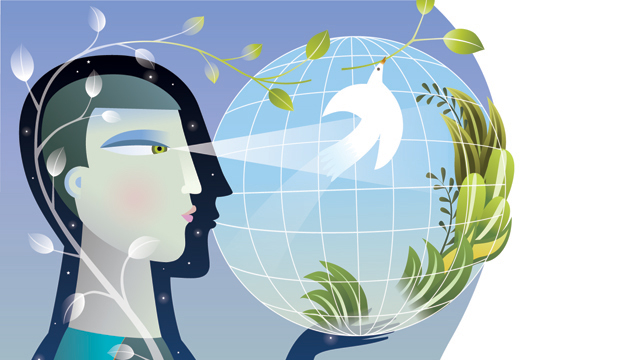
The Power of Intention: Learning to Co-Create Your World Your Way
Thought-provoking takeaways from Wayne Dyer’s classic guide to conscious living.
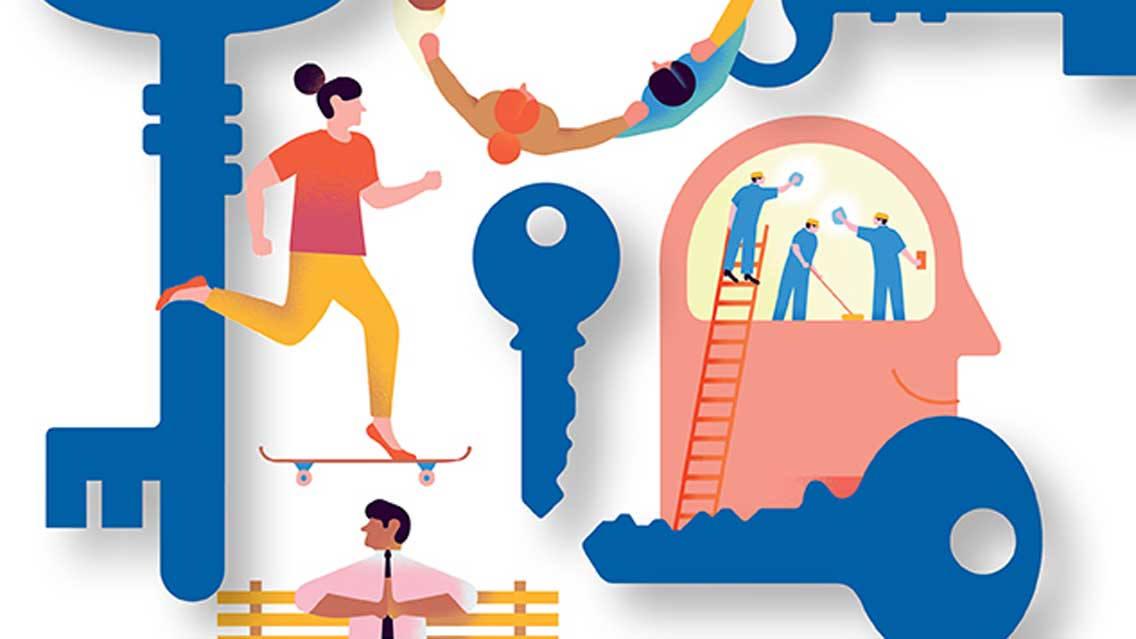
6 Keys to a Happy and Healthy Life
A functional-medicine pioneer explains how to make small choices that build lasting well-being.
- Social Justice
- Environment
- Health & Happiness
- Get YES! Emails
- Teacher Resources

- Give A Gift Subscription
- Teaching Sustainability
- Teaching Social Justice
- Teaching Respect & Empathy
- Student Writing Lessons
- Visual Learning Lessons
- Tough Topics Discussion Guides
- About the YES! for Teachers Program
- Student Writing Contest
Follow YES! For Teachers
Eight brilliant student essays on what matters most in life.
Read winning essays from our spring 2019 student writing contest.

For the spring 2019 student writing contest, we invited students to read the YES! article “Three Things That Matter Most in Youth and Old Age” by Nancy Hill. Like the author, students interviewed someone significantly older than them about the three things that matter most in life. Students then wrote about what they learned, and about how their interviewees’ answers compare to their own top priorities.
The Winners
From the hundreds of essays written, these eight were chosen as winners. Be sure to read the author’s response to the essay winners and the literary gems that caught our eye. Plus, we share an essay from teacher Charles Sanderson, who also responded to the writing prompt.
Middle School Winner: Rory Leyva
High School Winner: Praethong Klomsum
University Winner: Emily Greenbaum
Powerful Voice Winner: Amanda Schwaben
Powerful Voice Winner: Antonia Mills
Powerful Voice Winner: Isaac Ziemba
Powerful Voice Winner: Lily Hersch
“Tell It Like It Is” Interview Winner: Jonas Buckner
From the Author: Response to Student Winners
Literary Gems
From A Teacher: Charles Sanderson
From the Author: Response to Charles Sanderson
Middle School Winner
Village Home Education Resource Center, Portland, Ore.

The Lessons Of Mortality
“As I’ve aged, things that are more personal to me have become somewhat less important. Perhaps I’ve become less self-centered with the awareness of mortality, how short one person’s life is.” This is how my 72-year-old grandma believes her values have changed over the course of her life. Even though I am only 12 years old, I know my life won’t last forever, and someday I, too, will reflect on my past decisions. We were all born to exist and eventually die, so we have evolved to value things in the context of mortality.
One of the ways I feel most alive is when I play roller derby. I started playing for the Rose City Rollers Juniors two years ago, and this year, I made the Rosebud All-Stars travel team. Roller derby is a fast-paced, full-contact sport. The physicality and intense training make me feel in control of and present in my body.
My roller derby team is like a second family to me. Adolescence is complicated. We understand each other in ways no one else can. I love my friends more than I love almost anything else. My family would have been higher on my list a few years ago, but as I’ve aged it has been important to make my own social connections.
Music led me to roller derby. I started out jam skating at the roller rink. Jam skating is all about feeling the music. It integrates gymnastics, breakdancing, figure skating, and modern dance with R & B and hip hop music. When I was younger, I once lay down in the DJ booth at the roller rink and was lulled to sleep by the drawl of wheels rolling in rhythm and people talking about the things they came there to escape. Sometimes, I go up on the roof of my house at night to listen to music and feel the wind rustle my hair. These unique sensations make me feel safe like nothing else ever has.
My grandma tells me, “Being close with family and friends is the most important thing because I haven’t

always had that.” When my grandma was two years old, her father died. Her mother became depressed and moved around a lot, which made it hard for my grandma to make friends. Once my grandma went to college, she made lots of friends. She met my grandfather, Joaquin Leyva when she was working as a park ranger and he was a surfer. They bought two acres of land on the edge of a redwood forest and had a son and a daughter. My grandma created a stable family that was missing throughout her early life.
My grandma is motivated to maintain good health so she can be there for her family. I can relate because I have to be fit and strong for my team. Since she lost my grandfather to cancer, she realizes how lucky she is to have a functional body and no life-threatening illnesses. My grandma tries to eat well and exercise, but she still struggles with depression. Over time, she has learned that reaching out to others is essential to her emotional wellbeing.
Caring for the earth is also a priority for my grandma I’ve been lucky to learn from my grandma. She’s taught me how to hunt for fossils in the desert and find shells on the beach. Although my grandma grew up with no access to the wilderness, she admired the green open areas of urban cemeteries. In college, she studied geology and hiked in the High Sierras. For years, she’s been an advocate for conserving wildlife habitat and open spaces.
Our priorities may seem different, but it all comes down to basic human needs. We all desire a purpose, strive to be happy, and need to be loved. Like Nancy Hill says in the YES! Magazine article “Three Things That Matter Most in Youth and Old Age,” it can be hard to decipher what is important in life. I believe that the constant search for satisfaction and meaning is the only thing everyone has in common. We all want to know what matters, and we walk around this confusing world trying to find it. The lessons I’ve learned from my grandma about forging connections, caring for my body, and getting out in the world inspire me to live my life my way before it’s gone.
Rory Leyva is a seventh-grader from Portland, Oregon. Rory skates for the Rosebuds All-Stars roller derby team. She loves listening to music and hanging out with her friends.
High School Winner
Praethong Klomsum
Santa Monica High School, Santa Monica, Calif.

Time Only Moves Forward
Sandra Hernandez gazed at the tiny house while her mother’s gentle hands caressed her shoulders. It wasn’t much, especially for a family of five. This was 1960, she was 17, and her family had just moved to Culver City.
Flash forward to 2019. Sandra sits in a rocking chair, knitting a blanket for her latest grandchild, in the same living room. Sandra remembers working hard to feed her eight children. She took many different jobs before settling behind the cash register at a Japanese restaurant called Magos. “It was a struggle, and my husband Augustine, was planning to join the military at that time, too.”
In the YES! Magazine article “Three Things That Matter Most in Youth and Old Age,” author Nancy Hill states that one of the most important things is “…connecting with others in general, but in particular with those who have lived long lives.” Sandra feels similarly. It’s been hard for Sandra to keep in contact with her family, which leaves her downhearted some days. “It’s important to maintain that connection you have with your family, not just next-door neighbors you talk to once a month.”
Despite her age, Sandra is a daring woman. Taking risks is important to her, and she’ll try anything—from skydiving to hiking. Sandra has some regrets from the past, but nowadays, she doesn’t wonder about the “would have, could have, should haves.” She just goes for it with a smile.
Sandra thought harder about her last important thing, the blue and green blanket now finished and covering
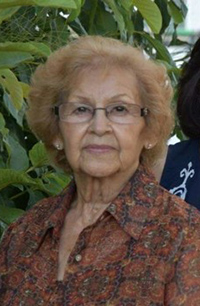
her lap. “I’ve definitely lived a longer life than most, and maybe this is just wishful thinking, but I hope I can see the day my great-grandchildren are born.” She’s laughing, but her eyes look beyond what’s in front of her. Maybe she is reminiscing about the day she held her son for the first time or thinking of her grandchildren becoming parents. I thank her for her time and she waves it off, offering me a styrofoam cup of lemonade before I head for the bus station.
The bus is sparsely filled. A voice in my head reminds me to finish my 10-page history research paper before spring break. I take a window seat and pull out my phone and earbuds. My playlist is already on shuffle, and I push away thoughts of that dreaded paper. Music has been a constant in my life—from singing my lungs out in kindergarten to Barbie’s “I Need To Know,” to jamming out to Taylor Swift’s “Blank Space” in sixth grade, to BTS’s “Intro: Never Mind” comforting me when I’m at my lowest. Music is my magic shop, a place where I can trade away my fears for calm.
I’ve always been afraid of doing something wrong—not finishing my homework or getting a C when I can do better. When I was 8, I wanted to be like the big kids. As I got older, I realized that I had exchanged my childhood longing for the 48 pack of crayons for bigger problems, balancing grades, a social life, and mental stability—all at once. I’m going to get older whether I like it or not, so there’s no point forcing myself to grow up faster. I’m learning to live in the moment.
The bus is approaching my apartment, where I know my comfy bed and a home-cooked meal from my mom are waiting. My mom is hard-working, confident, and very stubborn. I admire her strength of character. She always keeps me in line, even through my rebellious phases.
My best friend sends me a text—an update on how broken her laptop is. She is annoying. She says the stupidest things and loves to state the obvious. Despite this, she never fails to make me laugh until my cheeks feel numb. The rest of my friends are like that too—loud, talkative, and always brightening my day. Even friends I stopped talking to have a place in my heart. Recently, I’ve tried to reconnect with some of them. This interview was possible because a close friend from sixth grade offered to introduce me to Sandra, her grandmother.
I’m decades younger than Sandra, so my view of what’s important isn’t as broad as hers, but we share similar values, with friends and family at the top. I have a feeling that when Sandra was my age, she used to love music, too. Maybe in a few decades, when I’m sitting in my rocking chair, drawing in my sketchbook, I’ll remember this article and think back fondly to the days when life was simple.
Praethong Klomsum is a tenth-grader at Santa Monica High School in Santa Monica, California. Praethong has a strange affinity for rhyme games and is involved in her school’s dance team. She enjoys drawing and writing, hoping to impact people willing to listen to her thoughts and ideas.
University Winner
Emily Greenbaum
Kent State University, Kent, Ohio
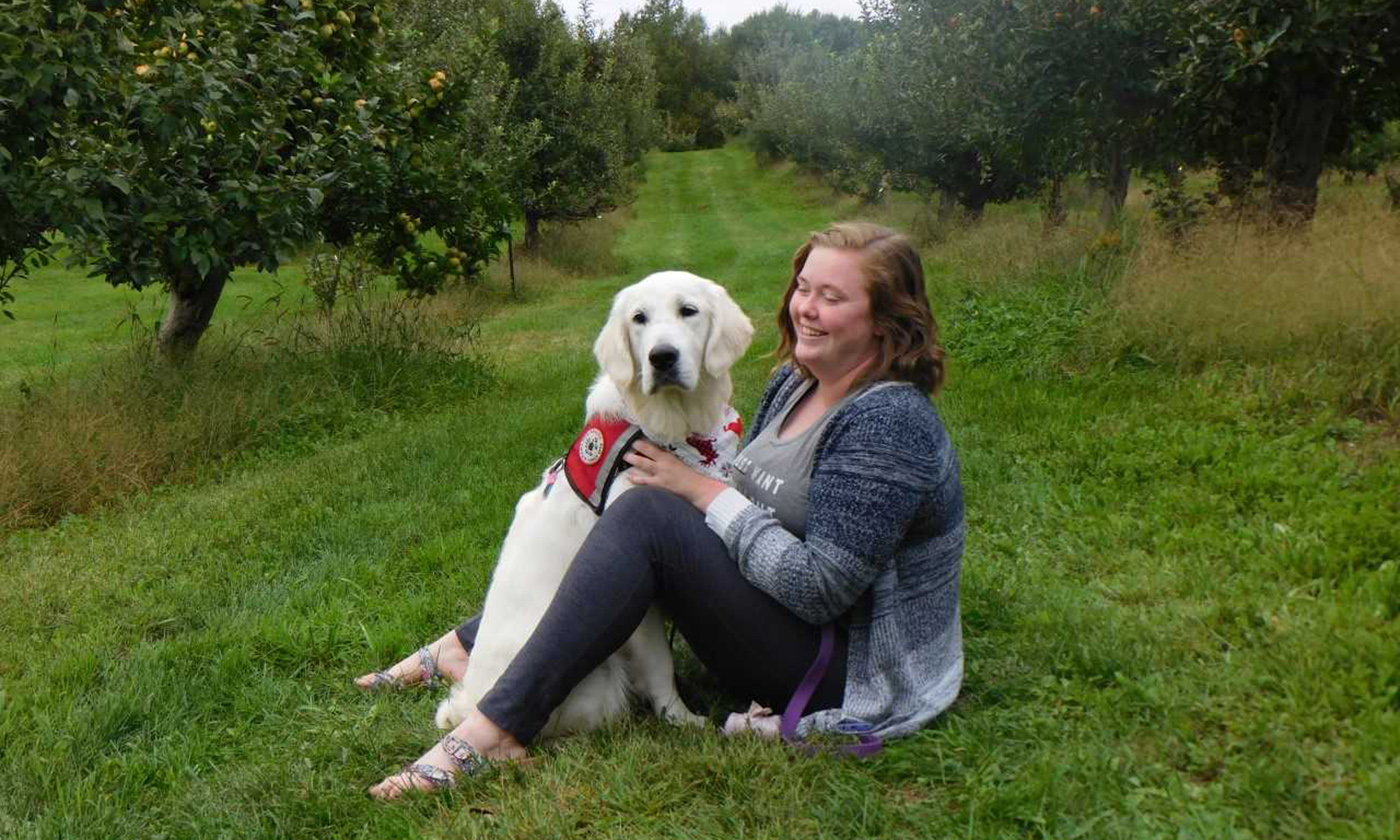
The Life-Long War
Every morning we open our eyes, ready for a new day. Some immediately turn to their phones and social media. Others work out or do yoga. For a certain person, a deep breath and the morning sun ground him. He hears the clink-clank of his wife cooking low sodium meat for breakfast—doctor’s orders! He sees that the other side of the bed is already made, the dogs are no longer in the room, and his clothes are set out nicely on the loveseat.
Today, though, this man wakes up to something different: faded cream walls and jello. This person, my hero, is Master Chief Petty Officer Roger James.
I pulled up my chair close to Roger’s vinyl recliner so I could hear him above the noise of the beeping dialysis machine. I noticed Roger would occasionally glance at his wife Susan with sparkly eyes when he would recall memories of the war or their grandkids. He looked at Susan like she walked on water.
Roger James served his country for thirty years. Now, he has enlisted in another type of war. He suffers from a rare blood cancer—the result of the wars he fought in. Roger has good and bad days. He says, “The good outweighs the bad, so I have to be grateful for what I have on those good days.”
When Roger retired, he never thought the effects of the war would reach him. The once shallow wrinkles upon his face become deeper, as he tells me, “It’s just cancer. Others are suffering from far worse. I know I’ll make it.”
Like Nancy Hill did in her article “Three Things that Matter Most in Youth and Old Age,” I asked Roger, “What are the three most important things to you?” James answered, “My wife Susan, my grandkids, and church.”
Roger and Susan served together in the Vietnam war. She was a nurse who treated his cuts and scrapes one day. I asked Roger why he chose Susan. He said, “Susan told me to look at her while she cleaned me up. ‘This may sting, but don’t be a baby.’ When I looked into her eyes, I felt like she was looking into my soul, and I didn’t want her to leave. She gave me this sense of home. Every day I wake up, she makes me feel the same way, and I fall in love with her all over again.”
Roger and Susan have two kids and four grandkids, with great-grandchildren on the way. He claims that his grandkids give him the youth that he feels slowly escaping from his body. This adoring grandfather is energized by coaching t-ball and playing evening card games with the grandkids.
The last thing on his list was church. His oldest daughter married a pastor. Together they founded a church. Roger said that the connection between his faith and family is important to him because it gave him a reason to want to live again. I learned from Roger that when you’re across the ocean, you tend to lose sight of why you are fighting. When Roger returned, he didn’t have the will to live. Most days were a struggle, adapting back into a society that lacked empathy for the injuries, pain, and psychological trauma carried by returning soldiers. Church changed that for Roger and gave him a sense of purpose.
When I began this project, my attitude was to just get the assignment done. I never thought I could view Master Chief Petty Officer Roger James as more than a role model, but he definitely changed my mind. It’s as if Roger magically lit a fire inside of me and showed me where one’s true passions should lie. I see our similarities and embrace our differences. We both value family and our own connections to home—his home being church and mine being where I can breathe the easiest.
Master Chief Petty Officer Roger James has shown me how to appreciate what I have around me and that every once in a while, I should step back and stop to smell the roses. As we concluded the interview, amidst squeaky clogs and the stale smell of bleach and bedpans, I looked to Roger, his kind, tired eyes, and weathered skin, with a deeper sense of admiration, knowing that his values still run true, no matter what he faces.
Emily Greenbaum is a senior at Kent State University, graduating with a major in Conflict Management and minor in Geography. Emily hopes to use her major to facilitate better conversations, while she works in the Washington, D.C. area.
Powerful Voice Winner
Amanda Schwaben
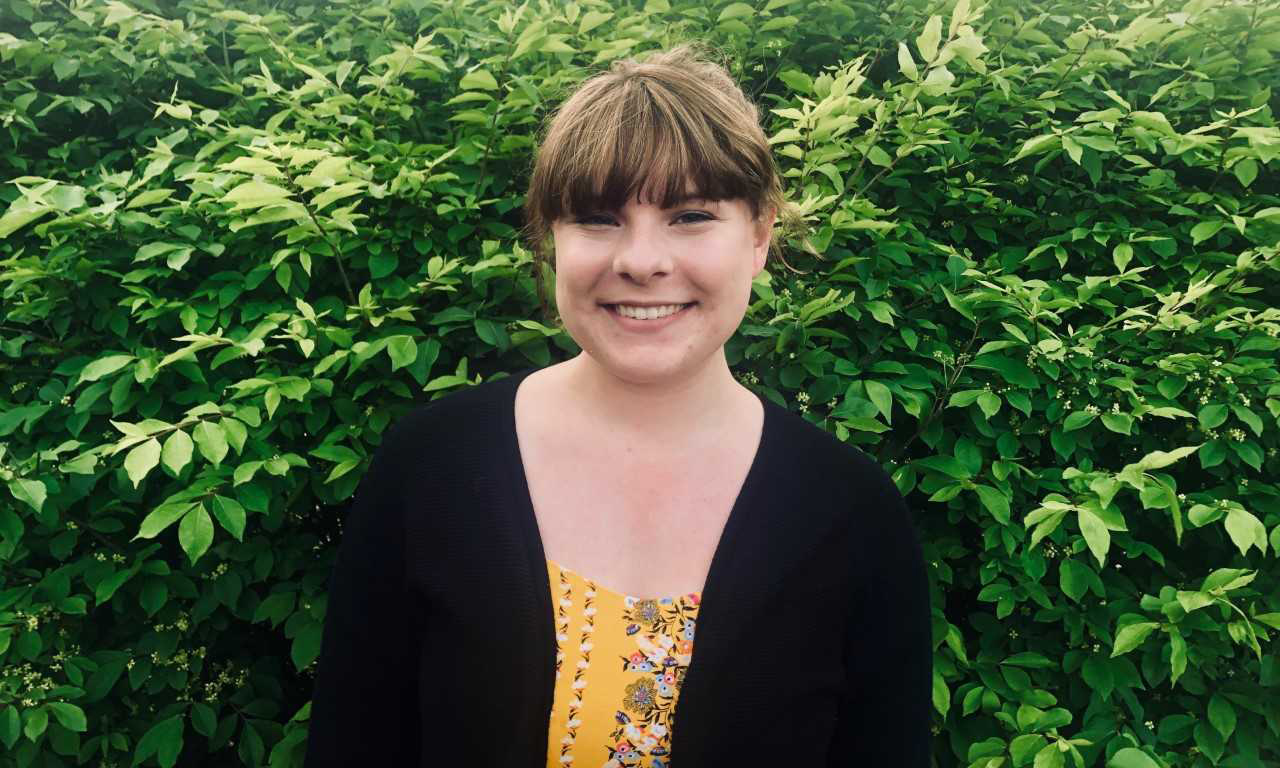
Wise Words From Winnie the Pooh
As I read through Nancy Hill’s article “Three Things That Matter Most in Youth and Old Age,” I was comforted by the similar responses given by both children and older adults. The emphasis participants placed on family, social connections, and love was not only heartwarming but hopeful. While the messages in the article filled me with warmth, I felt a twinge of guilt building within me. As a twenty-one-year-old college student weeks from graduation, I honestly don’t think much about the most important things in life. But if I was asked, I would most likely say family, friendship, and love. As much as I hate to admit it, I often find myself obsessing over achieving a successful career and finding a way to “save the world.”
A few weeks ago, I was at my family home watching the new Winnie the Pooh movie Christopher Robin with my mom and younger sister. Well, I wasn’t really watching. I had my laptop in front of me, and I was aggressively typing up an assignment. Halfway through the movie, I realized I left my laptop charger in my car. I walked outside into the brisk March air. Instinctively, I looked up. The sky was perfectly clear, revealing a beautiful array of stars. When my twin sister and I were in high school, we would always take a moment to look up at the sparkling night sky before we came into the house after soccer practice.
I think that was the last time I stood in my driveway and gazed at the stars. I did not get the laptop charger from

my car; instead, I turned around and went back inside. I shut my laptop and watched the rest of the movie. My twin sister loves Winnie the Pooh. So much so that my parents got her a stuffed animal version of him for Christmas. While I thought he was adorable and a token of my childhood, I did not really understand her obsession. However, it was clear to me after watching the movie. Winnie the Pooh certainly had it figured out. He believed that the simple things in life were the most important: love, friendship, and having fun.
I thought about asking my mom right then what the three most important things were to her, but I decided not to. I just wanted to be in the moment. I didn’t want to be doing homework. It was a beautiful thing to just sit there and be present with my mom and sister.
I did ask her, though, a couple of weeks later. Her response was simple. All she said was family, health, and happiness. When she told me this, I imagined Winnie the Pooh smiling. I think he would be proud of that answer.
I was not surprised by my mom’s reply. It suited her perfectly. I wonder if we relearn what is most important when we grow older—that the pressure to be successful subsides. Could it be that valuing family, health, and happiness is what ends up saving the world?
Amanda Schwaben is a graduating senior from Kent State University with a major in Applied Conflict Management. Amanda also has minors in Psychology and Interpersonal Communication. She hopes to further her education and focus on how museums not only preserve history but also promote peace.
Antonia Mills
Rachel Carson High School, Brooklyn, N.Y.
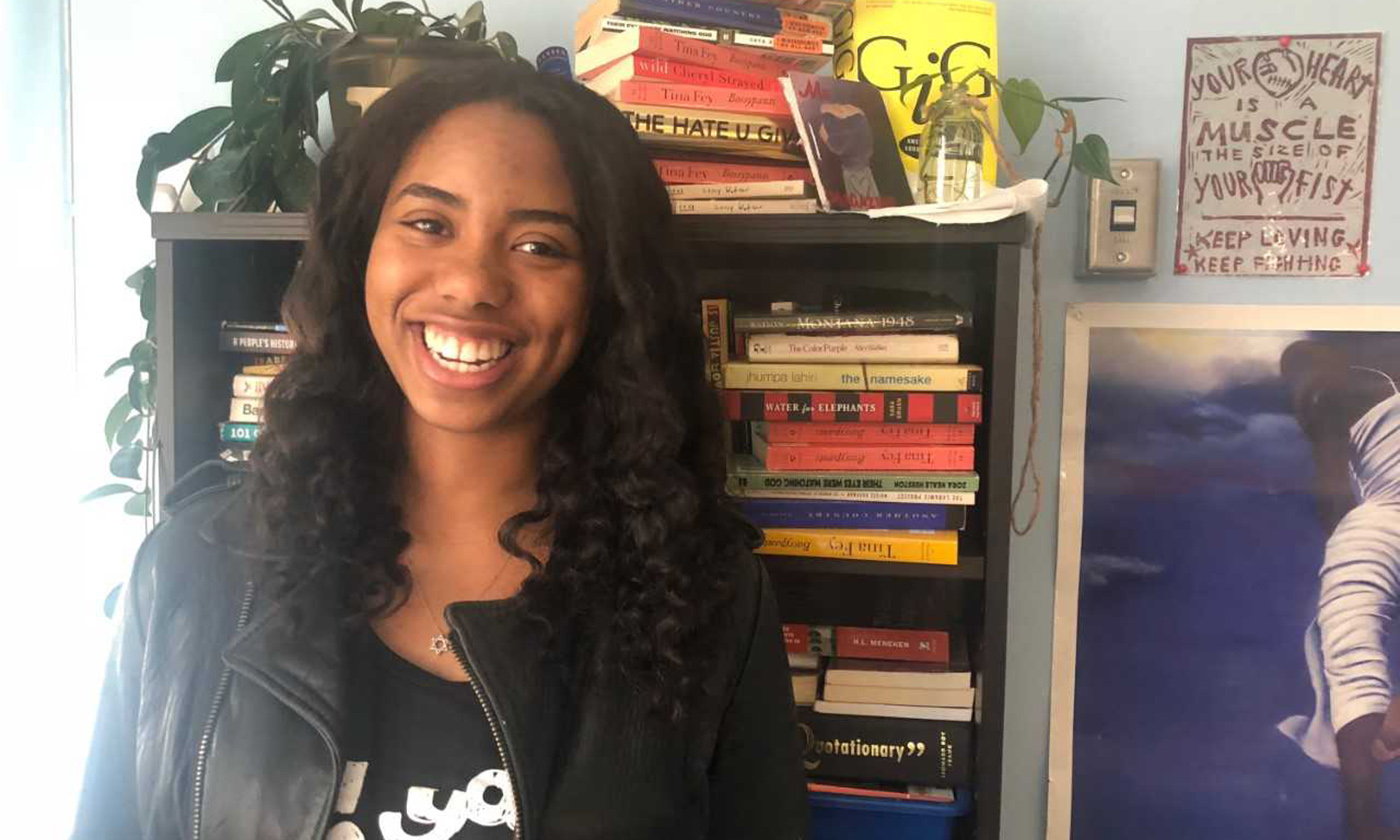
Decoding The Butterfly
For a caterpillar to become a butterfly, it must first digest itself. The caterpillar, overwhelmed by accumulating tissue, splits its skin open to form its protective shell, the chrysalis, and later becomes the pretty butterfly we all know and love. There are approximately 20,000 species of butterflies, and just as every species is different, so is the life of every butterfly. No matter how long and hard a caterpillar has strived to become the colorful and vibrant butterfly that we marvel at on a warm spring day, it does not live a long life. A butterfly can live for a year, six months, two weeks, and even as little as twenty-four hours.
I have often wondered if butterflies live long enough to be blissful of blue skies. Do they take time to feast upon the sweet nectar they crave, midst their hustling life of pollinating pretty flowers? Do they ever take a lull in their itineraries, or are they always rushing towards completing their four-stage metamorphosis? Has anyone asked the butterfly, “Who are you?” instead of “What are you”? Or, How did you get here, on my windowsill? How did you become ‘you’?
Humans are similar to butterflies. As a caterpillar

Suzanna Ruby/Getty Images
becomes a butterfly, a baby becomes an elder. As a butterfly soars through summer skies, an elder watches summer skies turn into cold winter nights and back toward summer skies yet again. And as a butterfly flits slowly by the porch light, a passerby makes assumptions about the wrinkled, slow-moving elder, who is sturdier than he appears. These creatures are not seen for who they are—who they were—because people have “better things to do” or they are too busy to ask, “How are you”?
Our world can be a lonely place. Pressured by expectations, haunted by dreams, overpowered by weakness, and drowned out by lofty goals, we tend to forget ourselves—and others. Rather than hang onto the strands of our diminishing sanity, we might benefit from listening to our elders. Many elders have experienced setbacks in their young lives. Overcoming hardship and surviving to old age is wisdom that they carry. We can learn from them—and can even make their day by taking the time to hear their stories.
Nancy Hill, who wrote the YES! Magazine article “Three Things That Matter Most in Youth and Old Age,” was right: “We live among such remarkable people, yet few know their stories.” I know a lot about my grandmother’s life, and it isn’t as serene as my own. My grandmother, Liza, who cooks every day, bakes bread on holidays for our neighbors, brings gifts to her doctor out of the kindness of her heart, and makes conversation with neighbors even though she is isn’t fluent in English—Russian is her first language—has struggled all her life. Her mother, Anna, a single parent, had tuberculosis, and even though she had an inviolable spirit, she was too frail to care for four children. She passed away when my grandmother was sixteen, so my grandmother and her siblings spent most of their childhood in an orphanage. My grandmother got married at nineteen to my grandfather, Pinhas. He was a man who loved her more than he loved himself and was a godsend to every person he met. Liza was—and still is—always quick to do what was best for others, even if that person treated her poorly. My grandmother has lived with physical pain all her life, yet she pushed herself to climb heights that she wasn’t ready for. Against all odds, she has lived to tell her story to people who are willing to listen. And I always am.
I asked my grandmother, “What are three things most important to you?” Her answer was one that I already expected: One, for everyone to live long healthy lives. Two, for you to graduate from college. Three, for you to always remember that I love you.
What may be basic to you means the world to my grandmother. She just wants what she never had the chance to experience: a healthy life, an education, and the chance to express love to the people she values. The three things that matter most to her may be so simple and ordinary to outsiders, but to her, it is so much more. And who could take that away?
Antonia Mills was born and raised in Brooklyn, New York and attends Rachel Carson High School. Antonia enjoys creative activities, including writing, painting, reading, and baking. She hopes to pursue culinary arts professionally in the future. One of her favorite quotes is, “When you start seeing your worth, you’ll find it harder to stay around people who don’t.” -Emily S.P.
Powerful Voice Winner
Isaac Ziemba
Odyssey Multiage Program, Bainbridge Island, Wash.
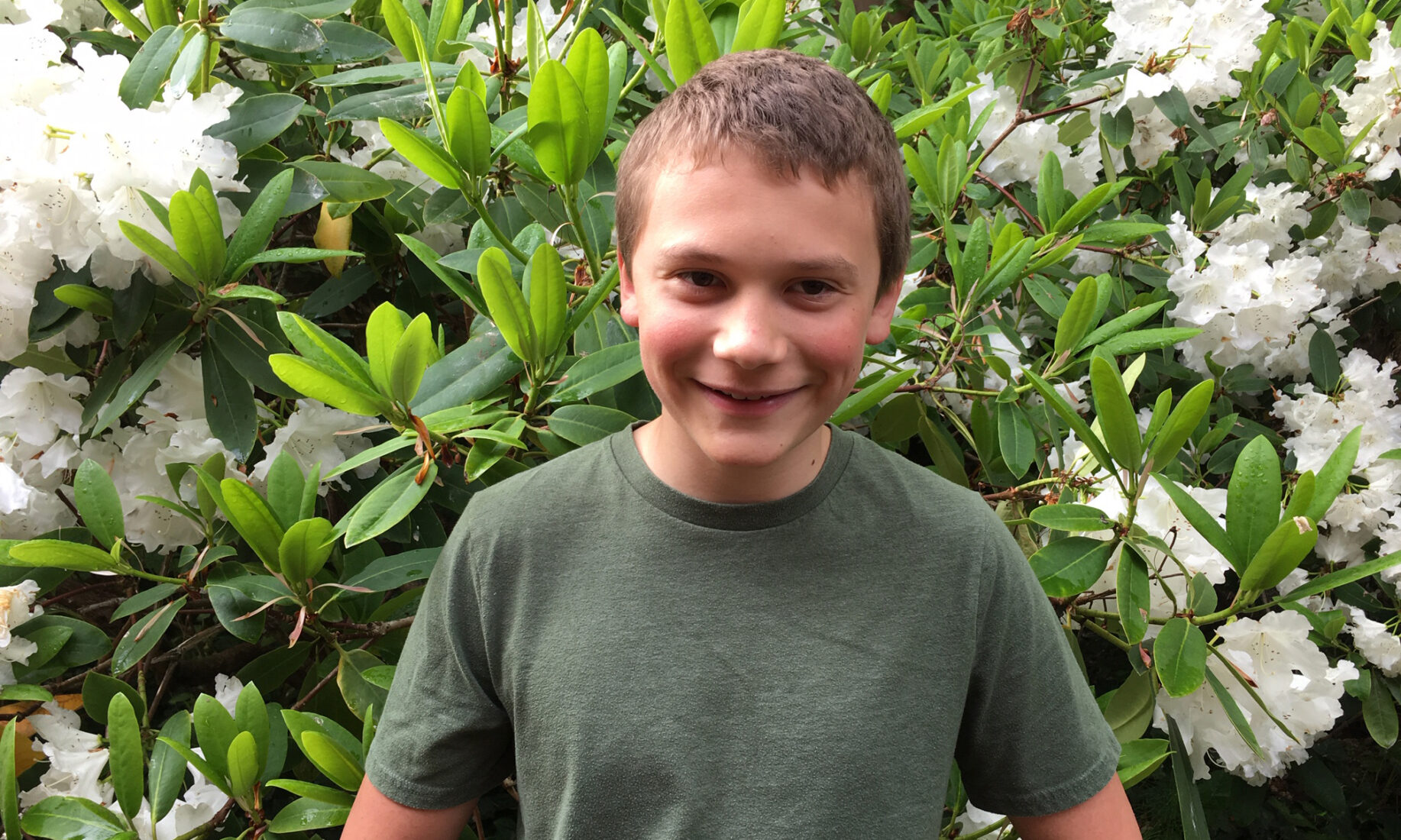
This Former State Trooper Has His Priorities Straight: Family, Climate Change, and Integrity
I have a personal connection to people who served in the military and first responders. My uncle is a first responder on the island I live on, and my dad retired from the Navy. That was what made a man named Glen Tyrell, a state trooper for 25 years, 2 months and 9 days, my first choice to interview about what three things matter in life. In the YES! Magazine article “The Three Things That Matter Most in Youth and Old Age,” I learned that old and young people have a great deal in common. I know that’s true because Glen and I care about a lot of the same things.
For Glen, family is at the top of his list of important things. “My wife was, and is, always there for me. My daughters mean the world to me, too, but Penny is my partner,” Glen said. I can understand why Glen’s wife is so important to him. She’s family. Family will always be there for you.
Glen loves his family, and so do I with all my heart. My dad especially means the world to me. He is my top supporter and tells me that if I need help, just “say the word.” When we are fishing or crabbing, sometimes I
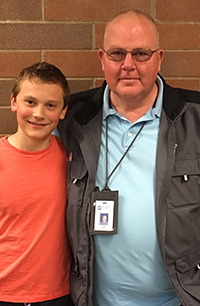
think, what if these times were erased from my memory? I wouldn’t be able to describe the horrible feeling that would rush through my mind, and I’m sure that Glen would feel the same about his wife.
My uncle once told me that the world is always going to change over time. It’s what the world has turned out to be that worries me. Both Glen and I are extremely concerned about climate change and the effect that rising temperatures have on animals and their habitats. We’re driving them to extinction. Some people might say, “So what? Animals don’t pay taxes or do any of the things we do.” What we are doing to them is like the Black Death times 100.
Glen is also frustrated by how much plastic we use and where it ends up. He would be shocked that an explorer recently dived to the deepest part of the Pacific Ocean—seven miles!— and discovered a plastic bag and candy wrappers. Glen told me that, unfortunately, his generation did the damage and my generation is here to fix it. We need to take better care of Earth because if we don’t, we, as a species, will have failed.
Both Glen and I care deeply for our families and the earth, but for our third important value, I chose education and Glen chose integrity. My education is super important to me because without it, I would be a blank slate. I wouldn’t know how to figure out problems. I wouldn’t be able to tell right from wrong. I wouldn’t understand the Bill of Rights. I would be stuck. Everyone should be able to go to school, no matter where they’re from or who they are. It makes me angry and sad to think that some people, especially girls, get shot because they are trying to go to school. I understand how lucky I am.
Integrity is sacred to Glen—I could tell by the serious tone of Glen’s voice when he told me that integrity was the code he lived by as a former state trooper. He knew that he had the power to change a person’s life, and he was committed to not abusing that power. When Glen put someone under arrest—and my uncle says the same—his judgment and integrity were paramount. “Either you’re right or you’re wrong.” You can’t judge a person by what you think, you can only judge a person from what you know.”
I learned many things about Glen and what’s important in life, but there is one thing that stands out—something Glen always does and does well. Glen helps people. He did it as a state trooper, and he does it in our school, where he works on construction projects. Glen told me that he believes that our most powerful tools are writing and listening to others. I think those tools are important, too, but I also believe there are other tools to help solve many of our problems and create a better future: to be compassionate, to create caring relationships, and to help others. Just like Glen Tyrell does each and every day.
Isaac Ziemba is in seventh grade at the Odyssey Multiage Program on a small island called Bainbridge near Seattle, Washington. Isaac’s favorite subject in school is history because he has always been interested in how the past affects the future. In his spare time, you can find Isaac hunting for crab with his Dad, looking for artifacts around his house with his metal detector, and having fun with his younger cousin, Conner.
Lily Hersch
The Crest Academy, Salida, Colo.
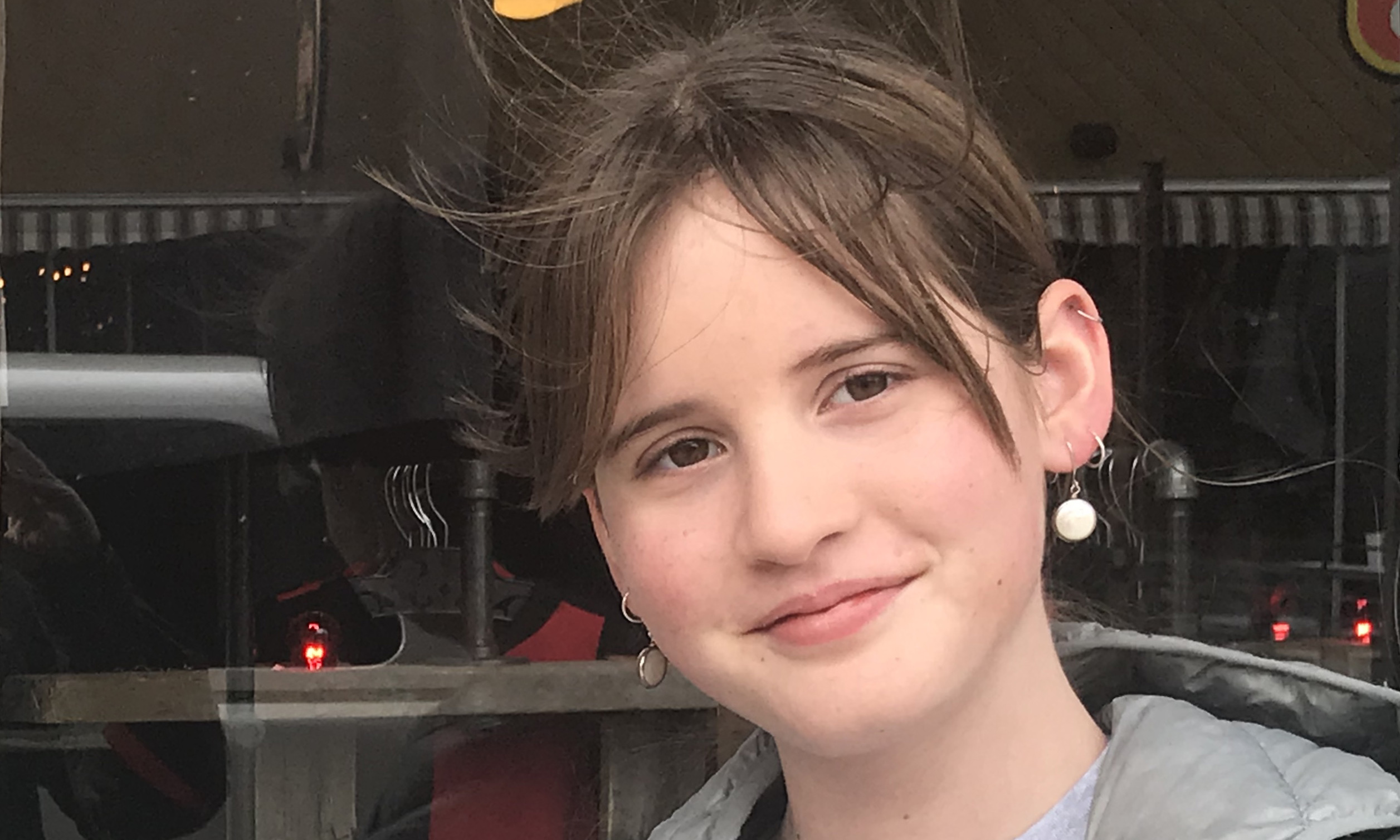
The Phone Call
Dear Grandpa,
In my short span of life—12 years so far—you’ve taught me a lot of important life lessons that I’ll always have with me. Some of the values I talk about in this writing I’ve learned from you.
Dedicated to my Gramps.
In the YES! Magazine article “Three Things That Matter Most in Youth and Old Age,” author and photographer Nancy Hill asked people to name the three things that mattered most to them. After reading the essay prompt for the article, I immediately knew who I wanted to interview: my grandpa Gil.
My grandpa was born on January 25, 1942. He lived in a minuscule tenement in The Bronx with his mother,
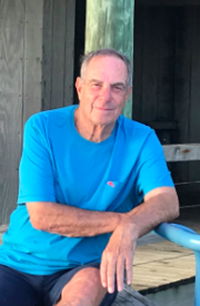
father, and brother. His father wasn’t around much, and, when he was, he was reticent and would snap occasionally, revealing his constrained mental pain. My grandpa says this happened because my great grandfather did not have a father figure in his life. His mother was a classy, sharp lady who was the head secretary at a local police district station. My grandpa and his brother Larry did not care for each other. Gramps said he was very close to his mother, and Larry wasn’t. Perhaps Larry was envious for what he didn’t have.
Decades after little to no communication with his brother, my grandpa decided to spontaneously visit him in Florida, where he resided with his wife. Larry was taken aback at the sudden reappearance of his brother and told him to leave. Since then, the two brothers have not been in contact. My grandpa doesn’t even know if Larry is alive.
My grandpa is now a retired lawyer, married to my wonderful grandma, and living in a pretty house with an ugly dog named BoBo.
So, what’s important to you, Gramps?
He paused a second, then replied, “Family, kindness, and empathy.”
“Family, because it’s my family. It’s important to stay connected with your family. My brother, father, and I never connected in the way I wished, and sometimes I contemplated what could’ve happened. But you can’t change the past. So, that’s why family’s important to me.”
Family will always be on my “Top Three Most Important Things” list, too. I can’t imagine not having my older brother, Zeke, or my grandma in my life. I wonder how other kids feel about their families? How do kids trapped and separated from their families at the U.S.-Mexico border feel? What about orphans? Too many questions, too few answers.
“Kindness, because growing up and not seeing a lot of kindness made me realize how important it is to have that in the world. Kindness makes the world go round.”
What is kindness? Helping my brother, Eli, who has Down syndrome, get ready in the morning? Telling people what they need to hear, rather than what they want to hear? Maybe, for now, I’ll put wisdom, not kindness, on my list.
“Empathy, because of all the killings and shootings [in this country.] We also need to care for people—people who are not living in as good circumstances as I have. Donald Trump and other people I’ve met have no empathy. Empathy is very important.”
Empathy is something I’ve felt my whole life. It’ll always be important to me like it is important to my grandpa. My grandpa shows his empathy when he works with disabled children. Once he took a disabled child to a Christina Aguilera concert because that child was too young to go by himself. The moments I feel the most empathy are when Eli gets those looks from people. Seeing Eli wonder why people stare at him like he’s a freak makes me sad, and annoyed that they have the audacity to stare.
After this 2 minute and 36-second phone call, my grandpa has helped me define what’s most important to me at this time in my life: family, wisdom, and empathy. Although these things are important now, I realize they can change and most likely will.
When I’m an old woman, I envision myself scrambling through a stack of storage boxes and finding this paper. Perhaps after reading words from my 12-year-old self, I’ll ask myself “What’s important to me?”
Lily Hersch is a sixth-grader at Crest Academy in Salida, Colorado. Lily is an avid indoorsman, finding joy in competitive spelling, art, and of course, writing. She does not like Swiss cheese.
“Tell It Like It Is” Interview Winner
Jonas Buckner
KIPP: Gaston College Preparatory, Gaston, N.C.
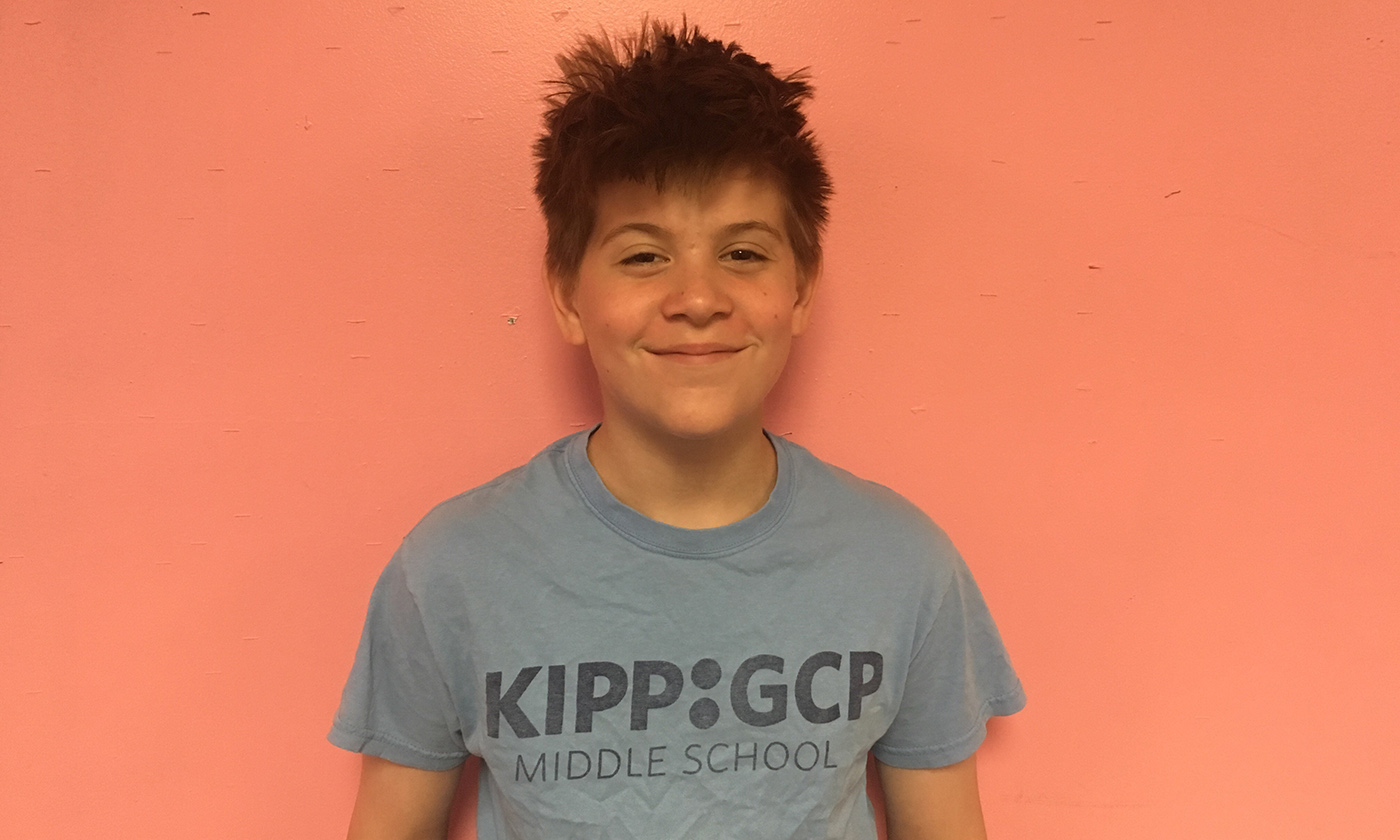
Lessons My Nana Taught Me
I walked into the house. In the other room, I heard my cousin screaming at his game. There were a lot of Pioneer Woman dishes everywhere. The room had the television on max volume. The fan in the other room was on. I didn’t know it yet, but I was about to learn something powerful.
I was in my Nana’s house, and when I walked in, she said, “Hey Monkey Butt.”
I said, “Hey Nana.”
Before the interview, I was talking to her about what I was gonna interview her on. Also, I had asked her why I might have wanted to interview her, and she responded with, “Because you love me, and I love you too.”
Now, it was time to start the interview. The first
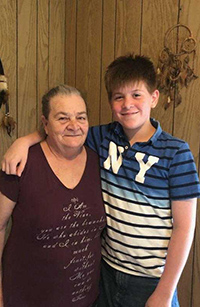
question I asked was the main and most important question ever: “What three things matter most to you and you only?”
She thought of it very thoughtfully and responded with, “My grandchildren, my children, and my health.”
Then, I said, “OK, can you please tell me more about your health?”
She responded with, “My health is bad right now. I have heart problems, blood sugar, and that’s about it.” When she said it, she looked at me and smiled because she loved me and was happy I chose her to interview.
I replied with, “K um, why is it important to you?”
She smiled and said, “Why is it…Why is my health important? Well, because I want to live a long time and see my grandchildren grow up.”
I was scared when she said that, but she still smiled. I was so happy, and then I said, “Has your health always been important to you.”
She responded with “Nah.”
Then, I asked, “Do you happen to have a story to help me understand your reasoning?”
She said, “No, not really.”
Now we were getting into the next set of questions. I said, “Remember how you said that your grandchildren matter to you? Can you please tell me why they matter to you?”
Then, she responded with, “So I can spend time with them, play with them, and everything.”
Next, I asked the same question I did before: “Have you always loved your grandchildren?”
She responded with, “Yes, they have always been important to me.”
Then, the next two questions I asked she had no response to at all. She was very happy until I asked, “Why do your children matter most to you?”
She had a frown on and responded, “My daughter Tammy died a long time ago.”
Then, at this point, the other questions were answered the same as the other ones. When I left to go home I was thinking about how her answers were similar to mine. She said health, and I care about my health a lot, and I didn’t say, but I wanted to. She also didn’t have answers for the last two questions on each thing, and I was like that too.
The lesson I learned was that no matter what, always keep pushing because even though my aunt or my Nana’s daughter died, she kept on pushing and loving everyone. I also learned that everything should matter to us. Once again, I chose to interview my Nana because she matters to me, and I know when she was younger she had a lot of things happen to her, so I wanted to know what she would say. The point I’m trying to make is that be grateful for what you have and what you have done in life.
Jonas Buckner is a sixth-grader at KIPP: Gaston College Preparatory in Gaston, North Carolina. Jonas’ favorite activities are drawing, writing, math, piano, and playing AltSpace VR. He found his passion for writing in fourth grade when he wrote a quick autobiography. Jonas hopes to become a horror writer someday.

From The Author: Responses to Student Winners
Dear Emily, Isaac, Antonia, Rory, Praethong, Amanda, Lily, and Jonas,
Your thought-provoking essays sent my head spinning. The more I read, the more impressed I was with the depth of thought, beauty of expression, and originality. It left me wondering just how to capture all of my reactions in a single letter. After multiple false starts, I’ve landed on this: I will stick to the theme of three most important things.
The three things I found most inspirational about your essays:
You listened.
You connected.
We live in troubled times. Tensions mount between countries, cultures, genders, religious beliefs, and generations. If we fail to find a way to understand each other, to see similarities between us, the future will be fraught with increased hostility.
You all took critical steps toward connecting with someone who might not value the same things you do by asking a person who is generations older than you what matters to them. Then, you listened to their answers. You saw connections between what is important to them and what is important to you. Many of you noted similarities, others wondered if your own list of the three most important things would change as you go through life. You all saw the validity of the responses you received and looked for reasons why your interviewees have come to value what they have.
It is through these things—asking, listening, and connecting—that we can begin to bridge the differences in experiences and beliefs that are currently dividing us.
Individual observations
Each one of you made observations that all of us, regardless of age or experience, would do well to keep in mind. I chose one quote from each person and trust those reading your essays will discover more valuable insights.
“Our priorities may seem different, but they come back to basic human needs. We all desire a purpose, strive to be happy, and work to make a positive impact.”
“You can’t judge a person by what you think , you can only judge a person by what you know .”
Emily (referencing your interviewee, who is battling cancer):
“Master Chief Petty Officer James has shown me how to appreciate what I have around me.”
Lily (quoting your grandfather):
“Kindness makes the world go round.”
“Everything should matter to us.”
Praethong (quoting your interviewee, Sandra, on the importance of family):
“It’s important to always maintain that connection you have with each other, your family, not just next-door neighbors you talk to once a month.”
“I wonder if maybe we relearn what is most important when we grow older. That the pressure to be successful subsides and that valuing family, health, and happiness is what ends up saving the world.”
“Listen to what others have to say. Listen to the people who have already experienced hardship. You will learn from them and you can even make their day by giving them a chance to voice their thoughts.”
I end this letter to you with the hope that you never stop asking others what is most important to them and that you to continue to take time to reflect on what matters most to you…and why. May you never stop asking, listening, and connecting with others, especially those who may seem to be unlike you. Keep writing, and keep sharing your thoughts and observations with others, for your ideas are awe-inspiring.
I also want to thank the more than 1,000 students who submitted essays. Together, by sharing what’s important to us with others, especially those who may believe or act differently, we can fill the world with joy, peace, beauty, and love.
We received many outstanding essays for the Winter 2019 Student Writing Competition. Though not every participant can win the contest, we’d like to share some excerpts that caught our eye:
Whether it is a painting on a milky canvas with watercolors or pasting photos onto a scrapbook with her granddaughters, it is always a piece of artwork to her. She values the things in life that keep her in the moment, while still exploring things she may not have initially thought would bring her joy.
—Ondine Grant-Krasno, Immaculate Heart Middle School, Los Angeles, Calif.
“Ganas”… It means “desire” in Spanish. My ganas is fueled by my family’s belief in me. I cannot and will not fail them.
—Adan Rios, Lane Community College, Eugene, Ore.
I hope when I grow up I can have the love for my kids like my grandma has for her kids. She makes being a mother even more of a beautiful thing than it already is.
—Ashley Shaw, Columbus City Prep School for Girls, Grove City, Ohio
You become a collage of little pieces of your friends and family. They also encourage you to be the best you can be. They lift you up onto the seat of your bike, they give you the first push, and they don’t hesitate to remind you that everything will be alright when you fall off and scrape your knee.
— Cecilia Stanton, Bellafonte Area Middle School, Bellafonte, Pa.
Without good friends, I wouldn’t know what I would do to endure the brutal machine of public education.
—Kenneth Jenkins, Garrison Middle School, Walla Walla, Wash.
My dog, as ridiculous as it may seem, is a beautiful example of what we all should aspire to be. We should live in the moment, not stress, and make it our goal to lift someone’s spirits, even just a little.
—Kate Garland, Immaculate Heart Middle School, Los Angeles, Calif.
I strongly hope that every child can spare more time to accompany their elderly parents when they are struggling, and moving forward, and give them more care and patience. so as to truly achieve the goal of “you accompany me to grow up, and I will accompany you to grow old.”
—Taiyi Li, Lane Community College, Eugene, Ore.
I have three cats, and they are my brothers and sisters. We share a special bond that I think would not be possible if they were human. Since they do not speak English, we have to find other ways to connect, and I think that those other ways can be more powerful than language.
—Maya Dombroskie, Delta Program Middle School, Boulsburg, Pa.
We are made to love and be loved. To have joy and be relational. As a member of the loneliest generation in possibly all of history, I feel keenly aware of the need for relationships and authentic connection. That is why I decided to talk to my grandmother.
—Luke Steinkamp, Kent State University, Kent, Ohio
After interviewing my grandma and writing my paper, I realized that as we grow older, the things that are important to us don’t change, what changes is why those things are important to us.
—Emily Giffer, Our Lady Star of the Sea, Grosse Pointe Woods, Mich.
The media works to marginalize elders, often isolating them and their stories, and the wealth of knowledge that comes with their additional years of lived experiences. It also undermines the depth of children’s curiosity and capacity to learn and understand. When the worlds of elders and children collide, a classroom opens.
—Cristina Reitano, City College of San Francisco, San Francisco, Calif.
My values, although similar to my dad, only looked the same in the sense that a shadow is similar to the object it was cast on.
—Timofey Lisenskiy, Santa Monica High School, Santa Monica, Calif.
I can release my anger through writing without having to take it out on someone. I can escape and be a different person; it feels good not to be myself for a while. I can make up my own characters, so I can be someone different every day, and I think that’s pretty cool.
—Jasua Carillo, Wellness, Business, and Sports School, Woodburn, Ore.
Notice how all the important things in his life are people: the people who he loves and who love him back. This is because “people are more important than things like money or possessions, and families are treasures,” says grandpa Pat. And I couldn’t agree more.
—Brody Hartley, Garrison Middle School, Walla Walla, Wash.
Curiosity for other people’s stories could be what is needed to save the world.
—Noah Smith, Kent State University, Kent, Ohio
Peace to me is a calm lake without a ripple in sight. It’s a starry night with a gentle breeze that pillows upon your face. It’s the absence of arguments, fighting, or war. It’s when egos stop working against each other and finally begin working with each other. Peace is free from fear, anxiety, and depression. To me, peace is an important ingredient in the recipe of life.
—JP Bogan, Lane Community College, Eugene, Ore.
From A Teacher
Charles Sanderson
Wellness, Business and Sports School, Woodburn, Ore.
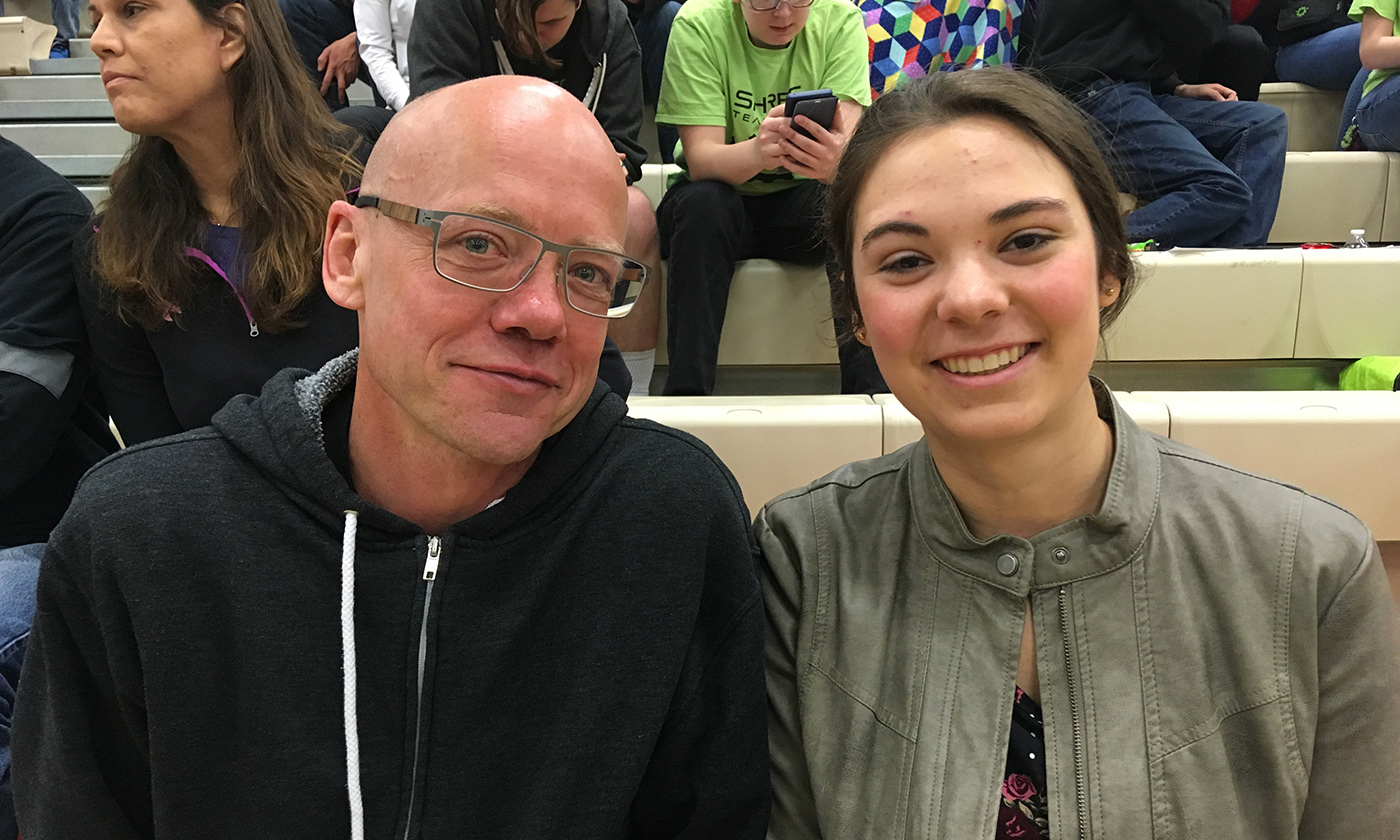
The Birthday Gift
I’ve known Jodelle for years, watching her grow from a quiet and timid twelve-year-old to a young woman who just returned from India, where she played Kabaddi, a kind of rugby meets Red Rover.
One of my core beliefs as an educator is to show up for the things that matter to kids, so I go to their games, watch their plays, and eat the strawberry jam they make for the county fair. On this occasion, I met Jodelle at a robotics competition to watch her little sister Abby compete. Think Nerd Paradise: more hats made from traffic cones than Golden State Warrior ball caps, more unicorn capes than Nike swooshes, more fanny packs with Legos than clutches with eyeliner.
We started chatting as the crowd chanted and waved six-foot flags for teams like Mystic Biscuits, Shrek, and everyone’s nemesis The Mean Machine. Apparently, when it’s time for lunch at a robotics competition, they don’t mess around. The once-packed gym was left to Jodelle and me, and we kept talking and talking. I eventually asked her about the three things that matter to her most.
She told me about her mom, her sister, and her addiction—to horses. I’ve read enough of her writing to know that horses were her drug of choice and her mom and sister were her support network.
I learned about her desire to become a teacher and how hours at the barn with her horse, Heart, recharge her when she’s exhausted. At one point, our rambling conversation turned to a topic I’ve known far too well—her father.
Later that evening, I received an email from Jodelle, and she had a lot to say. One line really struck me: “In so many movies, I have seen a dad wanting to protect his daughter from the world, but I’ve only understood the scene cognitively. Yesterday, I felt it.”
Long ago, I decided that I would never be a dad. I had seen movies with fathers and daughters, and for me, those movies might as well have been Star Wars, ET, or Alien—worlds filled with creatures I’d never know. However, over the years, I’ve attended Jodelle’s parent-teacher conferences, gone to her graduation, and driven hours to watch her ride Heart at horse shows. Simply, I showed up. I listened. I supported.
Jodelle shared a series of dad poems, as well. I had read the first two poems in their original form when Jodelle was my student. The revised versions revealed new graphic details of her past. The third poem, however, was something entirely different.
She called the poems my early birthday present. When I read the lines “You are my father figure/Who I look up to/Without being looked down on,” I froze for an instant and had to reread the lines. After fifty years of consciously deciding not to be a dad, I was seen as one—and it felt incredible. Jodelle’s poem and recognition were two of the best presents I’ve ever received.
I know that I was the language arts teacher that Jodelle needed at the time, but her poem revealed things I never knew I taught her: “My father figure/ Who taught me/ That listening is for observing the world/ That listening is for learning/Not obeying/Writing is for connecting/Healing with others.”
Teaching is often a thankless job, one that frequently brings more stress and anxiety than joy and hope. Stress erodes my patience. Anxiety curtails my ability to enter each interaction with every student with the grace they deserve. However, my time with Jodelle reminds me of the importance of leaning in and listening.
In the article “Three Things That Matter Most in Youth and Old Age” by Nancy Hill, she illuminates how we “live among such remarkable people, yet few know their stories.” For the last twenty years, I’ve had the privilege to work with countless of these “remarkable people,” and I’ve done my best to listen, and, in so doing, I hope my students will realize what I’ve known for a long time; their voices matter and deserve to be heard, but the voices of their tias and abuelitos and babushkas are equally important. When we take the time to listen, I believe we do more than affirm the humanity of others; we affirm our own as well.
Charles Sanderson has grounded his nineteen-year teaching career in a philosophy he describes as “Mirror, Window, Bridge.” Charles seeks to ensure all students see themselves, see others, and begin to learn the skills to build bridges of empathy, affinity, and understanding between communities and cultures that may seem vastly different. He proudly teaches at the Wellness, Business and Sports School in Woodburn, Oregon, a school and community that brings him joy and hope on a daily basis.
From The Author: Response to Charles Sanderson
Dear Charles Sanderson,
Thank you for submitting an essay of your own in addition to encouraging your students to participate in YES! Magazine’s essay contest.
Your essay focused not on what is important to you, but rather on what is important to one of your students. You took what mattered to her to heart, acting upon it by going beyond the school day and creating a connection that has helped fill a huge gap in her life. Your efforts will affect her far beyond her years in school. It is clear that your involvement with this student is far from the only time you have gone beyond the classroom, and while you are not seeking personal acknowledgment, I cannot help but applaud you.
In an ideal world, every teacher, every adult, would show the same interest in our children and adolescents that you do. By taking the time to listen to what is important to our youth, we can help them grow into compassionate, caring adults, capable of making our world a better place.
Your concerted efforts to guide our youth to success not only as students but also as human beings is commendable. May others be inspired by your insights, concerns, and actions. You define excellence in teaching.
Get Stories of Solutions to Share with Your Classroom
Teachers save 50% on YES! Magazine.
Inspiration in Your Inbox
Get the free daily newsletter from YES! Magazine: Stories of people creating a better world to inspire you and your students.
What Does It Mean to Live the Good Life?
Golf & Spa
- Philosophical Theories & Ideas
- Major Philosophers
- Ph.D., Philosophy, The University of Texas at Austin
- M.A., Philosophy, McGill University
- B.A., Philosophy, University of Sheffield
What is “the good life”? This is one of the oldest philosophical questions . It has been posed in different ways—How should one live? What does it mean to “live well”?—but these are really just the same question. After all, everyone wants to live well, and no one wants “the bad life.”
But the question isn’t as simple as it sounds. Philosophers specialize in unpacking hidden complexities, and the concept of the good life is one of those that needs quite a bit of unpacking.
The Moral Life
One basic way we use the word “good” is to express moral approval. So when we say someone is living well or that they have lived a good life, we may simply mean that they are a good person, someone who is courageous, honest, trustworthy, kind, selfless, generous, helpful, loyal, principled, and so on.
They possess and practice many of the most important virtues. And they don’t spend all their time merely pursuing their own pleasure; they devote a certain amount of time to activities that benefit others, perhaps through their engagement with family and friends, or through their work, or through various voluntary activities.
This moral conception of the good life has had plenty of champions. Socrates and Plato both gave absolute priority to being a virtuous person over all other supposedly good things such as pleasure, wealth, or power.
In Plato’s dialogue Gorgias , Socrates takes this position to an extreme. He argues that it is much better to suffer wrong than to do it; that a good man who has his eyes gouged out and is tortured to death is more fortunate than a corrupt person who has used wealth and power dishonorably.
In his masterpiece, the Republic , Plato develops this argument in greater detail. The morally good person, he claims, enjoys a sort of inner harmony, whereas the wicked person, no matter how rich and powerful he may be or how many pleasure he enjoys, is disharmonious, fundamentally at odds with himself and the world.
It is worth noting, though, that in both the Gorgias and the Republic , Plato bolsters his argument with a speculative account of an afterlife in which virtuous people are rewarded and wicked people are punished.
Many religions also conceive of the good life in moral terms as a life lived according to God’s laws. A person who lives this way—obeying the commandments and performing the proper rituals—is pious . And in most religions, such piety will be rewarded. Obviously, many people do not receive their reward in this life.
But devout believers are confident that their piety will not be in vain. Christian martyrs went singing to their deaths confident that they would soon be in heaven. Hindus expect that the law of karma will ensure that their good deeds and intentions will be rewarded, while evil actions and desires will be punished, either in this life or in future lives.
The Life of Pleasure
The ancient Greek philosopher Epicurus was one of the first to declare, bluntly, that what makes life worth living is that we can experience pleasure. Pleasure is enjoyable, it’s fun, it’s...well...pleasant! The view that pleasure is the good, or, to put I another way, that pleasure is what makes life worth living, is known as hedonism .
The word “hedonist,” when applied to a person, has slightly negative connotations. It suggests that they are devoted to what some have called the “lower” pleasures such as sex, food, drink, and sensual indulgence in general.
Epicurus was thought by some of his contemporaries to be advocating and practicing this sort of lifestyle, and even today an “epicure” is someone who is especially appreciative of food and drink. But this is a misrepresentation of Epicureanism. Epicurus certainly praised all kinds of pleasures. But he didn’t advocate that we lose ourselves in sensual debauchery for various reasons:
- Doing so will probably reduce our pleasures in the long run since over-indulgence tends to cause health problems and limit the range of pleasure we enjoy.
- The so-called “higher” pleasures such as friendship and study are at least as important as “pleasures of the flesh."
- The good life has to be virtuous. Although Epicurus disagreed with Plato about the value of pleasure, he fully agreed with him on this point.
Today, this hedonistic conception of the good life is arguably dominant in Western culture. Even in everyday speech, if we say someone is “living the good life,” we probably mean that they enjoying lots of recreational pleasures: good food, good wine, skiing, scuba diving, lounging by the pool in the sun with a cocktail and a beautiful partner.
What is key to this hedonistic conception of the good life is that it emphasizes subjective experiences . On this view, to describe a person as “happy” means that they “feel good,” and a happy life is one that contains many “feel good” experiences.
The Fulfilled Life
If Socrates emphasizes virtue and Epicurus emphasizes pleasure, another great Greek thinker, Aristotle , views the good life in a more comprehensive way. According to Aristotle, we all want to be happy.
We value many things because they are a means to other things. For instance, we value money because it enables us to buy things we want; we value leisure because it gives us time to pursue our interests. But happiness is something we value not as a means to some other end but for its own sake. It has intrinsic value rather than instrumental value.
So for Aristotle , the good life is a happy life. But what does that mean? Today, many people automatically think of happiness in subjectivist terms: To them, a person is happy if they are enjoying a positive state of mind, and their life is happy if this is true for them most of the time.
There is a problem with this way of thinking about happiness in this way, though. Imagine a powerful sadist who spends much of his time gratifying cruel desires. Or imagine a pot-smoking, beer-guzzling couch potato who does nothing but sit around all day watching old TV shows and playing video games. These people may have plenty of pleasurable subjective experiences. But should we really describe them as “living well”?
Aristotle would certainly say no. He agrees with Socrates that to live the good life one must be a morally good person. And he agrees with Epicurus that a happy life will involve many and varied pleasurable experiences. We can’t really say someone is living the good life if they are often miserable or constantly suffering.
But Aristotle’s idea of what it means to live well is objectivist rather than subjectivist. It isn’t just a matter of how a person feels inside, although that does matter. It’s also important that certain objective conditions be satisfied.
For instance:
- Virtue: They must be morally virtuous.
- Health: They should enjoy good health and reasonably long life.
- Prosperity: They should be comfortably off (for Aristotle this meant affluent enough so that they don’t need to work for a living doing something that they would not freely choose to do.)
- Friendship: They must have good friends. According to Aristotle human beings are innately social; so the good life can’t be that of a hermit , a recluse, or a misanthrope.
- Respect: They should enjoy the respect of others. Aristotle doesn’t think that fame or glory is necessary; in fact, a craving for fame can lead people astray, just as the desire for excessive wealth can. But ideally, a person’s qualities and achievements will be recognized by others.
- Luck: They need good luck. This is an example of Aristotle’s common sense. Any life can be rendered unhappy by tragic loss or misfortune.
- Engagement: They must exercise their uniquely human abilities and capacities. This is why the couch potato is not living well, even if they report that they are content. Aristotle argues that what separates human beings from the other animals is the human reason. So the good life is one in which a person cultivates and exercises their rational faculties by, for instance, engaging in scientific inquiry, philosophical discussion, artistic creation, or legislation. Were he alive today he might well include some forms of technological innovation.
If at the end of your life you can check all these boxes then you could reasonably claim to have lived well, to have achieved the good life. Of course, the great majority of people today do not belong to the leisure class as Aristotle did. They have to work for a living.
But it’s still true that we think the ideal circumstance is to be doing for a living what you would choose to do anyway. So people who are able to pursue their calling are generally regarded as extremely fortunate.
The Meaningful Life
Recent research shows that people who have children are not necessarily happier than people who don’t have children. Indeed, during the child-raising years, and especially when children have turned into teenagers, parents typically have lower levels of happiness and higher levels of stress. But even though having children may not make people happier, it does seem to give them the sense that their lives are more meaningful.
For many people, the well-being of their family, especially their children and grandchildren, is the main source of meaning in life. This outlook goes back a very long way. In ancient times, the definition of good fortune was to have lots of children who do well for themselves.
But obviously, there can be other sources of meaning in a person’s life. They may, for instance, pursue a particular kind of work with great dedication: e.g. scientific research, artistic creation, or scholarship. They may devote themselves to a cause: e.g. fighting against racism or protecting the environment. Or they may be thoroughly immersed in and engaged with some particular community: e.g. a church, a soccer team, or a school.
The Finished Life
The Greeks had a saying: Call no man happy until he’s dead. There is wisdom in this. In fact, one might want to amend it to: Call no man happy until he’s long dead. For sometimes a person can appear to live a fine life, and be able to check all the boxes—virtue, prosperity, friendship, respect, meaning, etc.—yet eventually be revealed as something other than what we thought they were.
A good example of this Jimmy Saville, the British TV personality who was much admired in his lifetime but who, after he died, was exposed as a serial sexual predator.
Cases like this bring out the great advantage of an objectivist rather than a subjectivist notion of what it means to live well. Jimmy Saville may have enjoyed his life. But surely, we would not want to say that he lived the good life. A truly good life is one that is both enviable and admirable in all or most of the ways outlined above.
- Epicurus and His Philosophy of Pleasure
- An Introduction to Virtue Ethics
- 30 Quotes by Aristotle
- Three Basic Principles of Utilitarianism, Briefly Explained
- Summary and Analysis of Meno by Plato
- The 5 Great Schools of Ancient Greek Philosophy
- How Can I Be Happy? An Epicurean and Stoic Perspective
- Moral Philosophy According to Immanuel Kant
- Intrinsic vs. Instrumental Value
- 3 Stoic Strategies for Becoming Happier
- Analysis of Plato's 'Crito'
- Stoics and Moral Philosophy - The 8 Principles of Stoicism
- How Do Philosophers Think About Beauty?
- Plato's 'Apology'
- Top 10 Beatles Songs With Philosophical Themes

Some Lessons I’ve Learned From Reflecting On Life In 150 Essays
As I look back over my last 149 essays, I see memories, heartbreaks, and joys, all poured into my essays of size 12 font. I see times I was feeling high on life, and simultaneously, times I was struggling and felt as though I was stuck in the dark.. But even more than a simple timeline of moments and checkpoints, I see someone trying desperately to make sense of a messy world full of complicated emotions. I see someone a little bit lost at times, a little bit curious, and also a bit hopeful – someone just trying her best to seek meaning, inspiration, and above all, healing.
It is an understatement to say that writing has been therapeutic for me. When I have felt lonely, or afraid, or let down, I have often sought comfort in writing. Words have been magical – they have been a way to gain a new perspective on my life and on the lives of all of the people around me. Writing has unfailingly encouraged me to look twice at life – to examine what lies beneath the surface, rather than accepting things at face value.
And when I look back at all of these thoughts I have spilled across the white pages of my MacBook, I see many themes that seem to pop into my life over and over again, with each passing year. These themes are mainly lessons – those that I have learned, and those that I am still learning (or relearning). Looking over my writing, I can’t help but notice how as human beings, we are constantly learning. We never seem to stop changing, growing, or healing.
While I do not have all of the answers (or any answers with certainty), I do hope that some of the thoughts I have gathered and the lessons I have learned through examining the world through words may resonate with you as well. I hope they can bring you some comfort or reassurance in the midst of the mountains and valleys of your own life.
1. It can feel comforting to seek home in nostalgia – to live in our memories, to replay them over and over again, like little film strips that continue to roll on. But at some point, we have to remember that life is still happening and the earth is still spinning, right here, right now. At some point, we have to be here for ourselves and for our hearts in the present. We have to be brave enough to hope that the present and the future will be just as good, if not better, than the old memories we are living in.
2. I’m learning that joy doesn’t necessarily mean the absence of sadness, and grief doesn’t necessarily imply the absence of joy. Though we often want to choose an either o r, life is not quite as binary as we make it out to be.
3. I’m realizing that being at peace with life doesn’t mean that everything is perfect, or that we don’t have any troubles or tribulations or low energy nagging at our hearts. Being at peace doesn’t mean that life is wonderful, or that we aren’t stressed, or facing anxiety. More so, being at peace means finding some form of “okayness” amidst all of the parts of life that are not (yet) “okay.” It means sitting amidst the chaos and making the conscious decision to remain calm. To be okay. Ultimately, finding peace means acknowledging the storm and coexisting with it, rather than sitting in the eye of the tornado.
4. It’s the hardest lesson in the world, but sometimes, the best thing we can do is let them go. Sometimes we have to say goodbye to someone good and wait patiently for someone better.
5. Something odd about life is that the right choices don’t always feel right in our bodies. Sometimes, though difficult, we have to find the courage within us to pursue what we need, rather than what we want in the present. We have to take care of ourselves by honoring what we know is best for us in the long run. And oftentimes, in the present, it really does hurt a lot. The pain doesn’t mean the decision is wrong. Sometimes the best choices can leave us let down and hurt. But later on, we will be thankful.
6. I don’t believe that everything happens for a reason. I don’t believe in fate. But I do believe that we can give meaning to some of our hardest most heartbreaking moments. We don’t need to build an identity that is rooted in our grief or in our trauma or pain, but if or when we want to, we can allow the healing process to bring out our best. We can grow new, fresh roots, and we can choose to define ourselves by how we rise back up again.
7. We can’t expect others to heal us – no one can love us so much that we automatically love ourselves. But maybe, when someone does love us, they can remind us what love feels like. They can help us to believe that we are loveable. And this can be the first step of loving ourselves – knowing that we deserve to be loved.
8. Grief is ugly and painful and devastating. Grief is dark swollen eyes and tear-stained cheeks. Grief hurts. But we cannot deny the sheer beauty that grief holds. We cannot deny that grief is, in some ways, a gift. To grieve means that we are blessed enough to have loved and to have been loved by someone special – and this is remarkable. Grief means we are missing someone – someone who touched our lives in an irreplaceable way. And thus, I’d like to believe that the sadness and grief we endure when we lose someone close to us is simply the price we pay for loving them. And there’s something so dear and precious about this.
9. As hard as it is to hear, some people aren’t meant to stay in our lives forever. They are passerbys, like boats in the night. And though they may only stay for a short while, they stay safely in our hearts indefinitely. Temporary people can leave permanent footprints.
10. Anxiety and overthinking do not change the situation. They only turn a gentle rain shower into a hurricane.
11. We can miss someone, but we can’t lose ourselves when we lose them. We can miss them, but we can’t let our lives be over when they are gone. Because we still have our lives to live. And we still have so much love left in us to give. 12. We don’t need a reason to have hope – we don’t need evidence or logic, as much as we think we do. We don’t even need to fully understand or grasp what hope is. We just have to find it in our hearts to believe that hope exists. We have to bravely decide to give in to hope, even when we can’t see it or touch it – even when we don’t know if it is there. When life is dark, we have to believe that there is something still worth living for around the corner. And this belief – this hope – this is what will help us move forward.
13. It’s okay to find home in another person. It’s one of the sweetest, purest parts of life. But somewhere along the way, we must also find home within ourselves.
14. We know we are healing when we piece back together our broken parts and turn them into something greater than what we had before.
15. Perhaps, when someone doesn’t love us or doesn’t fight for us, it isn’t actually a reflection of us. Perhaps their inability to love us does not mean that we are unloveable, or hard to love. Maybe it means that they have been hurt one too many times before and that their walls are now built high of concrete and stone. Or maybe it means that they have been defeated by love one too many times – maybe love continues to let them down, time and time again. And maybe, even if they want to love us, they simply cannot. And we can keep trying and trying to knock down those walls. But perhaps when they don’t love us, the very best thing we can do is to hug them close, wish them the best, and then walk away. Because even if they were special, we each deserve someone who is ready to let us in fully.
16. Most of the time, when we think we need closure from someone else, what we truly need is closure from ourselves – permission from ourselves to let things be. To accept the ending and to understand that it’s time to let the ending stay an ending. We must find the strength to seek peace and healing on our own. Healing is our responsibility, not the responsibility of the person who hurt us.
17. Sometimes growth is quiet and subtle and doesn’t look like growth. Sometimes growth is simply viewing a situation from a fresh perspective. Sometimes growth is trying something new, despite whether or not it ends up being a good experience. Sometimes growth just means making it through each day and noticing one small good thing about the world each night. Some seasons are for making leaps and bounds, while others are simply for surviving and just being. Both seasons are important. Both are needed.
18. How do we know when we are healing? I think we know that we are coming close when we feel immense gratitude that something happened, rather than devastated by the fact that it ended.
19. We don’t always need to find the silver lining. Sometimes really crappy, awful things happen, and there is much more bad than good in the world. Sometimes we go through devastating, heartbreaking experiences that don’t have a silver lining, and the idea of trying to find one only hurts us further. In these really rough moments, we don’t need to search for the light. But maybe, when we are ready, we can remind ourselves that there is still light in the world. Maybe there’s no shining light in our situation, but there is still goodness somewhere out there. And hopefully knowing this will help us make it to the other side
Perhaps the secret isn’t avoiding pain or numbing ourselves from pain, but rather, putting our energy into cultivating joy and peace. Perhaps when we value joy over pain, life becomes a little bit easier.
Colleen George
“there can be magic in the messes” @apeaceofwerk
Keep up with Colleen on Instagram , Amazon and linktr.ee
More From Thought Catalog

When Narcissists Say These 9 Phrases In Relationships, Here’s What They Really Mean

The 13 Best Romantic Comedies On Netflix In May 2024

6 of the Most Toxic Rom-Coms In Movie History (That Romanticize Red Flags)

The Best Romantic Comedy of 2023 Just Released On Netflix, And It’s Currently #1

Women Quit Dating, Sex, Marriage and Children With Men As 4B Movement Comes to The United States

3 Love Lessons The TV Show “Imposters” Taught Us About Sociopathic Manipulators and Con Artists

Essay on How to Live a Happy Life
Students are often asked to write an essay on How to Live a Happy Life in their schools and colleges. And if you’re also looking for the same, we have created 100-word, 250-word, and 500-word essays on the topic.
Let’s take a look…
100 Words Essay on How to Live a Happy Life
Understanding happiness.
Happiness is a feeling of joy and contentment. It’s not about having everything, but finding pleasure in what you have.
Practices for Happiness
Firstly, practice gratitude. Be thankful for what you have. Secondly, help others. It brings joy. Lastly, have hobbies. They make life fun.
Importance of Relationships
Good relationships bring happiness. Spend time with loved ones. Share, care, and enjoy together.
Healthy Body, Happy Life
A healthy body leads to a happy life. Eat well, exercise regularly, and sleep enough.
To live a happy life, value what you have, care for others, have fun, and stay healthy.
250 Words Essay on How to Live a Happy Life
Introduction.
Living a happy life is an art that everyone desires to master. While happiness is a subjective concept, certain universal principles can guide us towards leading a happier existence.
Embrace Positivity
Positivity is the cornerstone of a happy life. It involves focusing on the brighter side of life, even in challenging situations. Studies suggest that positive thinking can lead to increased life span, lower rates of depression, and better psychological and physical well-being.
Building Strong Relationships
Human beings are social creatures, and meaningful relationships contribute significantly to our happiness quotient. These relationships provide emotional support, reduce stress, and add purpose to our lives.
Taking care of physical health is equally important. Regular exercise, a balanced diet, and adequate sleep not only keep us physically fit but also help in maintaining mental health.
Pursue Passions
Pursuing our passions gives us a sense of fulfillment and joy. They allow us to express ourselves and contribute to our personal growth.
Practicing gratitude can enhance our happiness levels. Acknowledging the good in our lives helps us maintain a positive outlook and appreciate what we have.
In essence, the pursuit of happiness is an individual journey. It involves embracing positivity, nurturing relationships, taking care of our health, pursuing our passions, and practicing gratitude. These are not just steps, but a lifestyle choice that leads to a happier, more fulfilled life.
500 Words Essay on How to Live a Happy Life
Introduction to happiness.
Happiness, an elusive and highly subjective term, has been the pursuit of humankind since the dawn of civilization. Philosophers, psychologists, and countless others have attempted to define what it means to live a happy life. While the definition of happiness may vary from person to person, there are some universal principles that can guide us towards a fulfilling and joyful existence.
The Power of Perspective
Our perspective shapes our reality. By adopting a positive outlook, we can significantly improve our happiness levels. This doesn’t mean ignoring life’s challenges, but rather viewing them as opportunities for growth. The practice of gratitude is a powerful tool in this regard. By appreciating the good in our lives, we can shift our focus from what’s lacking to what’s abundant.
Building Meaningful Relationships
Humans are inherently social creatures. We thrive on connection and community. Thus, cultivating meaningful relationships is integral to our happiness. This involves practicing empathy, kindness, and understanding, all of which foster deeper connections with those around us. Remember, it’s the quality of relationships, not the quantity, that truly matters.
Pursuit of Passion
Engaging in activities that we are passionate about brings us immense joy and satisfaction. Whether it’s painting, playing an instrument, or hiking in nature, these pursuits allow us to express ourselves and experience flow – a state of complete immersion in an activity that can lead to a profound sense of happiness.
Physical Health and Well-being
Our physical health directly impacts our emotional well-being. Regular exercise, a balanced diet, and adequate sleep are crucial for maintaining our physical health. Exercise, in particular, releases endorphins, often termed as ‘feel-good’ hormones, which can significantly boost our mood and energy levels.
Mindfulness and Meditation
Mindfulness involves being fully present in the moment, without judgment. By practicing mindfulness, we can reduce stress, increase self-awareness, and enhance our overall well-being. Meditation, a form of mindfulness, has been shown to increase happiness by promoting a sense of calm and clarity.
Conclusion: The Journey to Happiness
In essence, living a happy life is a journey, not a destination. It involves a continuous process of growth and self-improvement. It’s about finding balance, cultivating positive relationships, pursuing passions, taking care of our physical health, and practicing mindfulness. By integrating these principles into our lives, we can navigate the complexities of life with a sense of joy and fulfillment. Remember, happiness is not a constant state, but a series of moments that, when strung together, create a life well-lived.
That’s it! I hope the essay helped you.
If you’re looking for more, here are essays on other interesting topics:
- Essay on Happy Incident in My Life
- Essay on Happiest Moment in Your Life
- Essay on Goals in Life
Apart from these, you can look at all the essays by clicking here .
Happy studying!
Leave a Reply Cancel reply
Your email address will not be published. Required fields are marked *
Save my name, email, and website in this browser for the next time I comment.

Essays About Life Lessons: Top 5 Examples and 7 Prompts
Read our guide to see the top examples and prompts on essays about life lessons to communicate your thoughts effectively.
Jordan Peterson once said, “Experience is the best teacher, and the worst experiences teach the best lessons.” The many life lessons we’ll accumulate in our life will help us veer in the right direction to fulfill our destinies. Whether it’s creative or nonfiction, as long as it describes the author’s personal life experiences or worldview, recounting life lessons falls under the personal or narrative essay category.
To successfully write an essay on this topic, you must connect with your readers and allow them to visualize, understand, and get inspired by what you have learned about life. To do this, you must remember critical elements such as a compelling hook, engaging story, relatable characters, suitable setting, and significant points.
See below five examples of life lessons essays to inspire you:
1. Life Lessons That the First Love Taught Me by Anonymous on GradesFixer.Com
2. the dad’s life lessons and the role model for the children by anonymous on studymoose.com, 3. studying history and own mistakes as life lessons: opinion essay by anonymous on edubirdie.com, 4. life lessons by anonymous on phdessay.com, 5. valuable lessons learned in life by anonymous on eduzaurus.com, 1. life lessons from books, 2. my biggest mistake and the life lesson i learned, 3. the life lessons i’ve learned, 4. life lessons from a popular show, 5. using life lessons in starting a business, 6. life lessons you must know, 7. kids and life lessons.
“I thought I knew absolutely everything about loving someone by the age of fourteen. Clearly I knew nothing and I still have so much to learn about what it is like to actually love someone.”
The author relates how their first love story unfolds, including the many things they learned from it. An example is that no matter how compatible the couple is if they are not for each other, they will not last long and will break up eventually. The writer also shares that situations that test the relationship, such as jealousy, deserve your attention as they aid people in picking the right decisions. The essay further tells how the writer’s relationship became toxic and affected their mental and emotional stability, even after the breakup. To cope and heal, they stopped looking for connections and focused on their grades, family, friends, and self-love.
“I am extremely thankful that he could teach me all the basics like how to ride a bike, how to fish and shoot straight, how to garden, how to cook, how to drive, how to skip a rock, and even how to blow spitballs. But I am most thankful that could teach me to stand tall (even though I’m 5’3”), be full with my heart and be strong with my mind.”
In this essay, the writer introduces their role model who taught them almost everything they know in their seventeen years of life, their father. The writer shares that their father’s toughness, stubbornness, and determination helped them learn to stand up for themselves and others and not be a coward in telling the truth. Because of him, the author learned how to be kind, generous, and mature. Finally, the author is very grateful to their father, who help them to think for themselves and not believe everything they hear.
“In my opinion, I believe it is more important to study the past rather than the present because we can learn more from our mistakes.”
This short essay explains the importance of remembering past events to analyze our mistakes. The author mentions that when people do this, they learn and grow from it, which prevents them from repeating the same error in the present time. The writer also points out that everyone has made the mistake of letting others dictate how their life goes, often leading to failures.
“… I believe we come here to learn a valuable lesson. If we did not learn this lesson through out a life time, our souls would come back to repeat the process.”
This essay presents three crucial life lessons that everyone needs to know. The first is to stop being too comfortable in taking people and things for granted. Instead, we must learn to appreciate everything. The second is to realize that mistakes are part of everyone’s life. So don’t let the fear of making mistakes stop you from trying something new. The third and final lesson is from Frank Sinatra’s “My Way.” People learn and grow as they age, so everyone needs to remember to live their life as if it were their last with no regrets.
“Life lessons are not necessarily learned from bad experiences, it can also be learned from good experiences, accomplishments, mistakes of other people, and by reading too.”
The essay reminds the readers to live their life to the fullest and cherish people and things in their lives because life is too short. If you want something, do not let it slip away without trying. If it fails, do not suffer and move on. The author also unveils the importance of travelling, keeping a diary, and maintaining a healthy lifestyle.
7 Prompts for Essays About Life Lessons
Use the prompts below if you’re still undecided on what to write about:

As mentioned above, life lessons are not only from experiences but also from reading. So for this prompt, pick up your favorite book and write down the lessons you learned from it. Next, identify each and explain to your readers why you think it’s essential to incorporate these lessons into real life. Finally, add how integrating these messages affected you.
There are always lessons we can derive from mistakes. However, not everyone understands these mistakes, so they keep doing them. Think of all your past mistakes and choose one that had the most significant negative impact on you and the people around you. Then, share with your readers what it is, its causes, and its effects. Finally, don’t forget to discuss what you gained from these faults and how you prevent yourself from doing them again.
Compile all the life lessons you’ve realized from different sources. They can be from your own experience, a relative’s, a movie, etc. Add why these lessons resonate with you. Be creative and use metaphors or add imaginary scenarios. Bear in mind that your essay should convey your message well.
Popular shows are an excellent medium for teaching life lessons to a broad audience. In your essay, pick a well-known work and reflect on it. For example, Euphoria is a TV series that created hubbub for its intrigue and sensitive themes. Dissect what life lessons one can retrieve from watching the show and relate them to personal encounters. You can also compile lessons from online posts and discussions.
If the subject of “life lessons” is too general for you, scope a more specific area, such as entrepreneurship. Which life lessons are critical for a person in business? To make your essay easier to digest, interview a successful business owner and ask about the life lessons they’ve accumulated before and while pursuing their goals.
Use this prompt to present the most important life lessons you’ve collected throughout your life. Then, share why you selected these lessons. For instance, you can choose “Live life as if it’s your last” and explain that you realized this life lesson after suddenly losing a loved one.
Have you ever met someone younger than you who taught you a life lesson? If so, in this prompt, tell your reader the whole story and what life lesson you discovered. Then, you can reverse it and write an incident where you give a good life lesson to someone older than you – say what it was and if that lesson helped them. Read our storytelling guide to upgrade your techniques.

Maria Caballero is a freelance writer who has been writing since high school. She believes that to be a writer doesn't only refer to excellent syntax and semantics but also knowing how to weave words together to communicate to any reader effectively.
View all posts
- PRO Courses Guides New Tech Help Pro Expert Videos About wikiHow Pro Upgrade Sign In
- EDIT Edit this Article
- EXPLORE Tech Help Pro About Us Random Article Quizzes Request a New Article Community Dashboard This Or That Game Popular Categories Arts and Entertainment Artwork Books Movies Computers and Electronics Computers Phone Skills Technology Hacks Health Men's Health Mental Health Women's Health Relationships Dating Love Relationship Issues Hobbies and Crafts Crafts Drawing Games Education & Communication Communication Skills Personal Development Studying Personal Care and Style Fashion Hair Care Personal Hygiene Youth Personal Care School Stuff Dating All Categories Arts and Entertainment Finance and Business Home and Garden Relationship Quizzes Cars & Other Vehicles Food and Entertaining Personal Care and Style Sports and Fitness Computers and Electronics Health Pets and Animals Travel Education & Communication Hobbies and Crafts Philosophy and Religion Work World Family Life Holidays and Traditions Relationships Youth
- Browse Articles
- Learn Something New
- Quizzes Hot
- This Or That Game
- Train Your Brain
- Explore More
- Support wikiHow
- About wikiHow
- Log in / Sign up
- Education and Communications
- Autobiographies
How to Write a Life Story Essay
Last Updated: April 14, 2024 Fact Checked
This article was co-authored by Alicia Cook . Alicia Cook is a Professional Writer based in Newark, New Jersey. With over 12 years of experience, Alicia specializes in poetry and uses her platform to advocate for families affected by addiction and to fight for breaking the stigma against addiction and mental illness. She holds a BA in English and Journalism from Georgian Court University and an MBA from Saint Peter’s University. Alicia is a bestselling poet with Andrews McMeel Publishing and her work has been featured in numerous media outlets including the NY Post, CNN, USA Today, the HuffPost, the LA Times, American Songwriter Magazine, and Bustle. She was named by Teen Vogue as one of the 10 social media poets to know and her poetry mixtape, “Stuff I’ve Been Feeling Lately” was a finalist in the 2016 Goodreads Choice Awards. There are 11 references cited in this article, which can be found at the bottom of the page. This article has been fact-checked, ensuring the accuracy of any cited facts and confirming the authority of its sources. This article has been viewed 101,629 times.
A life story essay involves telling the story of your life in a short, nonfiction format. It can also be called an autobiographical essay. In this essay, you will tell a factual story about some element of your life, perhaps for a college application or for a school assignment.
Preparing to Write Your Essay

- If you are writing a personal essay for a college application, it should serve to give the admissions committee a sense of who you are, beyond the basics of your application file. Your transcript, your letters of recommendation, and your resume will provide an overview of your work experience, interests, and academic record. Your essay allows you to make your application unique and individual to you, through your personal story. [2] X Research source
- The essay will also show the admissions committee how well you can write and structure an essay. Your essay should show you can create a meaningful piece of writing that interests your reader, conveys a unique message, and flows well.
- If you are writing a life story for a specific school assignment, such as in a composition course, ask your teacher about the assignment requirements.

- Include important events, such as your birth, your childhood and upbringing, and your adolescence. If family member births, deaths, marriages, and other life moments are important to your story, write those down as well.
- Focus on experiences that made a big impact on you and remain a strong memory. This may be a time where you learned an important life lesson, such as failing a test or watching someone else struggle and succeed, or where you felt an intense feeling or emotion, such as grief over someone’s death or joy over someone’s triumph.
- Have you faced a challenge in your life that you overcame, such as family struggles, health issues, a learning disability, or demanding academics?
- Do you have a story to tell about your cultural or ethnic background, or your family traditions?
- Have you dealt with failure or life obstacles?
- Do you have a unique passion or hobby?
- Have you traveled outside of your community, to another country, city, or area? What did you take away from the experience and how will you carry what you learned into a college setting?

- Remind yourself of your accomplishments by going through your resume. Think about any awards or experiences you would like spotlight in your essay. For example, explaining the story behind your Honor Roll status in high school, or how you worked hard to receive an internship in a prestigious program.
- Remember that your resume or C.V. is there to list off your accomplishments and awards, so your life story shouldn't just rehash them. Instead, use them as a jumping-off place to explain the process behind them, or what they reflect (or do not reflect) about you as a person.

- The New York Times publishes stellar examples of high school life story essays each year. You can read some of them on the NYT website. [8] X Research source
Writing Your Essay

- For example, you may look back at your time in foster care as a child or when you scored your first paying job. Consider how you handled these situations and any life lessons you learned from these lessons. Try to connect past experiences to who you are now, or who you aspire to be in the future.
- Your time in foster care, for example, may have taught you resilience, perseverance and a sense of curiosity around how other families function and live. This could then tie into your application to a Journalism program, as the experience shows you have a persistent nature and a desire to investigate other people’s stories or experiences.

- Certain life story essays have become cliche and familiar to admission committees. Avoid sports injuries stories, such as the time you injured your ankle in a game and had to find a way to persevere. You should also avoid using an overseas trip to a poor, foreign country as the basis for your self transformation. This is a familiar theme that many admission committees will consider cliche and not unique or authentic. [11] X Research source
- Other common, cliche topics to avoid include vacations, "adversity" as an undeveloped theme, or the "journey". [12] X Research source

- Try to phrase your thesis in terms of a lesson learned. For example, “Although growing up in foster care in a troubled neighborhood was challenging and difficult, it taught me that I can be more than my upbringing or my background through hard work, perseverance, and education.”
- You can also phrase your thesis in terms of lessons you have yet to learn, or seek to learn through the program you are applying for. For example, “Growing up surrounded by my mother’s traditional cooking and cultural habits that have been passed down through the generations of my family, I realized I wanted to discover and honor the traditions of other, ancient cultures with a career in archaeology.”
- Both of these thesis statements are good because they tell your readers exactly what to expect in clear detail.

- An anecdote is a very short story that carries moral or symbolic weight. It can be a poetic or powerful way to start your essay and engage your reader right away. You may want to start directly with a retelling of a key past experience or the moment you realized a life lesson.
- For example, you could start with a vivid memory, such as this from an essay that got its author into Harvard Business School: "I first considered applying to Berry College while dangling from a fifty-food Georgia pine tree, encouraging a high school classmate, literally, to make a leap of faith." [15] X Research source This opening line gives a vivid mental picture of what the author was doing at a specific, crucial moment in time and starts off the theme of "leaps of faith" that is carried through the rest of the essay.
- Another great example clearly communicates the author's emotional state from the opening moments: "Through seven-year-old eyes I watched in terror as my mother grimaced in pain." This essay, by a prospective medical school student, goes on to tell about her experience being at her brother's birth and how it shaped her desire to become an OB/GYN. The opening line sets the scene and lets you know immediately what the author was feeling during this important experience. It also resists reader expectations, since it begins with pain but ends in the joy of her brother's birth.
- Avoid using a quotation. This is an extremely cliche way to begin an essay and could put your reader off immediately. If you simply must use a quotation, avoid generic quotes like “Spread your wings and fly” or “There is no ‘I’ in ‘team’”. Choose a quotation that relates directly to your experience or the theme of your essay. This could be a quotation from a poem or piece of writing that speaks to you, moves you, or helped you during a rough time.

- Always use the first person in a personal essay. The essay should be coming from you and should tell the reader directly about your life experiences, with “I” statements.
- For example, avoid something such as “I had a hard time growing up. I was in a bad situation.” You can expand this to be more distinct, but still carry a similar tone and voice. “When I was growing up in foster care, I had difficulties connecting with my foster parents and with my new neighborhood. At the time, I thought I was in a bad situation I would never be able to be free from.”

- For example, consider this statement: "I am a good debater. I am highly motivated and have been a strong leader all through high school." This gives only the barest detail, and does not allow your reader any personal or unique information that will set you apart from the ten billion other essays she has to sift through.
- In contrast, consider this one: "My mother says I'm loud. I say you have to speak up to be heard. As president of my high school's debate team for the past three years, I have learned to show courage even when my heart is pounding in my throat. I have learned to consider the views of people different than myself, and even to argue for them when I passionately disagree. I have learned to lead teams in approaching complicated issues. And, most importantly for a formerly shy young girl, I have found my voice." This example shows personality, uses parallel structure for impact, and gives concrete detail about what the author has learned from her life experience as a debater.

- An example of a passive sentence is: “The cake was eaten by the dog.” The subject (the dog) is not in the expected subject position (first) and is not "doing" the expected action. This is confusing and can often be unclear.
- An example of an active sentence is: “The dog ate the cake.” The subject (the dog) is in the subject position (first), and is doing the expected action. This is much more clear for the reader and is a stronger sentence.

- Lead the reader INTO your story with a powerful beginning, such as an anecdote or a quote.
- Take the reader THROUGH your story with the context and key parts of your experience.
- End with the BEYOND message about how the experience has affected who you are now and who you want to be in college and after college.
Editing Your Essay

- For example, a sentence like “I struggled during my first year of college, feeling overwhelmed by new experiences and new people” is not very strong because it states the obvious and does not distinguish you are unique or singular. Most people struggle and feel overwhelmed during their first year of college. Adjust sentences like this so they appear unique to you.
- For example, consider this: “During my first year of college, I struggled with meeting deadlines and assignments. My previous home life was not very structured or strict, so I had to teach myself discipline and the value of deadlines.” This relates your struggle to something personal and explains how you learned from it.

- It can be difficult to proofread your own work, so reach out to a teacher, a mentor, a family member, or a friend and ask them to read over your essay. They can act as first readers and respond to any proofreading errors, as well as the essay as a whole.
Expert Q&A

You Might Also Like

- ↑ http://education.seattlepi.com/write-thesis-statement-autobiographical-essay-1686.html
- ↑ https://study.com/learn/lesson/autobiography-essay-examples-steps.html
- ↑ https://www.psychologytoday.com/blog/fulfillment-any-age/201101/writing-compelling-life-story-in-500-words-or-less
- ↑ Alicia Cook. Professional Writer. Expert Interview. 11 December 2020.
- ↑ https://mycustomessay.com/blog/how-to-write-an-autobiography-essay.html
- ↑ https://www.ahwatukee.com/community_focus/article_c79b33da-09a5-11e3-95a8-001a4bcf887a.html
- ↑ http://www.nytimes.com/2014/05/10/your-money/four-stand-out-college-essays-about-money.html
- ↑ https://www.youtube.com/watch?v=xY9AdFx0L4s
- ↑ https://www.medina-esc.org/Downloads/Practical%20Advice%20Writing%20College%20App%20Essay.pdf
- ↑ http://www.businessinsider.com/successful-harvard-business-school-essays-2012-11?op=1
- ↑ http://www.grammar-monster.com/glossary/passive_sentences.htm
About This Article

A life story essay is an essay that tells the story of your life in a short, nonfiction format. Start by coming up with a thesis statement, which will help you structure your essay. For example, your thesis could be about the influence of your family's culture on your life or how you've grown from overcoming challenging circumstances. You can include important life events that link to your thesis, like jobs you’ve worked, friendships that have influenced you, or sports competitions you’ve won. Consider starting your essay with an anecdote that introduces your thesis. For instance, if you're writing about your family's culture, you could start by talking about the first festival you went to and how it inspired you. Finish by writing about how the experiences have affected you and who you want to be in the future. For more tips from our Education co-author, including how to edit your essay effectively, read on! Did this summary help you? Yes No
- Send fan mail to authors
Did this article help you?

Featured Articles

Trending Articles

Watch Articles

- Terms of Use
- Privacy Policy
- Do Not Sell or Share My Info
- Not Selling Info
Get all the best how-tos!
Sign up for wikiHow's weekly email newsletter
Essay on Life for Students and Children
500+ words essay on life.
First of all, Life refers to an aspect of existence. This aspect processes acts, evaluates, and evolves through growth. Life is what distinguishes humans from inorganic matter. Some individuals certainly enjoy free will in Life. Others like slaves and prisoners don’t have that privilege. However, Life isn’t just about living independently in society. It is certainly much more than that. Hence, quality of Life carries huge importance. Above all, the ultimate purpose should be to live a meaningful life. A meaningful life is one which allows us to connect with our deeper self.

Why is Life Important?
One important aspect of Life is that it keeps going forward. This means nothing is permanent. Hence, there should be a reason to stay in dejection. A happy occasion will come to pass, just like a sad one. Above all, one must be optimistic no matter how bad things get. This is because nothing will stay forever. Every situation, occasion, and event shall pass. This is certainly a beauty of Life.
Many people become very sad because of failures . However, these people certainly fail to see the bright side. The bright side is that there is a reason for every failure. Therefore, every failure teaches us a valuable lesson. This means every failure builds experience. This experience is what improves the skills and efficiency of humans.
Probably a huge number of individuals complain that Life is a pain. Many people believe that the word pain is a synonym for Life. However, it is pain that makes us stronger. Pain is certainly an excellent way of increasing mental resilience. Above all, pain enriches the mind.
The uncertainty of death is what makes life so precious. No one knows the hour of one’s death. This probably is the most important reason to live life to the fullest. Staying in depression or being a workaholic is an utter wastage of Life. One must certainly enjoy the beautiful blessings of Life before death overtakes.
Get the huge list of more than 500 Essay Topics and Ideas
How to Improve Quality of Life?
Most noteworthy, optimism is the ultimate way of enriching life. Optimism increases job performance, self-confidence, creativity, and skills. An optimistic person certainly can overcome huge hurdles.
Meditation is another useful way of improving Life quality. Meditation probably allows a person to dwell upon his past. This way one can avoid past mistakes. It also gives peace of mind to an individual. Furthermore, meditation reduces stress and tension.
Pursuing a hobby is a perfect way to bring meaning to life. Without a passion or interest, an individual’s life would probably be dull. Following a hobby certainly brings new energy to life. It provides new hope to live and experience Life.
In conclusion, Life is not something that one should take for granted. It’s certainly a shame to see individuals waste away their lives. We should be very thankful for experiencing our lives. Above all, everyone should try to make their life more meaningful.
Customize your course in 30 seconds
Which class are you in.

- Travelling Essay
- Picnic Essay
- Our Country Essay
- My Parents Essay
- Essay on Favourite Personality
- Essay on Memorable Day of My Life
- Essay on Knowledge is Power
- Essay on Gurpurab
- Essay on My Favourite Season
- Essay on Types of Sports
Leave a Reply Cancel reply
Your email address will not be published. Required fields are marked *
Download the App

How to Write the Perfect Essay
06 Feb, 2024 | Blog Articles , English Language Articles , Get the Edge , Humanities Articles , Writing Articles

You can keep adding to this plan, crossing bits out and linking the different bubbles when you spot connections between them. Even though you won’t have time to make a detailed plan under exam conditions, it can be helpful to draft a brief one, including a few key words, so that you don’t panic and go off topic when writing your essay.
If you don’t like the mind map format, there are plenty of others to choose from: you could make a table, a flowchart, or simply a list of bullet points.
Discover More
Thanks for signing up, step 2: have a clear structure.
Think about this while you’re planning: your essay is like an argument or a speech. It needs to have a logical structure, with all your points coming together to answer the question.
Start with the basics! It’s best to choose a few major points which will become your main paragraphs. Three main paragraphs is a good number for an exam essay, since you’ll be under time pressure.
If you agree with the question overall, it can be helpful to organise your points in the following pattern:
- YES (agreement with the question)
- AND (another YES point)
- BUT (disagreement or complication)
If you disagree with the question overall, try:
- AND (another BUT point)
For example, you could structure the Of Mice and Men sample question, “To what extent is Curley’s wife portrayed as a victim in Of Mice and Men ?”, as follows:
- YES (descriptions of her appearance)
- AND (other people’s attitudes towards her)
- BUT (her position as the only woman on the ranch gives her power as she uses her femininity to her advantage)
If you wanted to write a longer essay, you could include additional paragraphs under the YES/AND categories, perhaps discussing the ways in which Curley’s wife reveals her vulnerability and insecurities, and shares her dreams with the other characters. Alternatively, you could also lengthen your essay by including another BUT paragraph about her cruel and manipulative streak.
Of course, this is not necessarily the only right way to answer this essay question – as long as you back up your points with evidence from the text, you can take any standpoint that makes sense.

Step 3: Back up your points with well-analysed quotations
You wouldn’t write a scientific report without including evidence to support your findings, so why should it be any different with an essay? Even though you aren’t strictly required to substantiate every single point you make with a quotation, there’s no harm in trying.
A close reading of your quotations can enrich your appreciation of the question and will be sure to impress examiners. When selecting the best quotations to use in your essay, keep an eye out for specific literary techniques. For example, you could highlight Curley’s wife’s use of a rhetorical question when she says, a”n’ what am I doin’? Standin’ here talking to a bunch of bindle stiffs.” This might look like:
The rhetorical question “an’ what am I doin’?” signifies that Curley’s wife is very insecure; she seems to be questioning her own life choices. Moreover, she does not expect anyone to respond to her question, highlighting her loneliness and isolation on the ranch.
Other literary techniques to look out for include:
- Tricolon – a group of three words or phrases placed close together for emphasis
- Tautology – using different words that mean the same thing: e.g. “frightening” and “terrifying”
- Parallelism – ABAB structure, often signifying movement from one concept to another
- Chiasmus – ABBA structure, drawing attention to a phrase
- Polysyndeton – many conjunctions in a sentence
- Asyndeton – lack of conjunctions, which can speed up the pace of a sentence
- Polyptoton – using the same word in different forms for emphasis: e.g. “done” and “doing”
- Alliteration – repetition of the same sound, including assonance (similar vowel sounds), plosive alliteration (“b”, “d” and “p” sounds) and sibilance (“s” sounds)
- Anaphora – repetition of words, often used to emphasise a particular point
Don’t worry if you can’t locate all of these literary devices in the work you’re analysing. You can also discuss more obvious techniques, like metaphor, simile and onomatopoeia. It’s not a problem if you can’t remember all the long names; it’s far more important to be able to confidently explain the effects of each technique and highlight its relevance to the question.

Step 4: Be creative and original throughout
Anyone can write an essay using the tips above, but the thing that really makes it “perfect” is your own unique take on the topic. If you’ve noticed something intriguing or unusual in your reading, point it out – if you find it interesting, chances are the examiner will too!
Creative writing and essay writing are more closely linked than you might imagine. Keep the idea that you’re writing a speech or argument in mind, and you’re guaranteed to grab your reader’s attention.
It’s important to set out your line of argument in your introduction, introducing your main points and the general direction your essay will take, but don’t forget to keep something back for the conclusion, too. Yes, you need to summarise your main points, but if you’re just repeating the things you said in your introduction, the body of the essay is rendered pointless.
Think of your conclusion as the climax of your speech, the bit everything else has been leading up to, rather than the boring plenary at the end of the interesting stuff.
To return to Of Mice and Men once more, here’s an example of the ideal difference between an introduction and a conclusion:
Introduction
In John Steinbeck’s Of Mice and Men , Curley’s wife is portrayed as an ambiguous character. She could be viewed either as a cruel, seductive temptress or a lonely woman who is a victim of her society’s attitudes. Though she does seem to wield a form of sexual power, it is clear that Curley’s wife is largely a victim. This interpretation is supported by Steinbeck’s description of her appearance, other people’s attitudes, her dreams, and her evident loneliness and insecurity.
Overall, it is clear that Curley’s wife is a victim and is portrayed as such throughout the novel in the descriptions of her appearance, her dreams, other people’s judgemental attitudes, and her loneliness and insecurities. However, a character who was a victim and nothing else would be one-dimensional and Curley’s wife is not. Although she suffers in many ways, she is shown to assert herself through the manipulation of her femininity – a small rebellion against the victimisation she experiences.
Both refer back consistently to the question and summarise the essay’s main points. However, the conclusion adds something new which has been established in the main body of the essay and complicates the simple summary which is found in the introduction.

Hannah is an undergraduate English student at Somerville College, University of Oxford, and has a particular interest in postcolonial literature and the Gothic. She thinks literature is a crucial way of developing empathy and learning about the wider world. When she isn’t writing about 17th-century court masques, she enjoys acting, travelling and creative writing.
Recommended articles

A Day in the Life of an Oxford Scholastica Student: The First Monday
Hello, I’m Abaigeal or Abby for short, and I attended Oxford Scholastica’s residential summer school as a Discover Business student. During the Business course, I studied various topics across the large spectrum that is the world of business, including supply and...

Mastering Writing Competitions: Insider Tips from a Two-Time Winner
I’m Costas, a third-year History and Spanish student at the University of Oxford. During my time in secondary school and sixth form, I participated in various writing competitions, and I was able to win two of them (the national ISMLA Original Writing Competition and...

Beyond the Bar: 15 Must-Read Books for Future Lawyers
Reading within and around your subject, widely and in depth, is one of the most important things you can do to prepare yourself for a future in Law. So, we’ve put together a list of essential books to include on your reading list as a prospective or current Law...
- Share full article
Advertisement
Subscriber-only Newsletter
David Wallace-Wells
Are smartphones driving our teens to depression.

By David Wallace-Wells
Opinion Writer
Here is a story. In 2007, Apple released the iPhone, initiating the smartphone revolution that would quickly transform the world. In 2010, it added a front-facing camera, helping shift the social-media landscape toward images, especially selfies. Partly as a result, in the five years that followed, the nature of childhood and especially adolescence was fundamentally changed — a “great rewiring,” in the words of the social psychologist Jonathan Haidt — such that between 2010 and 2015 mental health and well-being plummeted and suffering and despair exploded, particularly among teenage girls.
For young women, rates of hospitalization for nonfatal self-harm in the United States, which had bottomed out in 2009, started to rise again, according to data reported to the C.D.C., taking a leap beginning in 2012 and another beginning in 2016, and producing , over about a decade, an alarming 48 percent increase in such emergency room visits among American girls ages 15 to 19 and a shocking 188 percent increase among girls ages 10 to14.
Here is another story. In 2011, as part of the rollout of the Affordable Care Act, the Department of Health and Human Services issued a new set of guidelines that recommended that teenage girls should be screened annually for depression by their primary care physicians and that same year required that insurance providers cover such screenings in full. In 2015, H.H.S. finally mandated a coding change, proposed by the World Health Organization almost two decades before, that required hospitals to record whether an injury was self-inflicted or accidental — and which seemingly overnight nearly doubled rates for self-harm across all demographic groups. Soon thereafter, the coding of suicidal ideation was also updated. The effect of these bureaucratic changes on hospitalization data presumably varied from place to place. But in one place where it has been studied systematically, New Jersey, where 90 percent of children had health coverage even before the A.C.A., researchers have found that the changes explain nearly all of the state’s apparent upward trend in suicide-related hospital visits, turning what were “essentially flat” trendlines into something that looked like a youth mental health “crisis.”
Could both of these stories be partially true? Of course: Emotional distress among teenagers may be genuinely growing while simultaneous bureaucratic and cultural changes — more focus on mental health, destigmatization, growing comfort with therapy and medication — exaggerate the underlying trends. (This is what Adriana Corredor-Waldron, a co-author of the New Jersey study, believes — that suicidal behavior is distressingly high among teenagers in the United States and that many of our conventional measures are not very reliable to assess changes in suicidal behavior over time.) But over the past several years, Americans worrying over the well-being of teenagers have heard much less about that second story, which emphasizes changes in the broader culture of mental illness, screening guidelines and treatment, than the first one, which suggests smartphones and social-media use explain a whole raft of concerns about the well-being of the country’s youth.
When the smartphone thesis first came to prominence more than six years ago, advanced by Haidt’s sometime collaborator Jean Twenge, there was a fair amount of skepticism from scientists and social scientists and other commentators: Were teenagers really suffering that much? they asked. How much in this messy world could you pin on one piece of technology anyway? But some things have changed since then, including the conventional liberal perspective on the virtues of Big Tech, and, in the past few years, as more data has rolled in and more red flags have been raised about American teenagers — about the culture of college campuses, about the political hopelessness or neuroticism or radicalism or fatalism of teenagers, about a growing political gender divide, about how often they socialize or drink or have sex — a two-part conventional wisdom has taken hold across the pundit class. First, that American teenagers are experiencing a mental health crisis; second, that it is the fault of phones.
“Smartphones and social media are destroying children’s mental health,” the Financial Times declared last spring. This spring, Haidt’s new book on the subject, The Anxious Generation: How the Great Rewiring of Childhood Is Causing an Epidemic of Mental Illness, debuted at the top of the New York Times best-seller list. In its review of the book, The Guardian described the smartphone as “a pocket full of poison,” and in an essay , The New Yorker accepted as a given that Gen Z was in the midst of a “mental health emergency” and that “social media is bad for young people.” “Parents could see their phone-obsessed children changing and succumbing to distress,” The Wall Street Journal reflected . “Now we know the true horror of what happened.”
But, well, do we? Over the past five years, “Is it the phones?” has become “It’s probably the phones,” particularly among an anxious older generation processing bleak-looking charts of teenage mental health on social media as they are scrolling on their own phones. But however much we may think we know about how corrosive screen time is to mental health, the data looks murkier and more ambiguous than the headlines suggest — or than our own private anxieties, as parents and smartphone addicts, seem to tell us.
What do we really know about the state of mental health among teenagers today? Suicide offers the most concrete measure of emotional distress, and rates among American teenagers ages 15 to 19 have indeed risen over the past decade or so, to about 11.8 deaths per 100,000 in 2021 from about 7.5 deaths per 100,000 in 2009. But the American suicide epidemic is not confined to teenagers. In 2022, the rate had increased roughly as much since 2000 for the country as a whole, suggesting a national story both broader and more complicated than one focused on the emotional vulnerabilities of teenagers to Instagram. And among the teenagers of other rich countries, there is essentially no sign of a similar pattern. As Max Roser of Our World in Data recently documented , suicide rates among older teenagers and young adults have held roughly steady or declined over the same time period in France, Spain, Italy, Austria, Germany, Greece, Poland, Norway and Belgium. In Sweden there were only very small increases.
Is there a stronger distress signal in the data for young women? Yes, somewhat. According to an international analysis by The Economist, suicide rates among young women in 17 wealthy countries have grown since 2003, by about 17 percent, to a 2020 rate of 3.5 suicides per 100,000 people. The rate among young women has always been low, compared with other groups, and among the countries in the Economist data set, the rate among male teenagers, which has hardly grown at all, remains almost twice as high. Among men in their 50s, the rate is more than seven times as high.
In some countries, we see concerning signs of convergence by gender and age, with suicide rates among young women growing closer to other demographic groups. But the pattern, across countries, is quite varied. In Denmark, where smartphone penetration was the highest in the world in 2017, rates of hospitalization for self-harm among 10- to 19-year-olds fell by more than 40 percent between 2008 and 2016. In Germany, there are today barely one-quarter as many suicides among women between 15 and 20 as there were in the early 1980s, and the number has been remarkably flat for more than two decades. In the United States, suicide rates for young men are still three and a half times as high as for young women, the recent increases have been larger in absolute terms among young men than among young women, and suicide rates for all teenagers have been gradually declining since 2018. In 2022, the latest year for which C.D.C. data is available, suicide declined by 18 percent for Americans ages 10 to 14 and 9 percent for those ages 15 to 24.
None of this is to say that everything is fine — that the kids are perfectly all right, that there is no sign at all of worsening mental health among teenagers, or that there isn’t something significant and even potentially damaging about smartphone use and social media. Phones have changed us, and are still changing us, as anyone using one or observing the world through them knows well. But are they generating an obvious mental health crisis?
The picture that emerges from the suicide data is mixed and complicated to parse. Suicide is the hardest-to-dispute measure of despair, but not the most capacious. But while rates of depression and anxiety have grown strikingly for teenagers in certain parts of the world, including the U.S., it’s tricky to disentangle those increases from growing mental-health awareness and destigmatization, and attempts to measure the phenomenon in different ways can yield very different results.
According to data Haidt uses, from the U.S. National Survey on Drug Use and Health, conducted by the Substance Abuse and Mental Health Services Administration, the percent of teenage girls reporting major depressive episodes in the last year grew by about 50 percent between 2005 and 2017, for instance, during which time the share of teenage boys reporting the same grew by roughly 75 percent from a lower level. But in a biannual C.D.C. survey of teenage mental health, the share of teenagers reporting that they had been persistently sad for a period of at least two weeks in the past year grew from only 28.5 percent in 2005 to 31.5 percent in 2017. Two different surveys tracked exactly the same period, and one showed an enormous increase in depression while the other showed almost no change at all.
And if the rise of mood disorders were a straightforward effect of the smartphone, you’d expect to see it everywhere smartphones were, and, as with suicide, you don’t. In Britain, the share of young people who reported “feeling down” or experiencing depression grew from 31 percent in 2012 to 38 percent on the eve of the pandemic and to 41 percent in 2021. That is significant, though by other measures British teenagers appear, if more depressed than they were in the 2000s, not much more depressed than they were in the 1990s.
Overall, when you dig into the country-by-country data, many places seem to be registering increases in depression among teenagers, particularly among the countries of Western Europe and North America. But the trends are hard to disentangle from changes in diagnostic patterns and the medicalization of sadness, as Lucy Foulkes has argued , and the picture varies considerably from country to country. In Canada , for instance, surveys of teenagers’ well-being show a significant decline between 2015 and 2021, particularly among young women; in South Korea rates of depressive episodes among teenagers fell by 35 percent between 2006 and 2018.
Because much of our sense of teenage well-being comes from self-reported surveys, when you ask questions in different ways, the answers vary enormously. Haidt likes to cite data collected as part of an international standardized test program called PISA, which adds a few questions about loneliness at school to its sections covering progress in math, science and reading, and has found a pattern of increasing loneliness over the past decade. But according to the World Happiness Report , life satisfaction among those ages 15 to 24 around the world has been improving pretty steadily since 2013, with more significant gains among women, as the smartphone completed its global takeover, with a slight dip during the first two years of the pandemic. An international review published in 2020, examining more than 900,000 adolescents in 36 countries, showed no change in life satisfaction between 2002 and 2018.
“It doesn’t look like there’s one big uniform thing happening to people’s mental health,” said Andrew Przybylski, a professor at Oxford. “In some particular places, there are some measures moving in the wrong direction. But if I had to describe the global trend over the last decade, I would say there is no uniform trend showing a global crisis, and, where things are getting worse for teenagers, no evidence that it is the result of the spread of technology.”
If Haidt is the public face of worry about teenagers and phones, Przybylski is probably the most prominent skeptic of the thesis. Others include Amy Orben, at the University of Cambridge, who in January told The Guardian, “I think the concern about phones as a singular entity are overblown”; Chris Ferguson, at Stetson University, who is about to publish a new meta-analysis showing no relationship between smartphone use and well-being; and Candice Odgers, of the University of California, Irvine, who published a much-debated review of Haidt in Nature, in which she declared “the book’s repeated suggestion that digital technologies are rewiring our children’s brains and causing an epidemic of mental illness is not supported by science.”
Does that overstate the case? In a technical sense, I think, no: There may be some concerning changes in the underlying incidence of certain mood disorders among American teenagers over the past couple of decades, but they are hard to separate from changing methods of measuring and addressing mental health and mental illness. There isn’t great data on international trends in teenage suicide — but in those places with good reporting, the rates are generally not worsening — and the trends around anxiety, depression and well-being are ambiguous elsewhere in the world. And the association of those local increases with the rise of the smartphone, while now almost conventional wisdom among people like me, is, among specialists, very much a contested claim. Indeed, even Haidt, who has also emphasized broader changes to the culture of childhood , estimated that social media use is responsible for only about 10 percent to 15 percent of the variation in teenage well-being — which would be a significant correlation, given the complexities of adolescent life and of social science, but is also a much more measured estimate than you tend to see in headlines trumpeting the connection. And many others have arrived at much smaller estimates still.
But this all also raises the complicated question of what exactly we mean by “science,” in the context of social phenomena like these, and what standard of evidence we should be applying when asking whether something qualifies as a “crisis” or “emergency” and what we know about what may have caused it. There is a reason we rarely reduce broad social changes to monocausal explanations, whether we’re talking about the rapid decline of teenage pregnancy in the 2000s, or the spike in youth suicide in the late ’80s and early 1990s, or the rise in crime that began in the 1960s: Lives are far too complex to easily reduce to the influence of single factors, whether the factor is a recession or political conditions or, for that matter, climate breakdown.
To me, the number of places where rates of depression among teenagers are markedly on the rise is a legitimate cause for concern. But it is also worth remembering that, for instance, between the mid-1990s and the mid-2000s, diagnoses of American youth for bipolar disorder grew about 40-fold , and it is hard to find anyone who believes that change was a true reflection of underlying incidence. And when we find ourselves panicking over charts showing rapid increases in, say, the number of British girls who say they’re often unhappy or feel they are a failure, it’s worth keeping in mind that the charts were probably zoomed in to emphasize the spike, and the increase is only from about 5 percent of teenagers to about 10 percent in the first case, or from about 15 percent to about 20 percent in the second. It may also be the case, as Orben has emphasized , that smartphones and social media may be problematic for some teenagers without doing emotional damage to a majority of them. That’s not to say that in taking in the full scope of the problem, there is nothing there. But overall it is probably less than meets the eye.
If you are having thoughts of suicide, call or text 988 to reach the 988 Suicide and Crisis Lifeline or go to SpeakingOfSuicide.com/resources for a list of additional resources.
Further reading (and listening):
On Jonathan Haidt’s After Babel Substack , a series of admirable responses to critics of “The Anxious Generation” and the smartphone thesis by Haidt, his lead researcher Zach Rausch, and his sometime collaborator Jean Twenge.
In Vox, Eric Levitz weighs the body of evidence for and against the thesis.
Tom Chivers and Stuart Ritchie deliver a useful overview of the evidence and its limitations on the Studies Show podcast.
Five experts review the evidence for the smartphone hypothesis in The Guardian.
A Substack survey of “diagnostic inflation” and teenage mental health.
How Hitler Used Democracy to Take Power

A dolf Hitler never won a majority in a free and open national election. He never received more than 37% of the vote in a free and open national election, but he argued that 37% represented 75% of 51%, and demanded political power. It was the political calculus by which the Nazi leader disabled, then dismantled, the Weimar Republic. Hitler exploited his 37% to gridlock legislative processes, to cudgel or crush the political opposition, and ultimately to undermine the country’s democratic structures. When Hitler had vowed in court, in September 1930, to destroy democracy through the democratic process, a judge asked, “So, only through constitutional means?” Hitler replied crisply, “Jawohl.”
Hitler exercised his constitutional right to free speech and freedom of assembly to hold rallies across the country and spew invective in all directions—against Bolsheviks, social democrats, immigrants, Jews, even fellow rightwing nationalists. He chided the ruling elites. If God had intended aristocrats to run the country, Hitler said at one rally in fall 1932, “we’d all have been born with monocles.” He vowed to make Germany great again. He promised a Third Reich bigger and better than the previous two.
Hitler fomented outrage and discontent. He endorsed a public referendum backing the “Liberty Law,” proposed legislation that called for the abrogation of the Treaty of Versailles. The German signatories to the treaty were to be executed for treason, along with any government official who implemented the treaty’s provisions that included onerous reparation payments. It was reported, falsely, that the German government was drafting German teenagers and selling them into slavery abroad to service reparation debts. Hitler sowed lies and hatred, and harvested votes.
When he entered the race for president, in spring 1932—the only time Hitler ran for public office—he lost by six million votes, securing just 36.77% of the electorate. Hitler went to court to have the election results overturned amid claims of voter fraud, but the judge dismissed the case out of hand.
Hitler had more success with the legislative branch of government. The Nazis first entered the 600-member Reichstag in 1926 when they secured twelve seats in national elections. “We come not as friends and not as neutrals,” the brash, 32-year-old Reichstag delegate Joseph Goebbels warned at the time. “We come as mortal enemies.”
The Nazis remained an insignificant, back-row minority until September 1930, following the crash of 1929, when they surged tenfold in Reichstag elections, then doubled that number in July 1932 elections. With 230 brownshirt delegates with swastika armbands, representing 37.3% of the electorate, Hitler commanded the country’s largest political movement. Social democrats trailed with 21%, and the communists with 14%. A dozen other centrist and rightwing political parties filled the remaining seats in the Reichstag’s vast glass-domed and wood-paneled plenary hall.
The country’s largest political party generally had claim to the chancellorship, but President Paul von Hindenburg was concerned by Hitler’s divisive politics, hate mongering, and antisemitism. In private, Hindenburg said that if he were to appoint “that Bohemian corporal” to any position, it would be as Postmaster General, “so he can lick me from behind on my stamps.” Hindenburg told Hitler to his face that he would never appoint him chancellor “for the sake of God, my conscience, and the country.”
Undeterred, Hitler resorted to obstructionist politics. When he leveraged his 37% to gridlock the Reichstag, he forced Hindenburg to rule by “emergency decree,” a power guaranteed the president under Article 48 of the Weimar Constitution. Between December 1930 and April 1931, the Reichstag had enacted 19 pieces of legislation, with Hindenburg issuing only two Article 48 decrees. By the end of 1932, there were 59 “emergency decrees” compared with only five pieces of legislation. Writing in December 1932, a Time correspondent dryly observed that the German government appeared to be trying to “out-Hitler Hitler.”
Hitler had essentially and surprisingly quickly transformed a democratic republic into a constitutional dictatorship. Reichstag delegate Goebbels had observed a few years earlier, “The big joke on democracy is that it gives its mortal enemies the tools to its own destruction.” Finally, on January 30, 1933, Hindenburg relented, agreeing to appoint Hitler chancellor to overcome the legislative gridlock and restore democratic procedures. We all know what followed.
Back in the 1980s, as a graduate student at Harvard University, I was a teaching assistant for Dr. Richard M. Hunt in his core curriculum course, Literature and Arts C-45, that explored the moral dilemmas faced by the average German during the Weimar and Nazi eras. Harvard undergraduates facetiously dubbed an earlier incarnation of Hunt’s course, “Krauts and Doubts.”
In helping explain the Weimar Republic’s tilt into fascism, I used to cite an observation by Hans Frank, Hitler’s private attorney, who helped engineer the strategy to disable democratic processes through constitutional means. Frank became complicit in Germany’s wartime atrocities, including the murder of millions of Jews, for which he was hanged.
“The Führer was a man who was possible in Germany only at that very moment,” Frank observed while awaiting trial in Nuremberg after the war. Had Hitler come a decade later “when the republic was firmly established,” Frank said, it would have been impossible for him to have seized power. Had he come a decade earlier, the German people would have returned to the Kaiser. As it was, Frank said, Hitler came “at exactly this terrible transitory period” when the monarchy was gone and the thirteen-year-old republic was not yet secure.
I invoked the Frank temporal formula to contrast the fragility and ultimate failure of the thirteen-year-old Weimar Republic with the two centuries that Americans—more than ten generations—had had to forge the democratic values and processes that elevated the United States to a shining example for the world. Thirty years on, that contrast and claim seem frighteningly naïve.
As we approach the 250 th anniversary of our nation’s founding, in July 2026, our republic appears to be plagued by the myriad ills that doomed Weimar—political fragmentation, social polarization, hate-filled demagoguery, a legislature gridlocked by partisan posturing, and structural anomalies in voting processes. The electoral college makes it possible, though highly improbable, that a political leader could come to power with just 37% of the popular vote, unless, of course, a third candidate could siphon significant numbers of voters from the two leading candidates.
It has been said that the Weimar Republic died twice. It was murdered and it committed suicide. There is little mystery to the murder. Hitler vowed to destroy democracy through the democratic process—and he did. An act of state suicide is less easily explained, especially when it involves a democratic republic replete with constitutional protections like freedom of expression, due process, and public referendum. As the November presidential election approaches, it is perhaps worthwhile to reflect on the lessons of Weimar and the potential consequences of electing a calculating and calibrating demagogue who promises to make the country great again.
More Must-Reads From TIME
- The 100 Most Influential People of 2024
- How Far Trump Would Go
- Scenes From Pro-Palestinian Encampments Across U.S. Universities
- Saving Seconds Is Better Than Hours
- Why Your Breakfast Should Start with a Vegetable
- 6 Compliments That Land Every Time
- Welcome to the Golden Age of Ryan Gosling
- Want Weekly Recs on What to Watch, Read, and More? Sign Up for Worth Your Time
Contact us at [email protected]

IMAGES
VIDEO
COMMENTS
To achieve good life based on observance of moral principles demands strict observance and application of ethics in everything. Complete observance of ethics yields virtues that make life good in any community. The goodness of a person cannot result from material wealth, but it emerges from the good moral qualities that one has achieved in life ...
Conclusion. In conclusion, living a good life encompasses various aspects, including physical and mental well-being, meaningful relationships, and personal growth. Taking care of our bodies, nurturing our mental health, cultivating strong relationships, and striving for personal growth are all essential for living a fulfilling and satisfying life.
7. Watch for New Opportunities. "The good life consists in deriving happiness by using your signature strengths every day in the main realms of living. The meaningful life adds one more component: using these same strengths to forward knowledge, power or goodness.".
The word 'good' has a very different meaning for very many people; however, there are some aspects of 'the good life' that most people can probably agree on such as: Material comfort. Wellbeing. Engagement in meaningful activities/work, Loving relationships (with partners, family, and friends) Belonging to a community.
"Other cultures glorify a more contemplative approach to life." The answer to finding a good life isn't one size fits all. Then there is an individual's baseline level mood to consider. People can have the exact same circumstances, and some can happier and others sadder. Dr.
A second vision for a good life involves the pursuit of meaning, characterized by purpose, coherence, and significance.(On the other hand, a life of meaning seeks to avoid aimlessness ...
Here's how to build your personal development skills: Develop a growth mindset that focuses on your belief in your ability to create a happy life. Identify your values. Define a happy life in your ...
1. Rethink Your Eating. Look beyond meal-to-meal concerns with weight. Aim to eat consciously and selectively in keeping with the nourishment you want to take in, the energy and personal gifts you want to contribute, and the influence you want to have on the world around you.
He suffers from a rare blood cancer—the result of the wars he fought in. Roger has good and bad days. He says, "The good outweighs the bad, so I have to be grateful for what I have on those good days.". When Roger retired, he never thought the effects of the war would reach him.
The Moral Life. One basic way we use the word "good" is to express moral approval. So when we say someone is living well or that they have lived a good life, we may simply mean that they are a good person, someone who is courageous, honest, trustworthy, kind, selfless, generous, helpful, loyal, principled, and so on.
Each of us has meaning, and we bring it to life. It is a waste to be asking the question when you are the answer," for example. This quote pertains to his belief that an individual is responsible for giving life meaning. 2. My Life Purpose. For this prompt, share with your readers your current purpose in life.
4. It's the hardest lesson in the world, but sometimes, the best thing we can do is let them go. Sometimes we have to say goodbye to someone good and wait patiently for someone better. 5. Something odd about life is that the right choices don't always feel right in our bodies.
Example of a Great Essay | Explanations, Tips & Tricks. Published on February 9, 2015 by Shane Bryson . Revised on July 23, 2023 by Shona McCombes. This example guides you through the structure of an essay. It shows how to build an effective introduction, focused paragraphs, clear transitions between ideas, and a strong conclusion.
Preparing to Write Good Life Philosophy Essay. Before you begin to write a philosophy essay, you must first do all the necessary reading on the topic beforehand. In most cases, you need to present at least three main arguments for the topic at hand. You will need to be able to. state these arguments accurately.
To live a happy life, value what you have, care for others, have fun, and stay healthy. 250 Words Essay on How to Live a Happy Life Introduction. Living a happy life is an art that everyone desires to master. While happiness is a subjective concept, certain universal principles can guide us towards leading a happier existence. Embrace Positivity
For example, Euphoria is a TV series that created hubbub for its intrigue and sensitive themes. Dissect what life lessons one can retrieve from watching the show and relate them to personal encounters. You can also compile lessons from online posts and discussions. 5. Using Life Lessons in Starting a Business.
have an easier time figuring out if you are on the right track. • Look for instructions about the scope of the assignment. Are you supposed to consult sources other than those you have read in class? Are you supposed to keep your focus narrow (on a passage, a document, a claim made by another author) or choose your own focus (raise a question ...
1. Determine the goal of your essay. An autobiographical essay, also called a personal narrative essay, should tell the reader about your life, personality, values and goals. The essay should tell the reader what is important to you, what your values are, and any life experiences that influenced the way you experience the world. [1]
500+ Words Essay on Life. First of all, Life refers to an aspect of existence. This aspect processes acts, evaluates, and evolves through growth. Life is what distinguishes humans from inorganic matter. Some individuals certainly enjoy free will in Life.
Good living is directly related to being a good person. In some ways, Buddhism, Socrates, and my own beliefs are related. Each of them has a different way to contribute to a good life. Socrates's perspective of human reason is capable of achieving total well-being in a society and is able to relate to living a good life in a mass format as ...
Make a claim. Provide the grounds (evidence) for the claim. Explain the warrant (how the grounds support the claim) Discuss possible rebuttals to the claim, identifying the limits of the argument and showing that you have considered alternative perspectives. The Toulmin model is a common approach in academic essays.
Step 2: Have a clear structure. Think about this while you're planning: your essay is like an argument or a speech. It needs to have a logical structure, with all your points coming together to answer the question. Start with the basics! It's best to choose a few major points which will become your main paragraphs.
In its review of the book, The Guardian described the smartphone as "a pocket full of poison," and in an essay, The New Yorker accepted as a given that Gen Z was in the midst of a "mental ...
April 26, 2024 7:00 AM EDT. Ryback is the author of Takeover: Hitler's Rise to Power. A dolf Hitler never won a majority in a free and open national election. He never received more than 37% of ...